- Cold Turkey
No more white sand beaches, amethyst green water and skies as high as the horizon is wide…
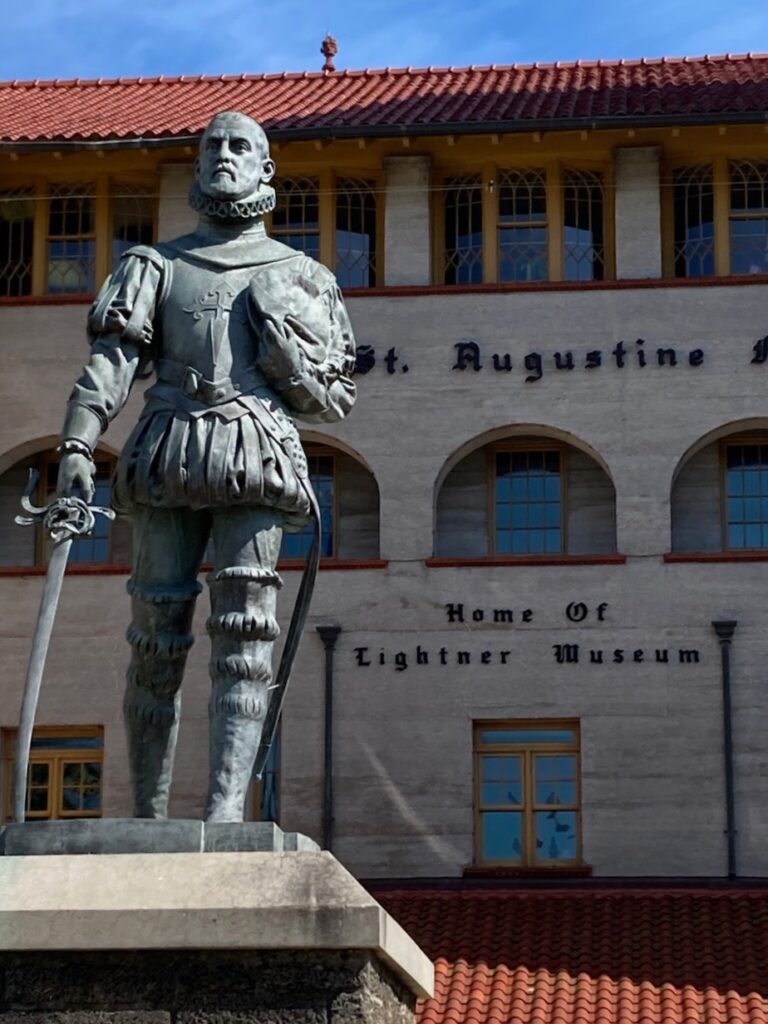

Flagler College today but built as the Hotel Ponce de León by Henry Flagler of Pigeon Key fame. Remember him? 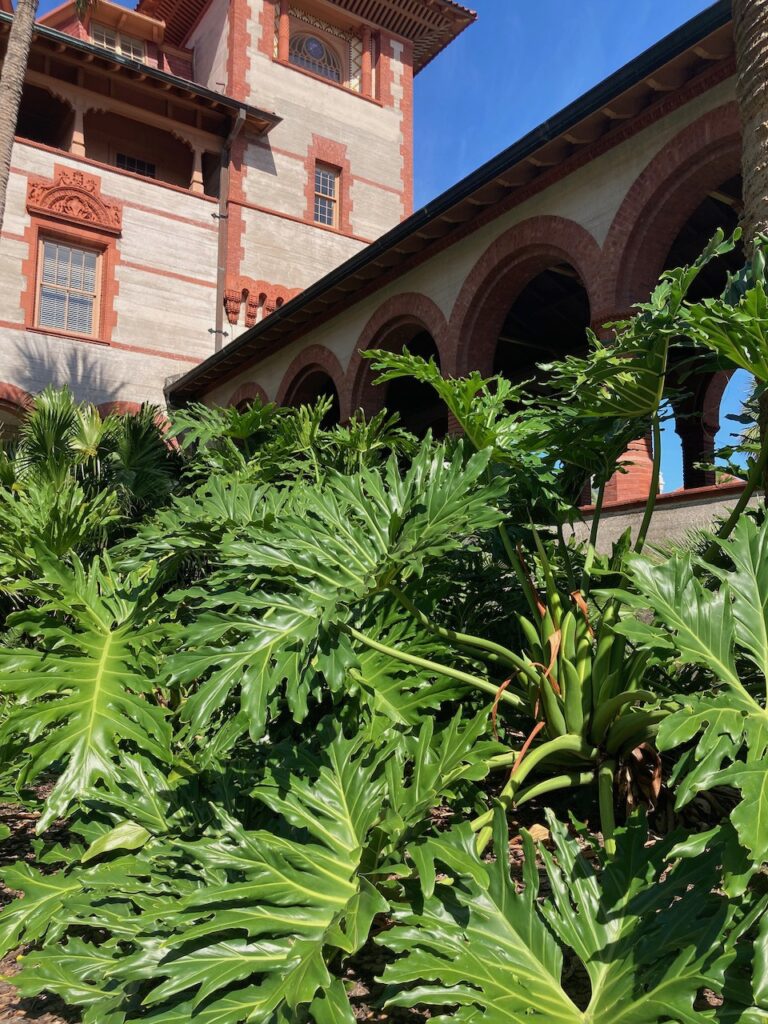
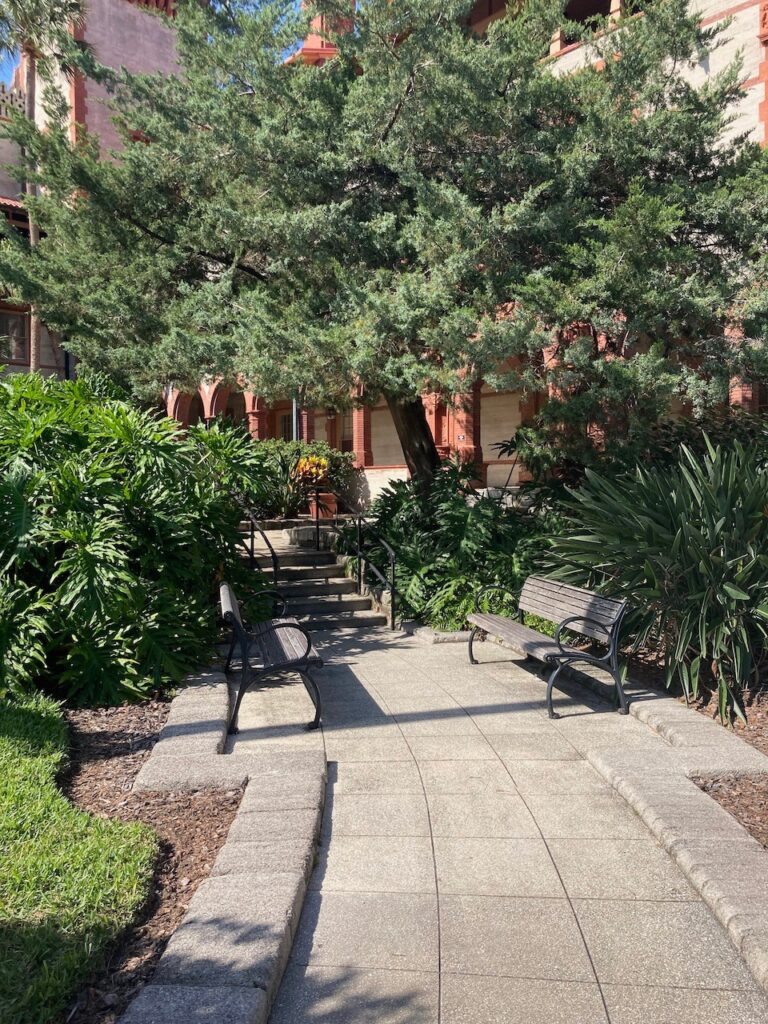
The closest we came to a hike through the underbrush… 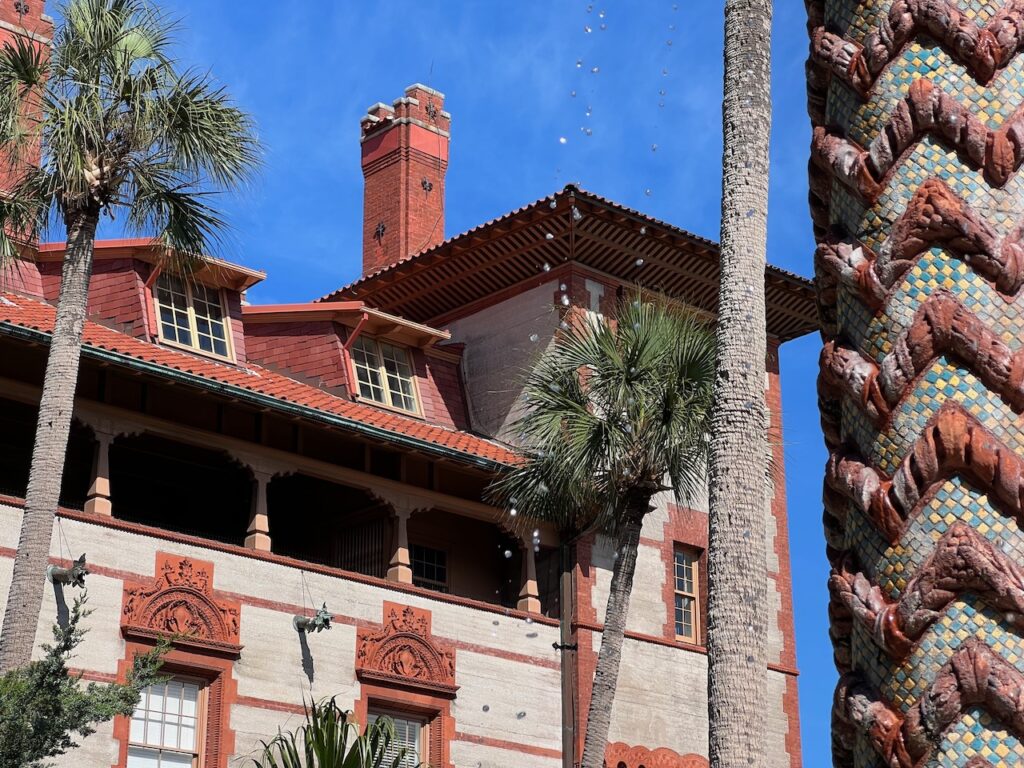
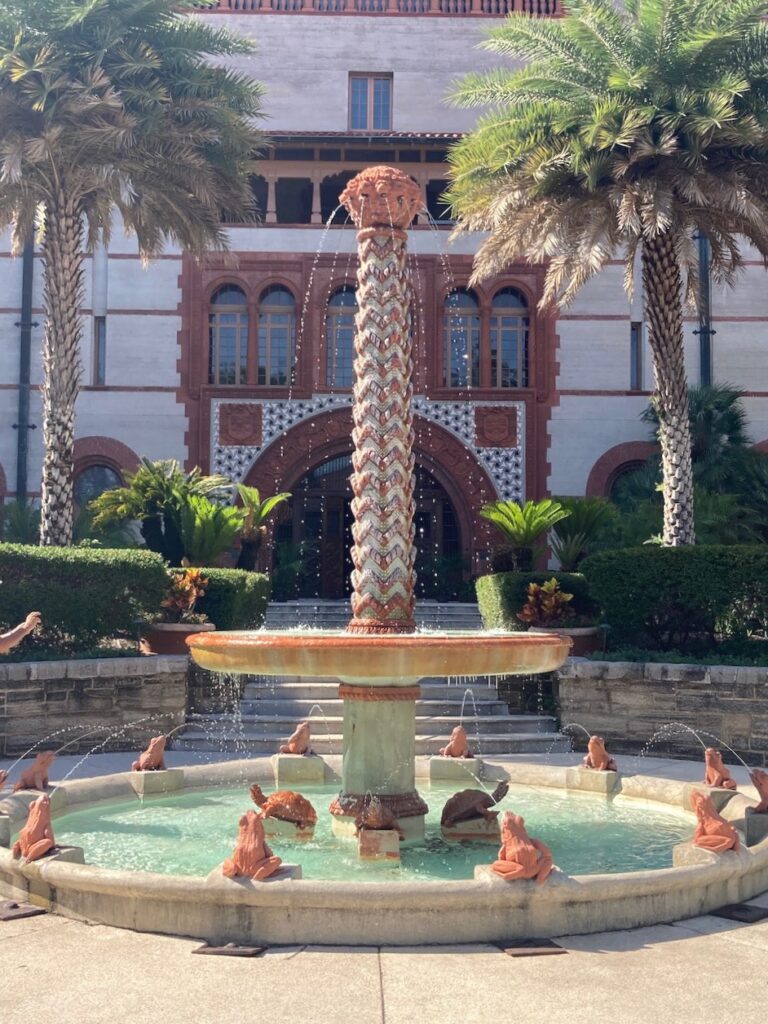
Not the famed Fountain of Youth… we didn’t need to go there … 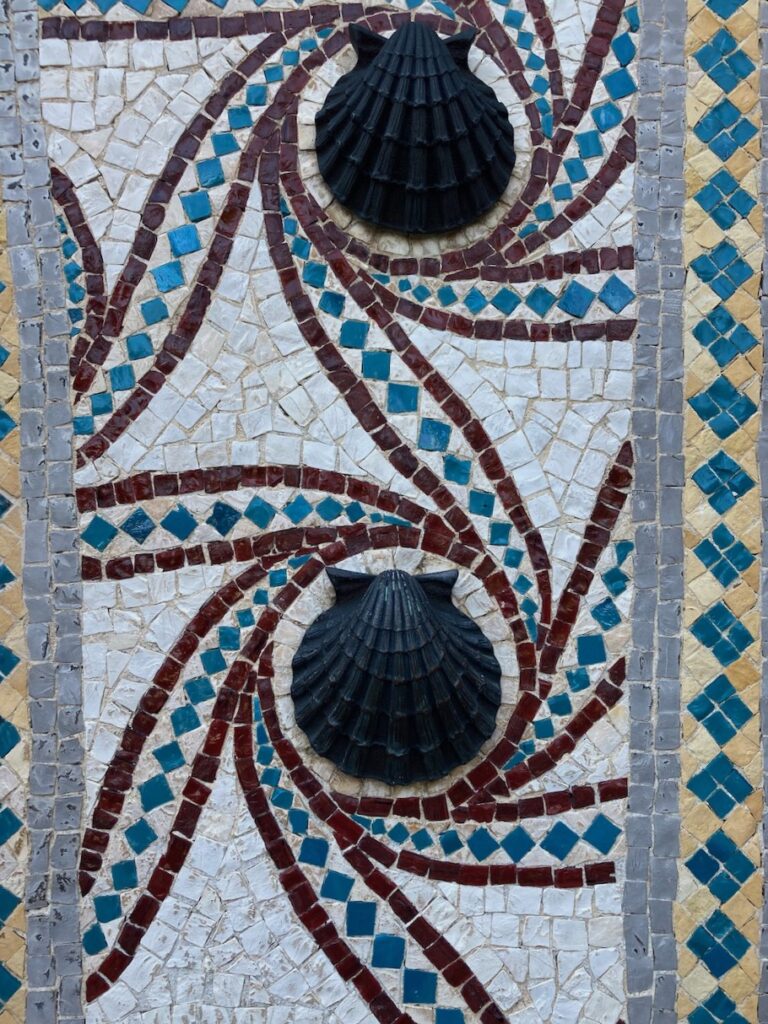
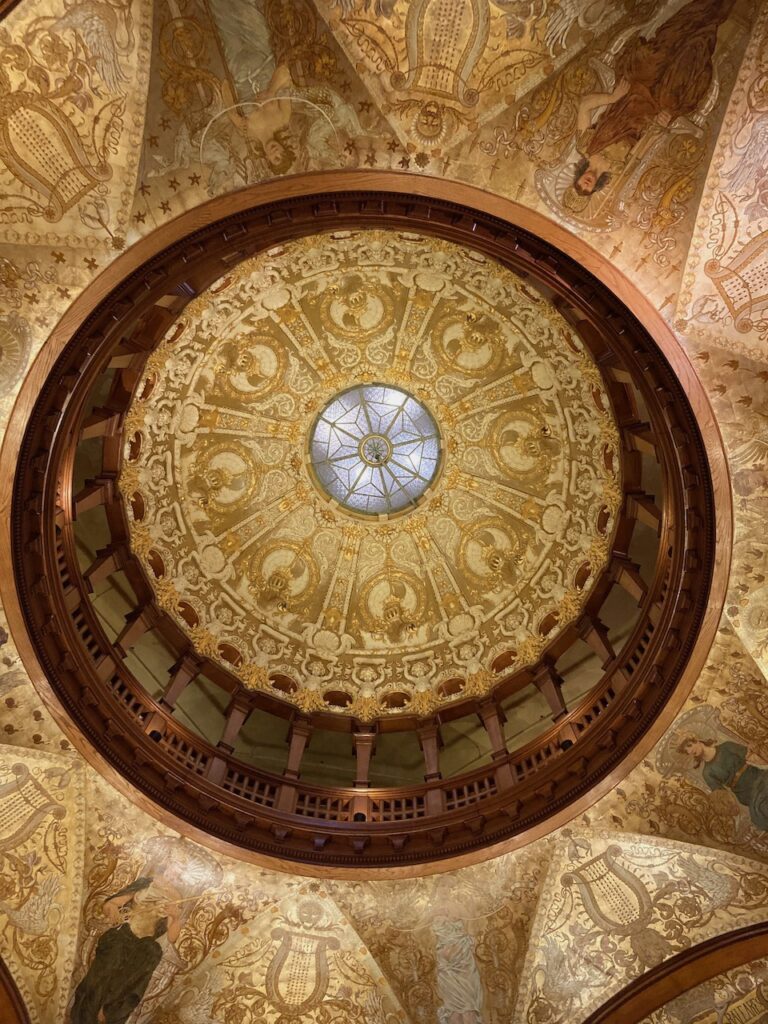

Villa Zorayda, the first building built in the Moorish/Spanish style architecture for which St Augustine is known. 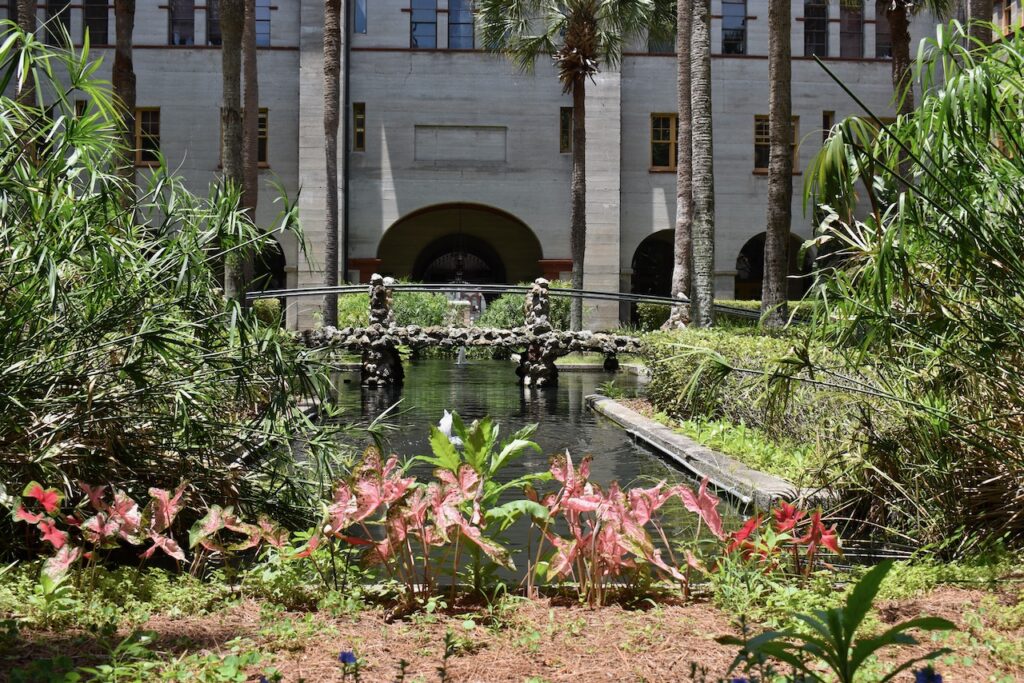
The Lightner Museum… sort of an Isabella Stewart Gardner Museum without the cohesiveness of a single collector’s discerning eye… 
… but an impressive building all the same. 
Off on the last leg! We have been as far North, West and South as we will be on this adventure so on to our wake! - Georgia Peaches
Possibly the most visually pleasing week we have spent traveling. The Atlantic ICW winds its way through Georgia bordered by endless marsh grass flats which spill into wide open bays. At the last of the bays, the Savannah River intersects the ICW and we made a trip up river to sample this southern jewel.
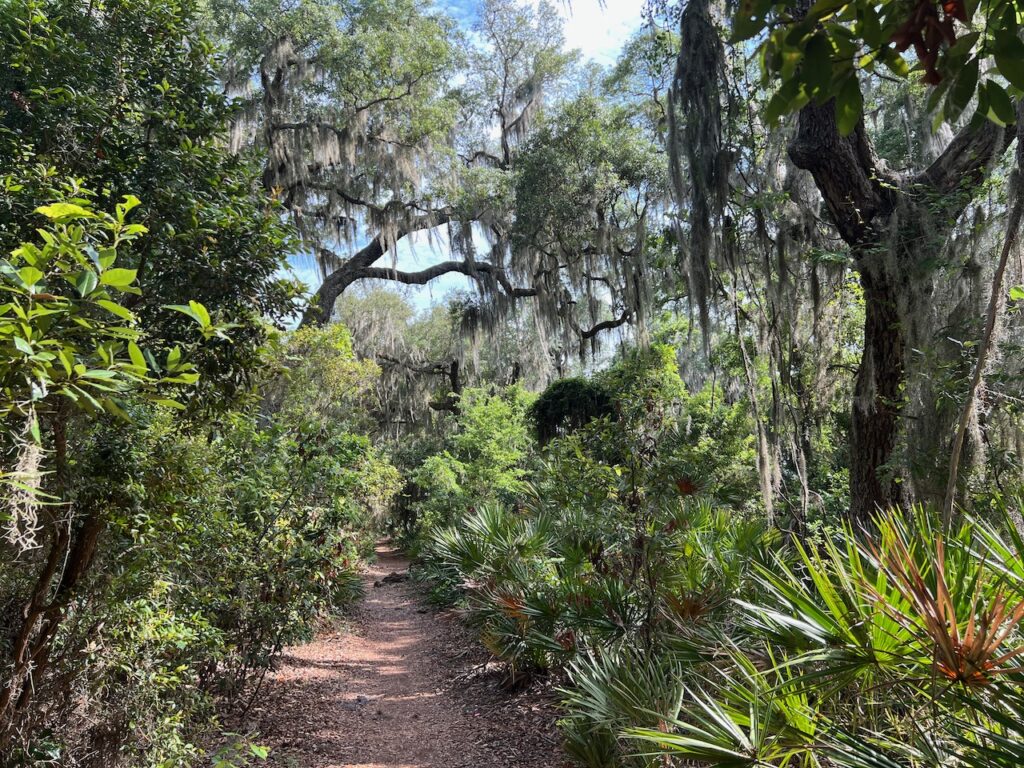
Cumberland Island’s nature trail. It led through a magical landscape of Southern Live Oaks draped in Spanish Moss. 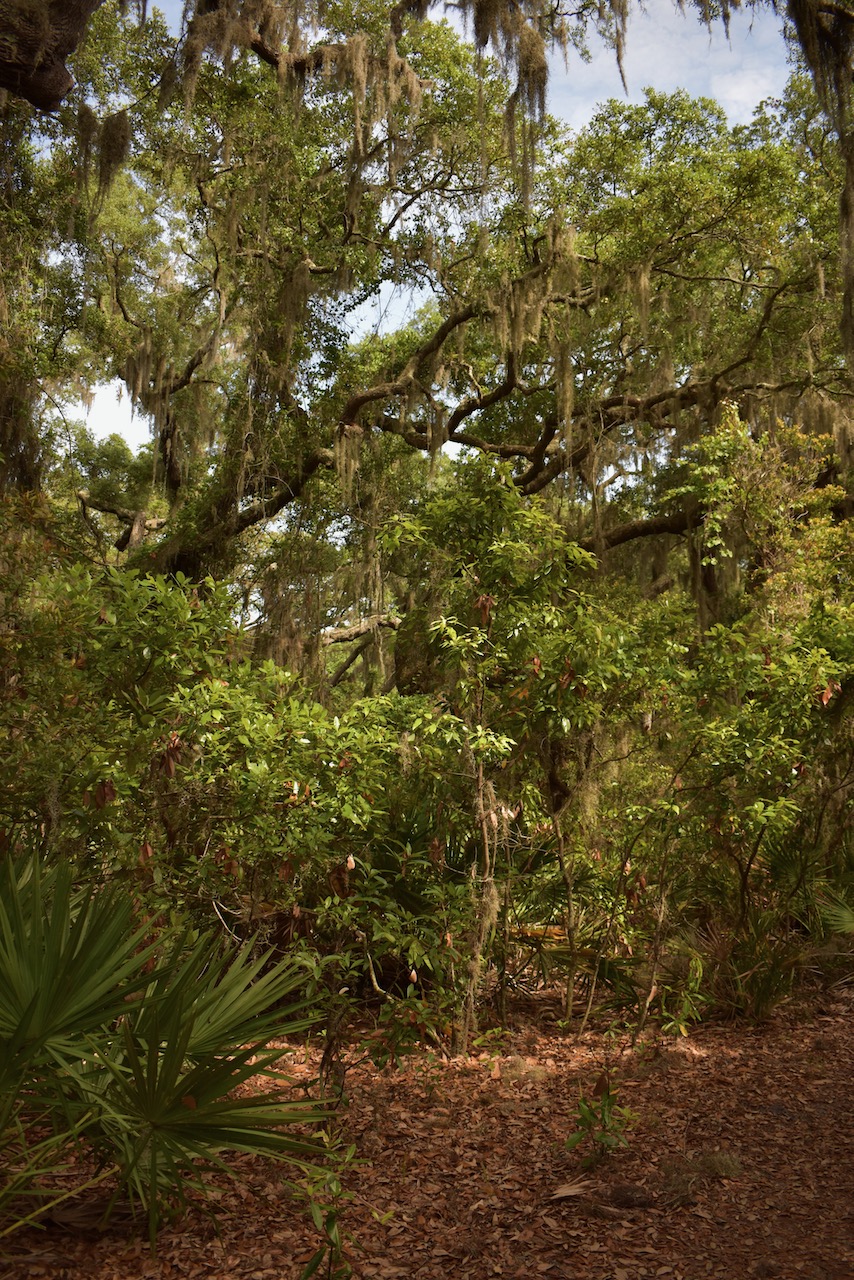
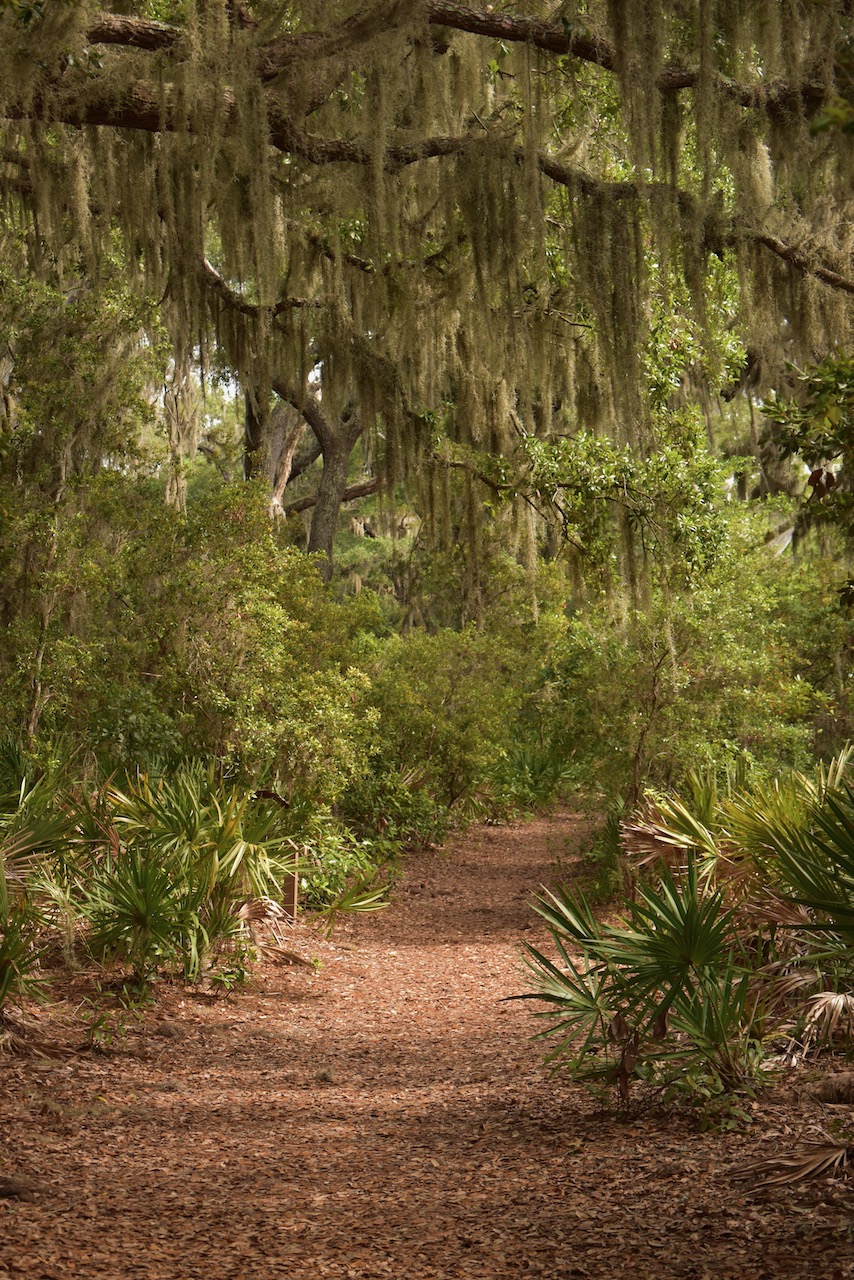
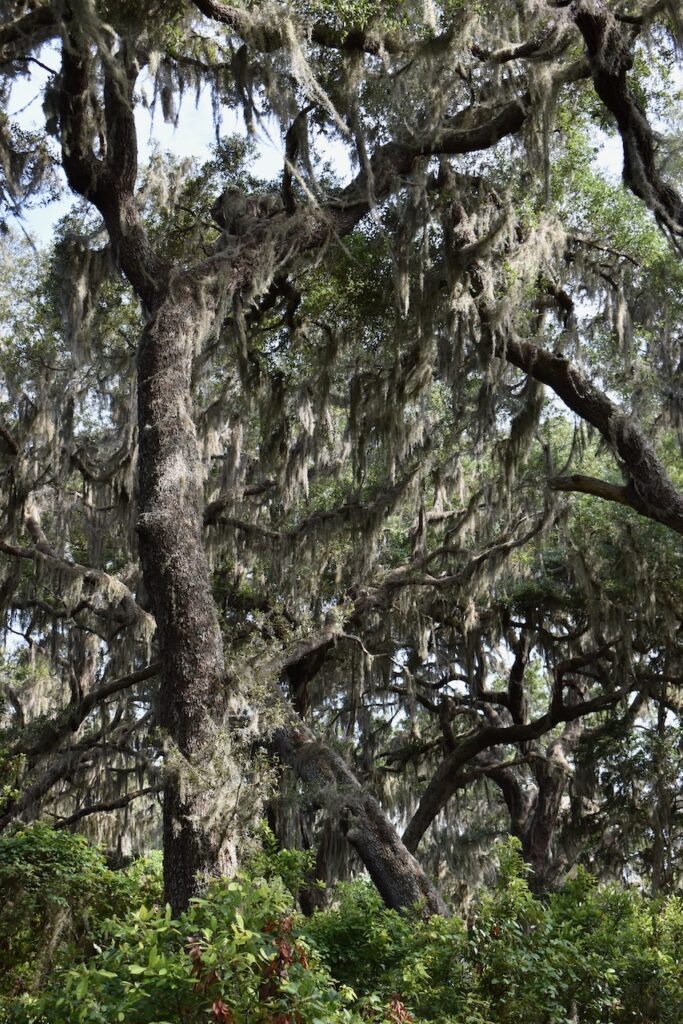
We kept waiting for a dinosaur to step onto the path… 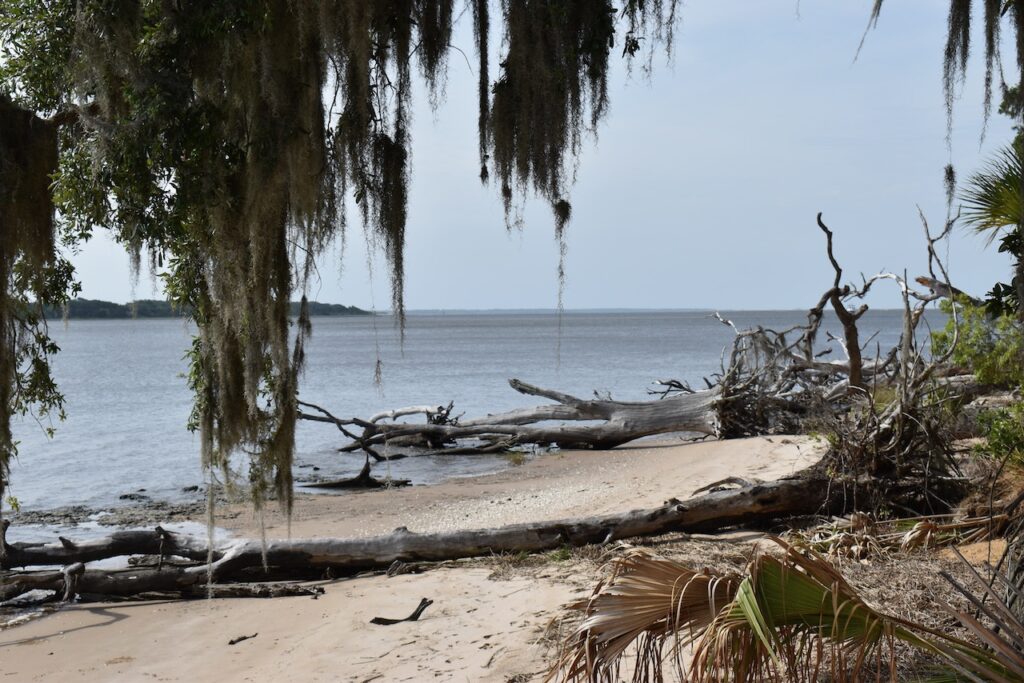
Cumberland Sound, one of the estuaries which define Georgia’s Cumberland barrier island. 
I never did find a ranger to ask how old this guy was… it reminded me of the ~400 year old Angel Tree in South Carolina. 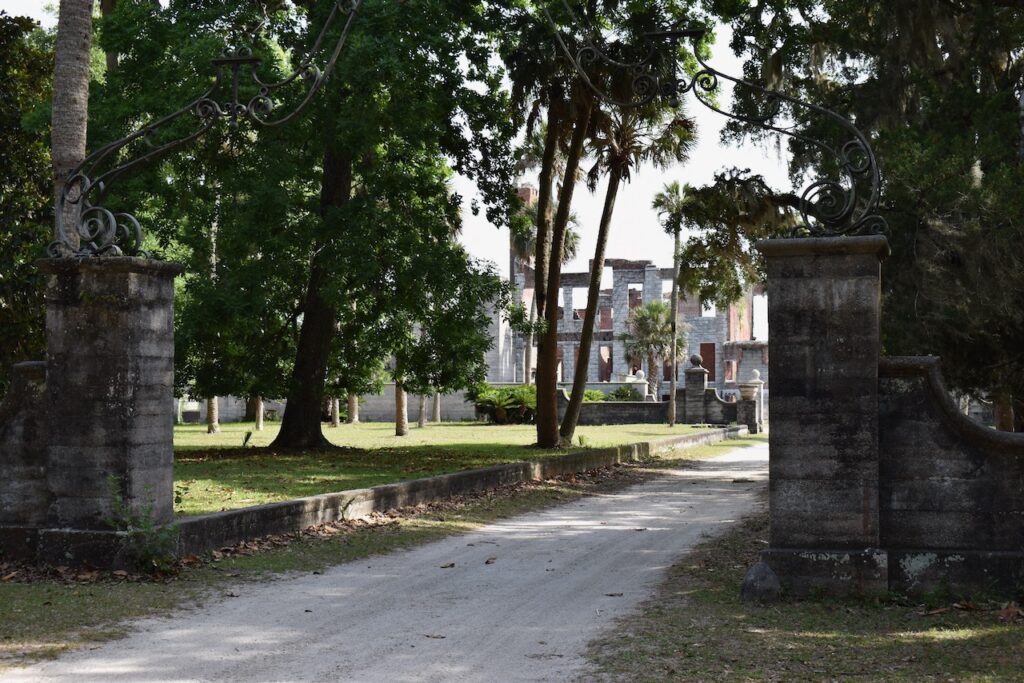

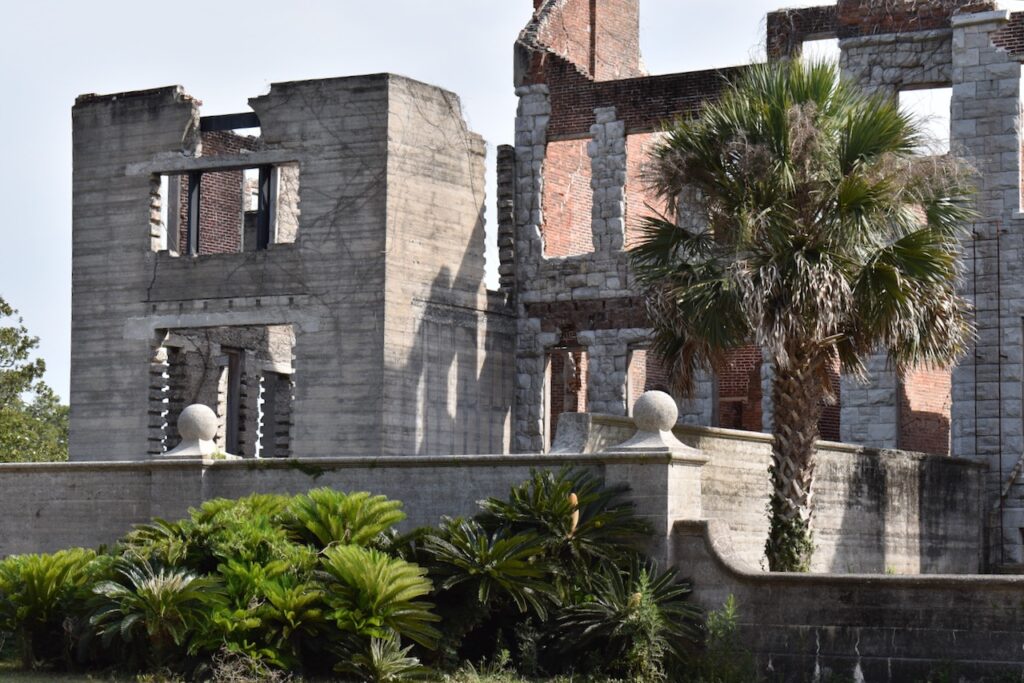
The remains of Dungeness, an old Carnegie estate.

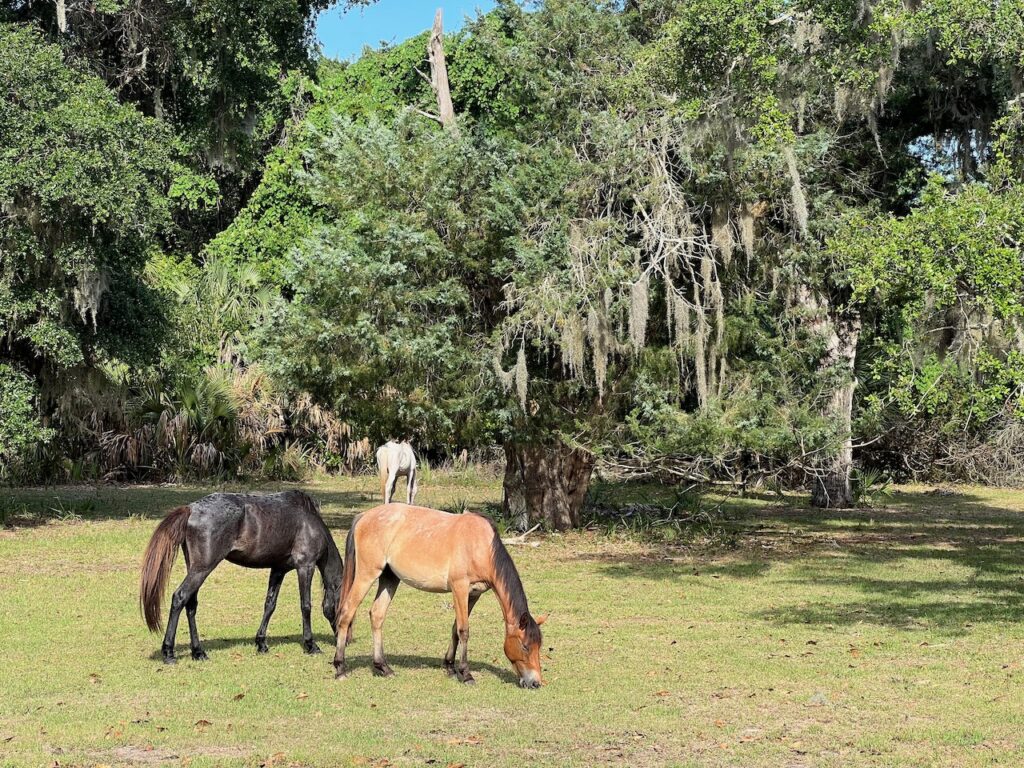
The estate included recreational fields, a carriage house, a dairy barn, multiple cisterns and gardens. Today, the only inhabitants are the wild horses who roam freely through the park.
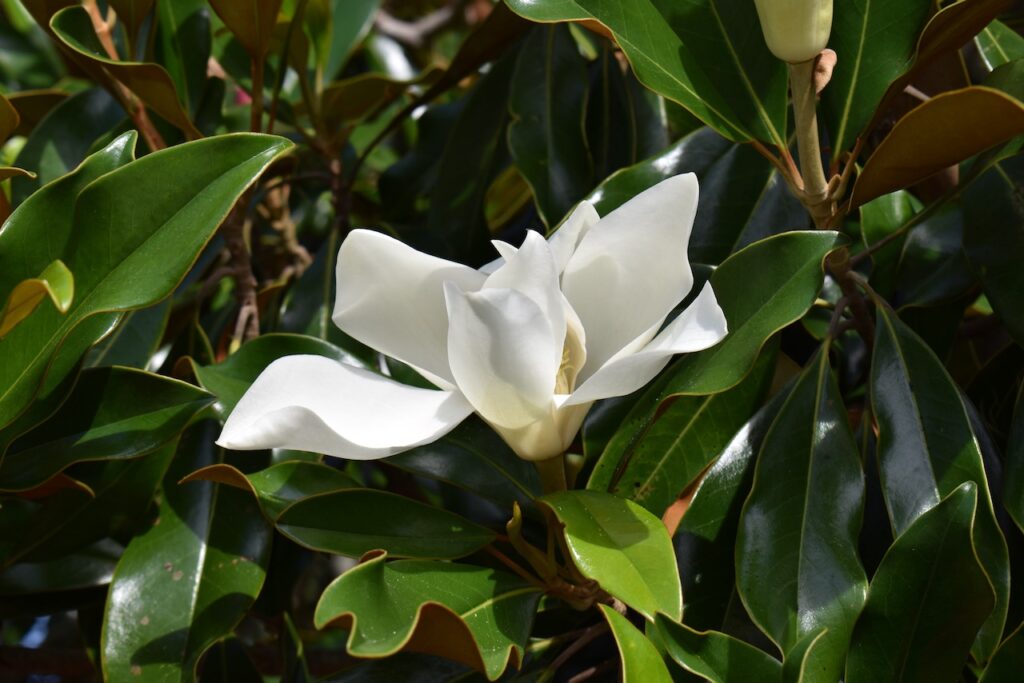
It is a shame that I can not also capture the fragrance of the magnolia… 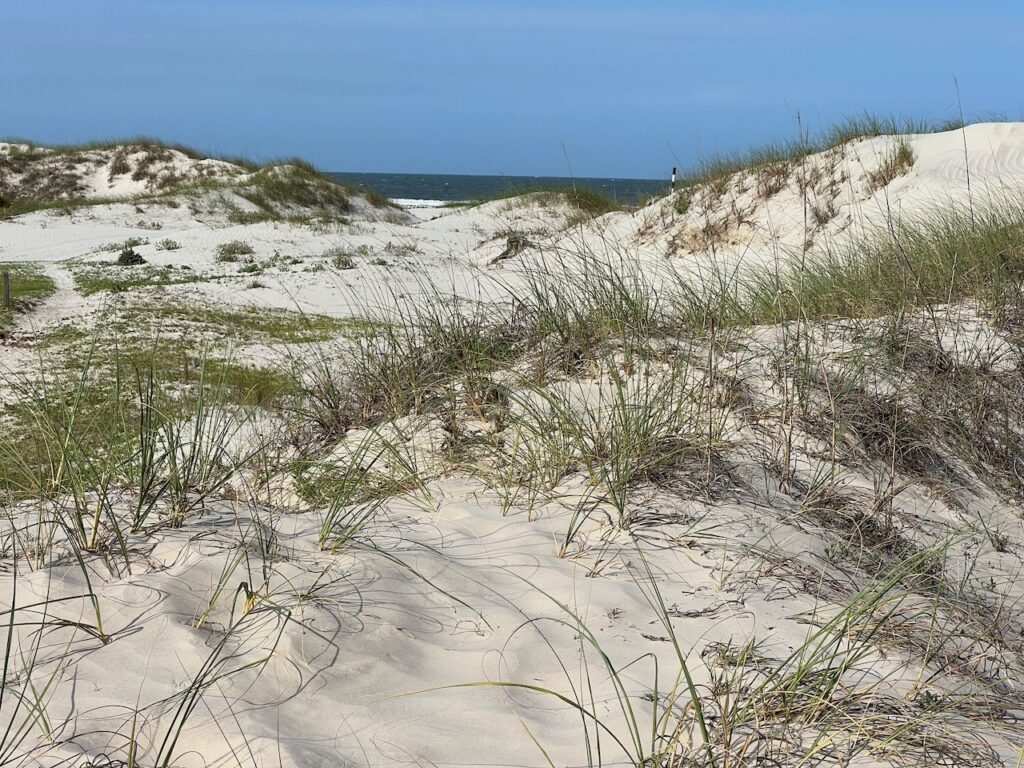
The Atlantic side beach 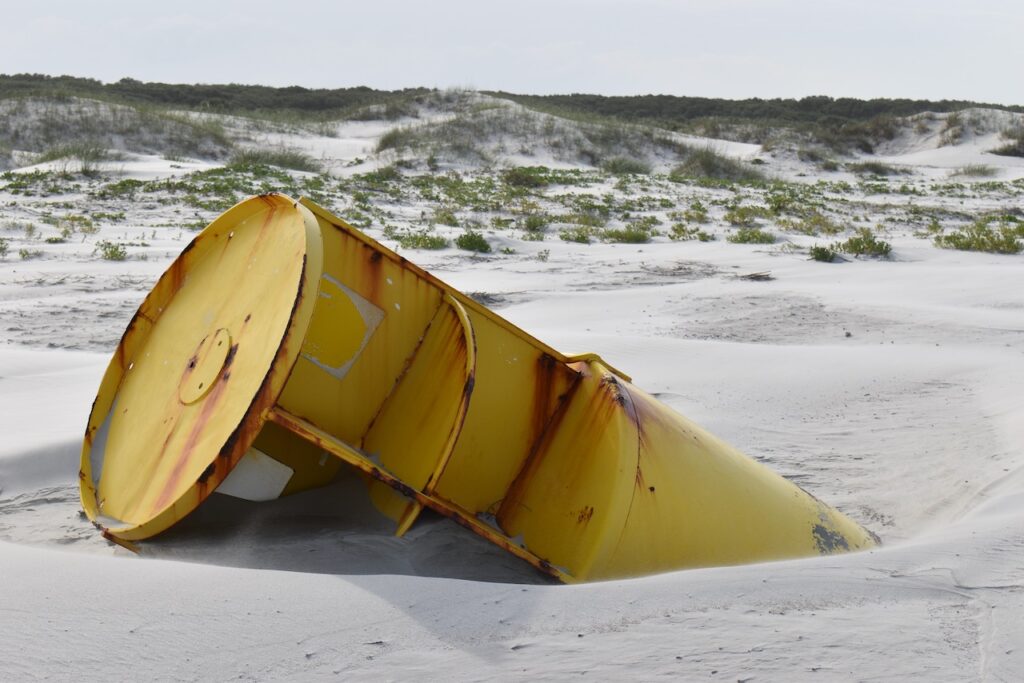
This should NOT be used for navigation!🤣 
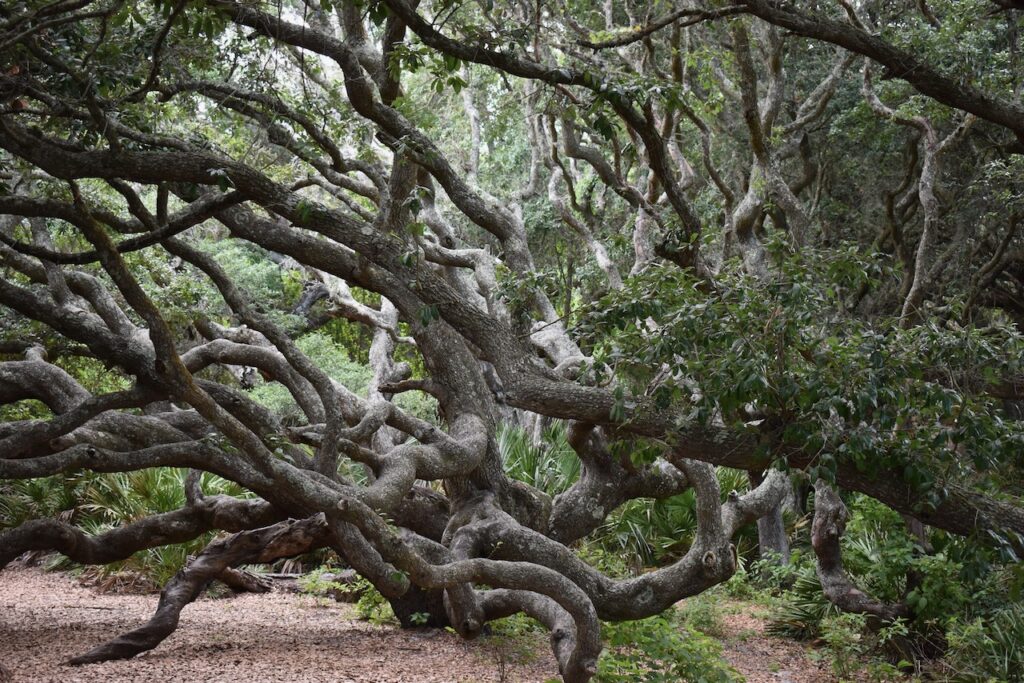
An example of salt pruning: the wind driven salt air from the Atlantic has shaped this tree. 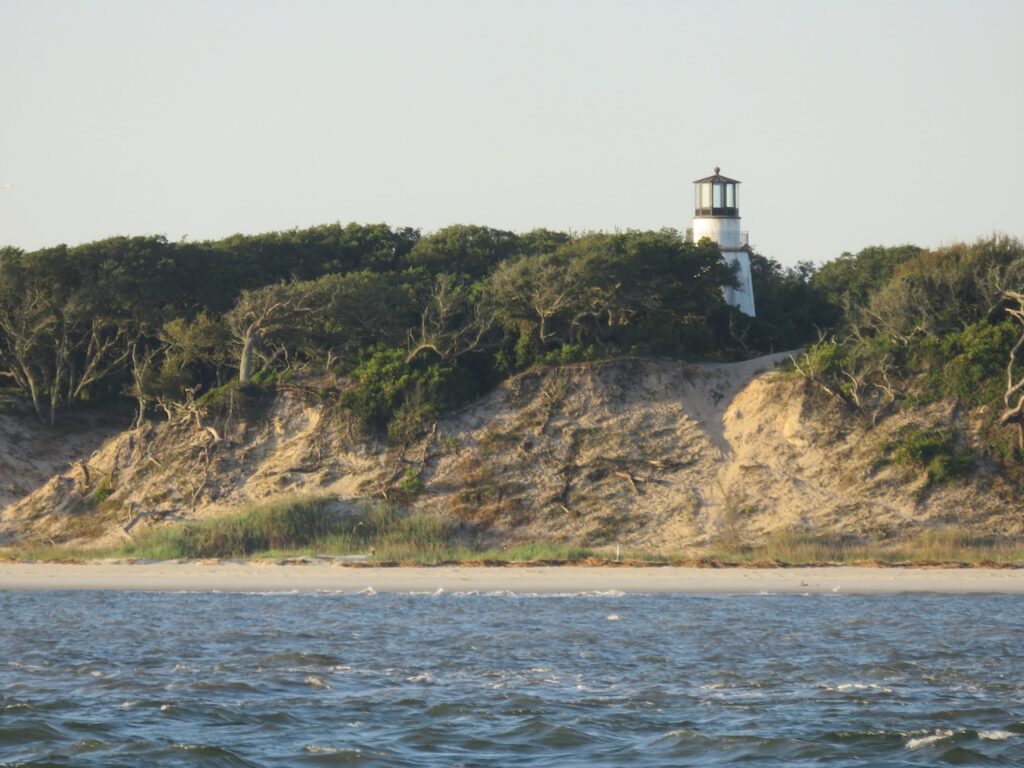
Little Cumberland Island Lighthouse 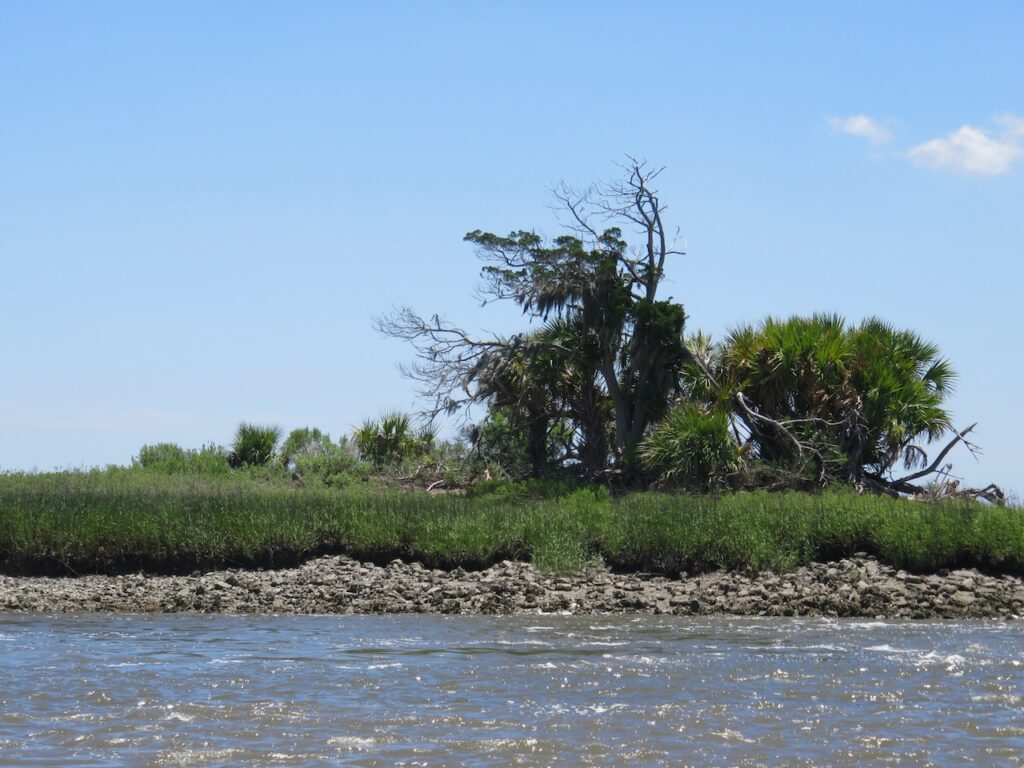
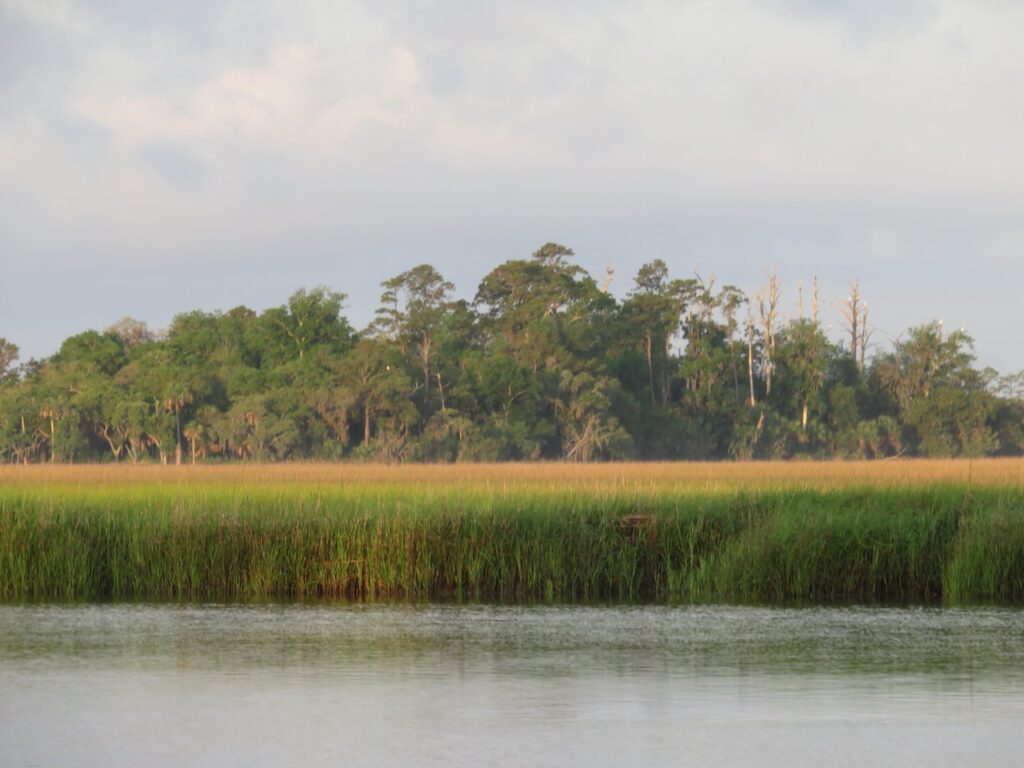
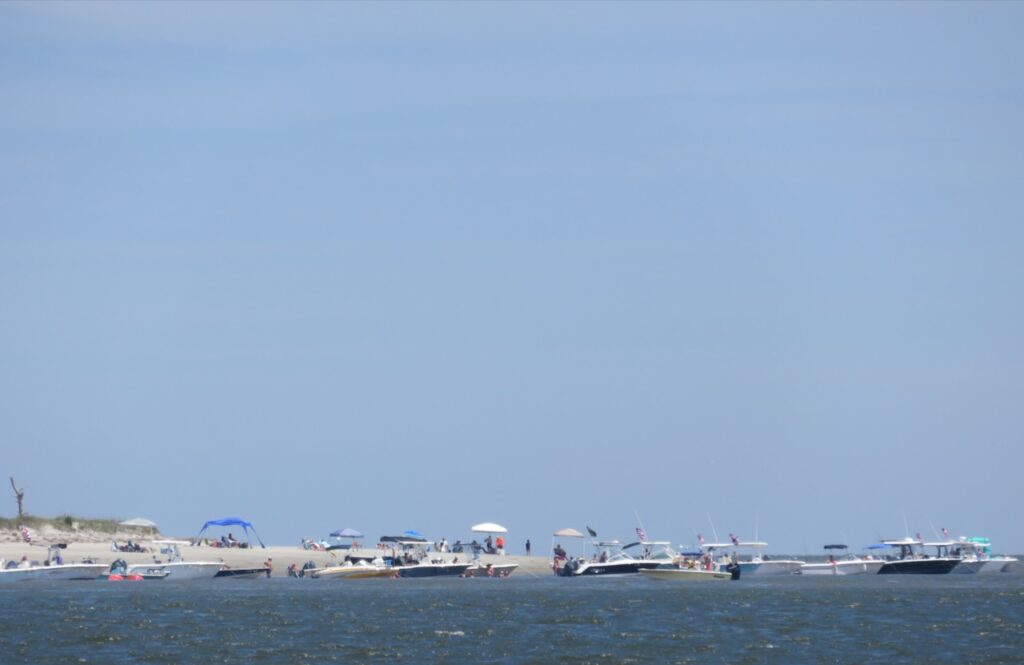
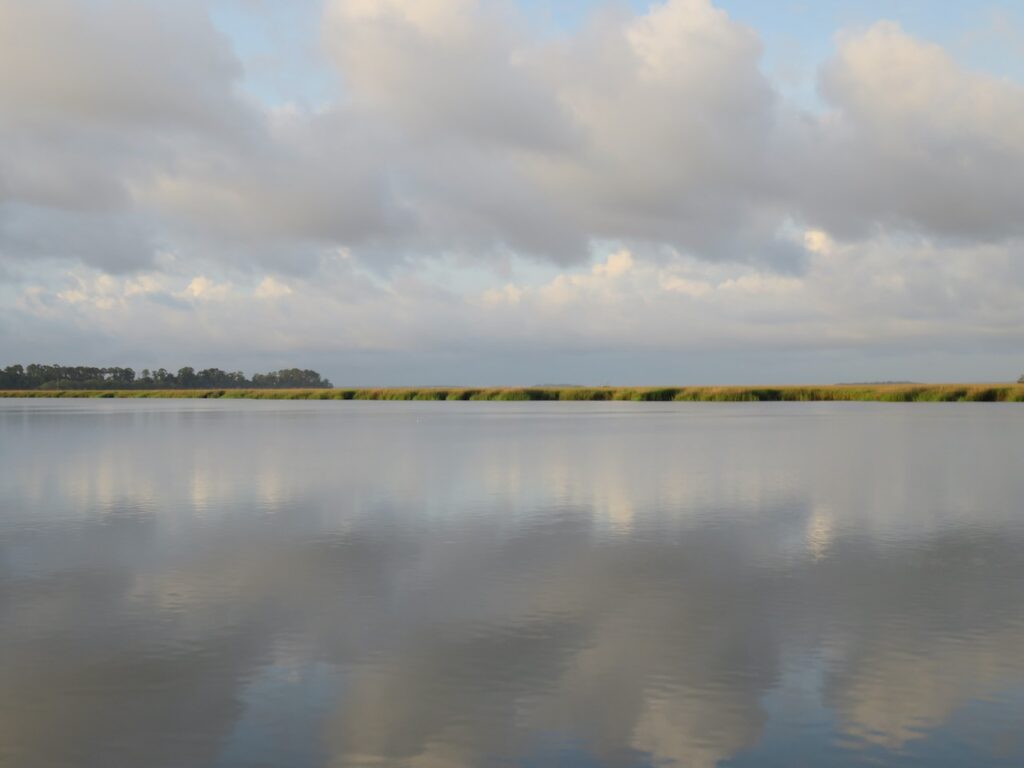
The journey up the ICW. At each of the bays the twisting river led to, sandbars at the inside of the mouth of the bay hosted “boat parties”.
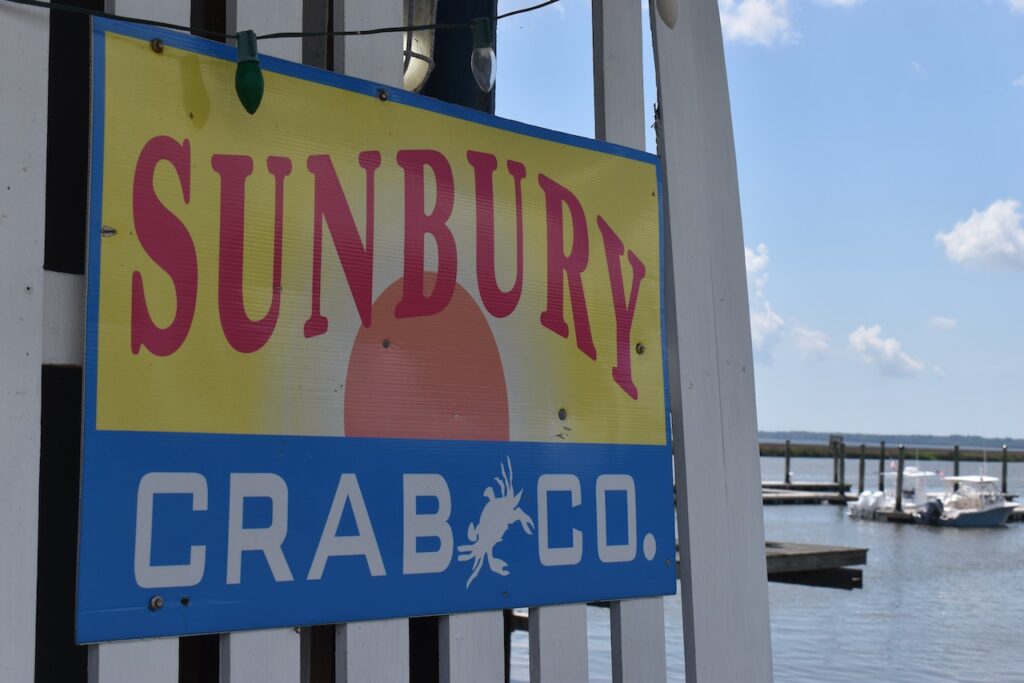
We left the ICW and traveled up the Midway River to stay the night on the Sunbury Crab Company dock. Here we learned how delicious (and large) a seafood platter can be and how to eat a steamed crab. 
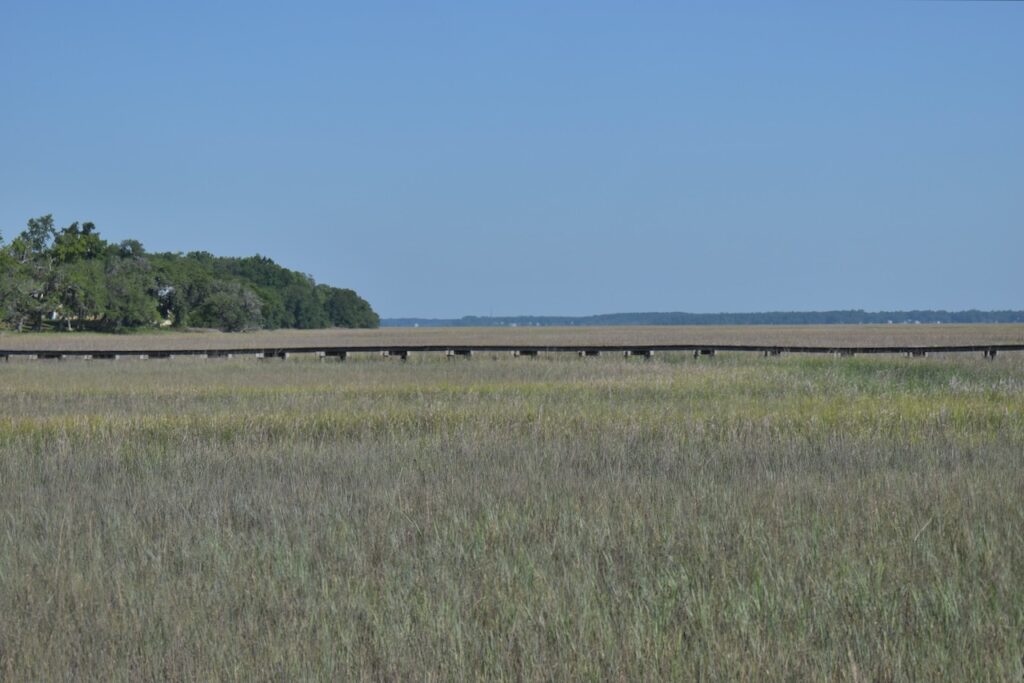

Sunbury was once the 2nd largest port of entry of the Colony of Georgia, after Savannah, but is now only a quiet collection of residential properties. 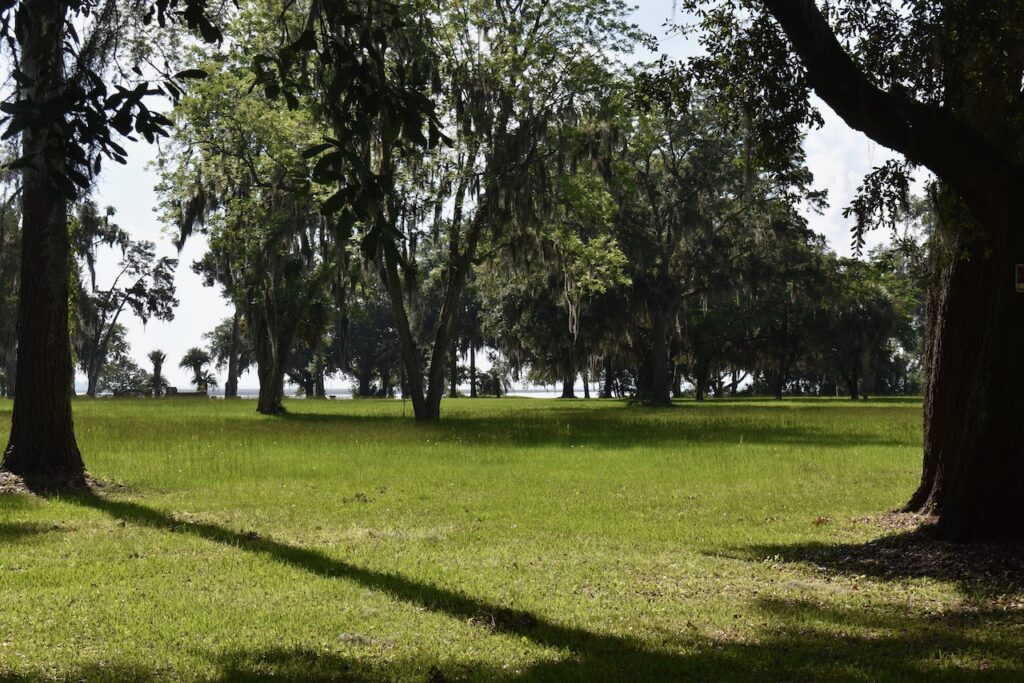
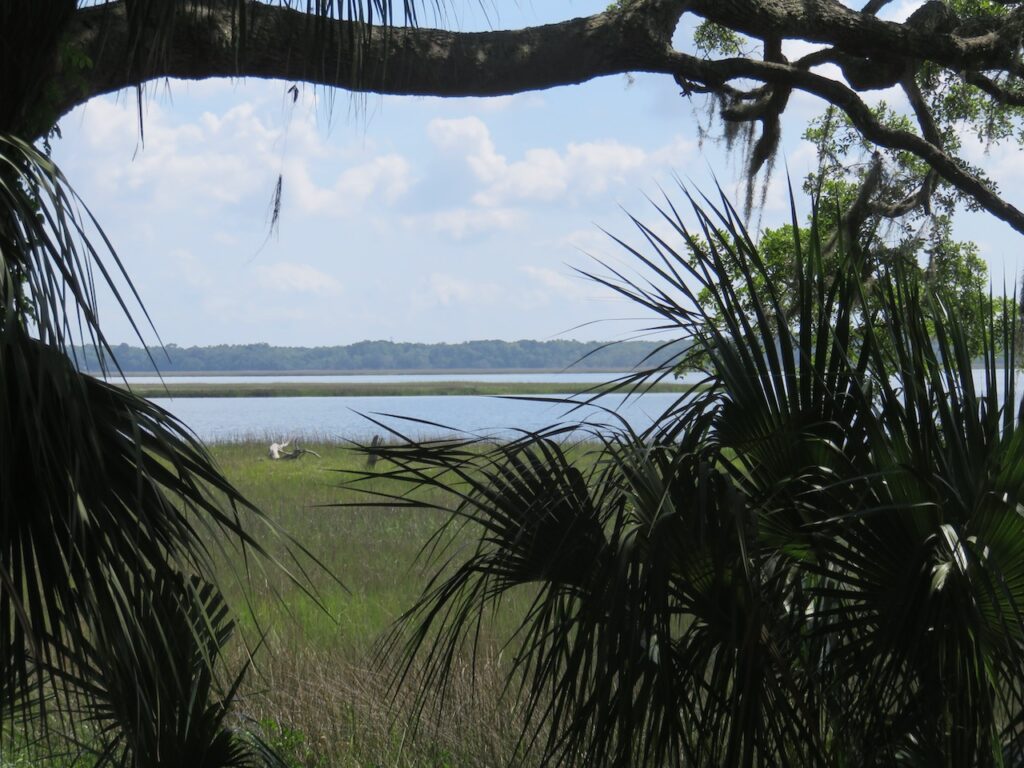
We walked through the settlement to Fort Morris, a Revolutionary era fort built to protect Sunbury. Today’s lovely views down the river illustrate how well suited the location of the fort was for protection. 
When we sat down so many years ago and crafted the list of where to go and what to see, Savannah was one of the top five. We were not disappointed. 

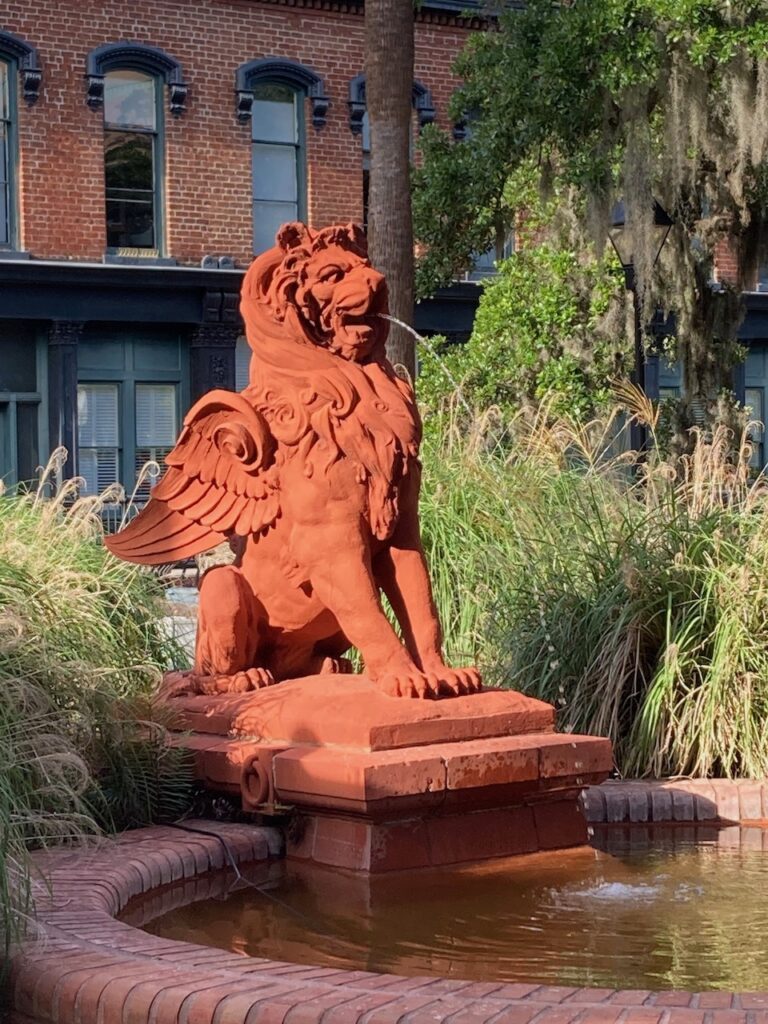
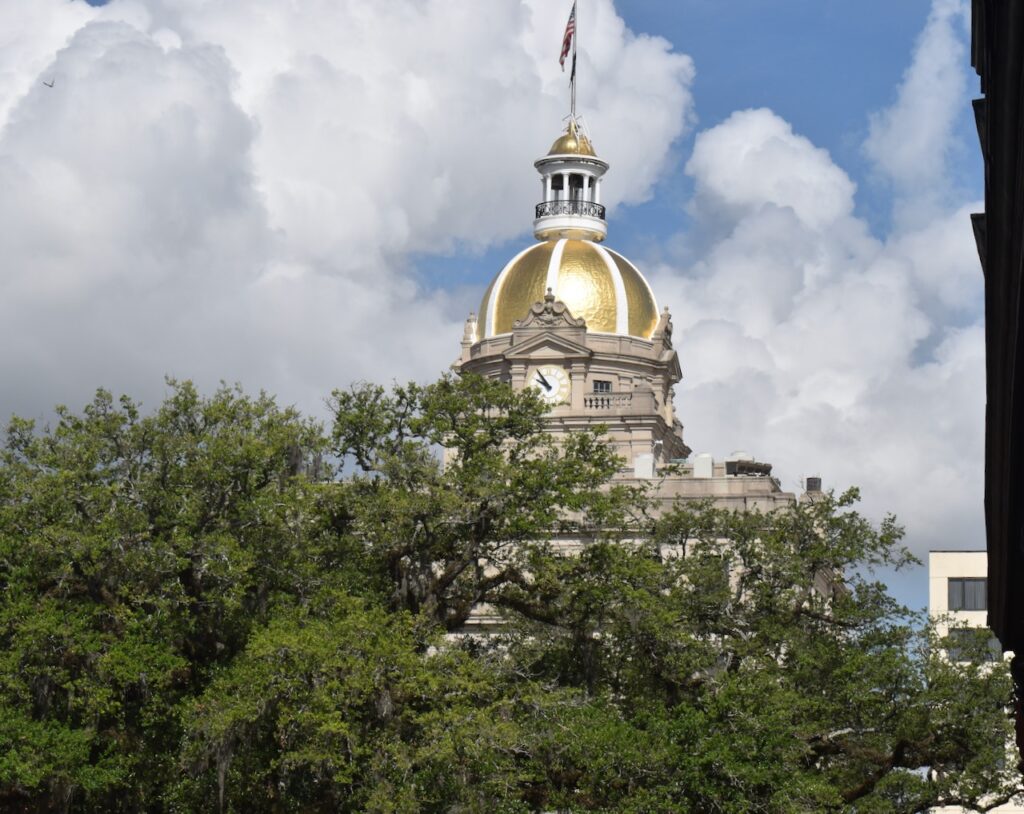
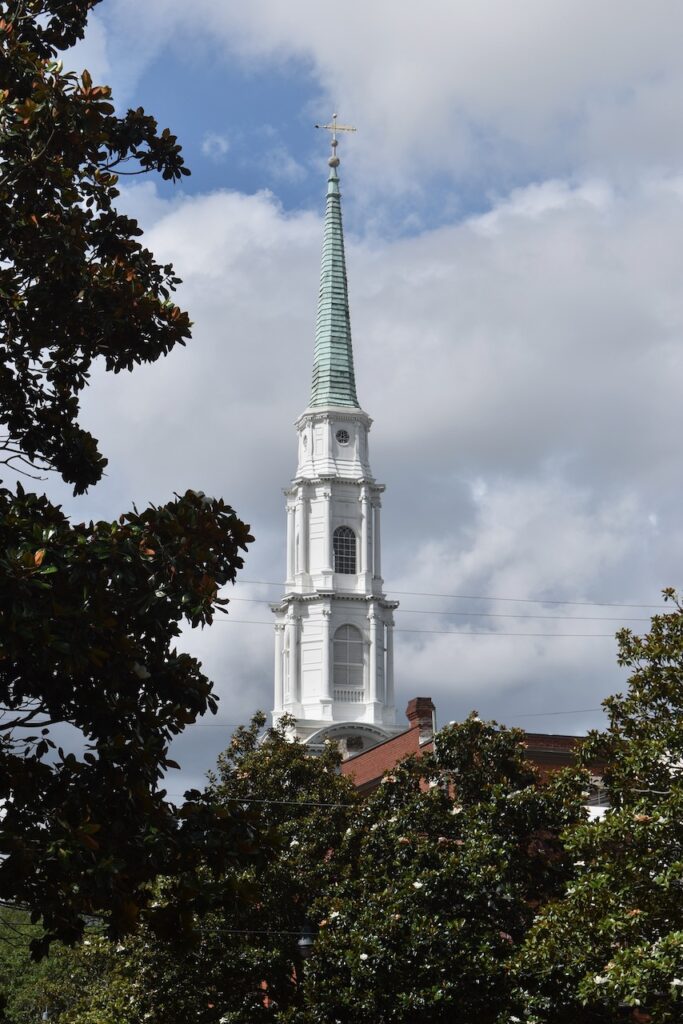
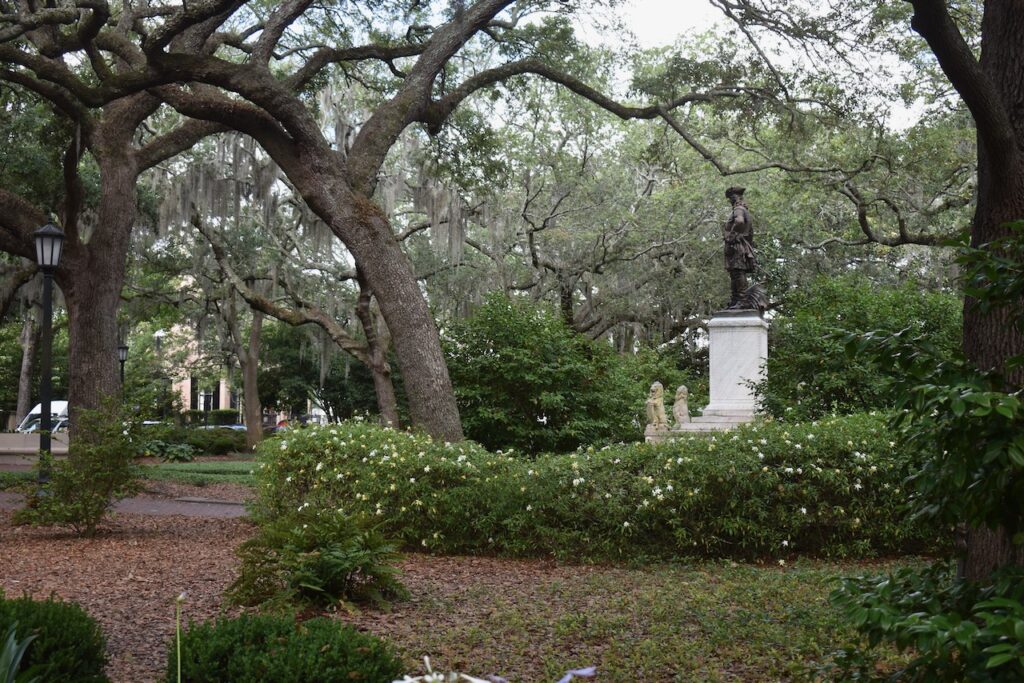
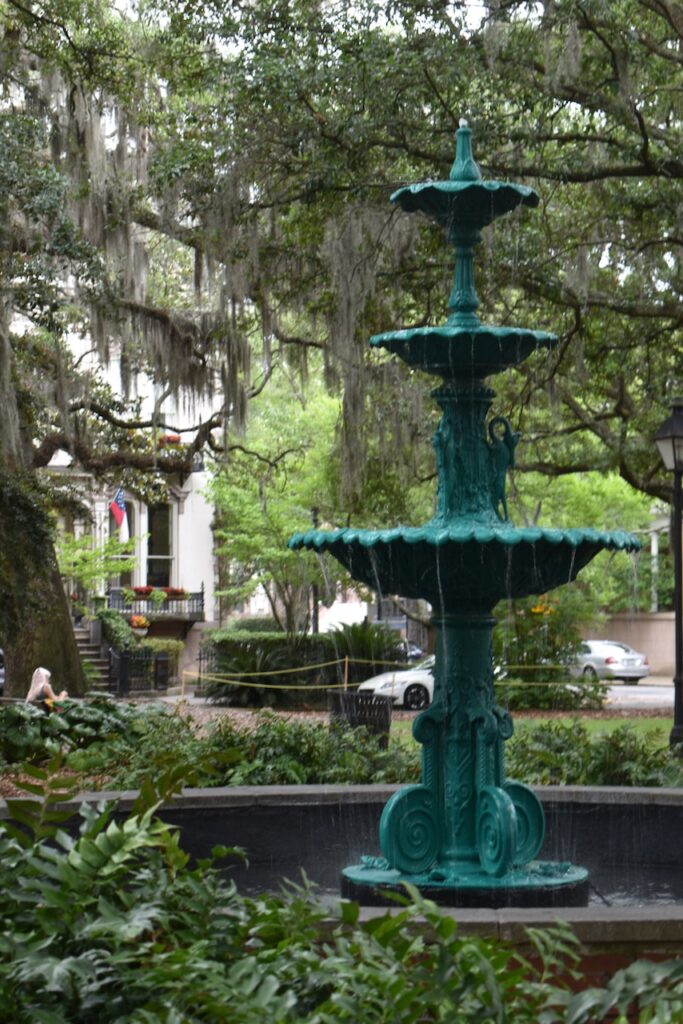
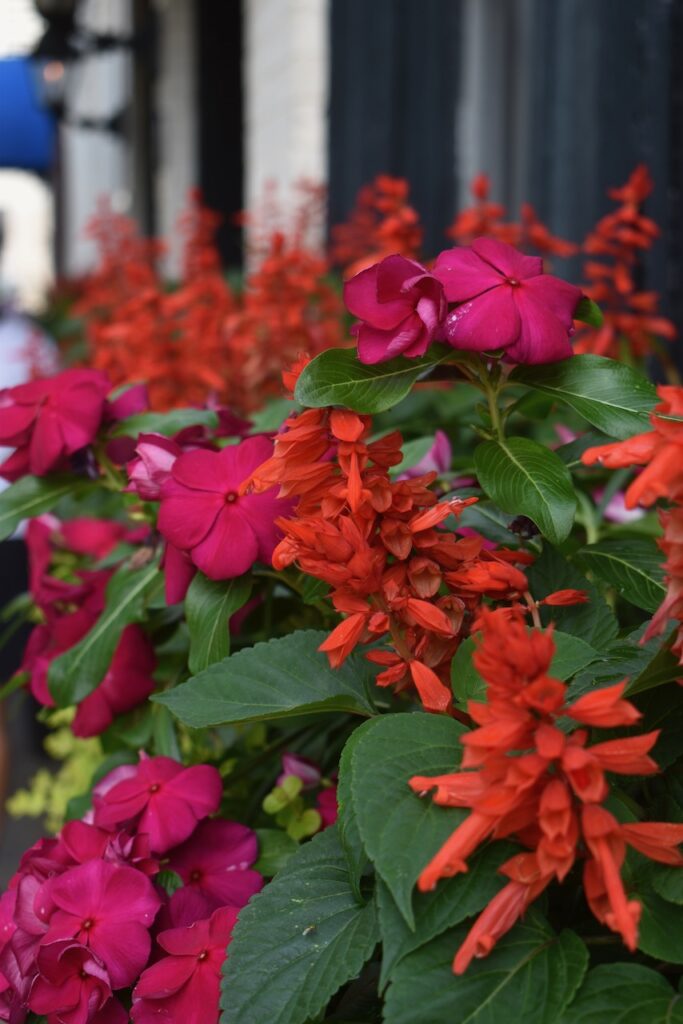
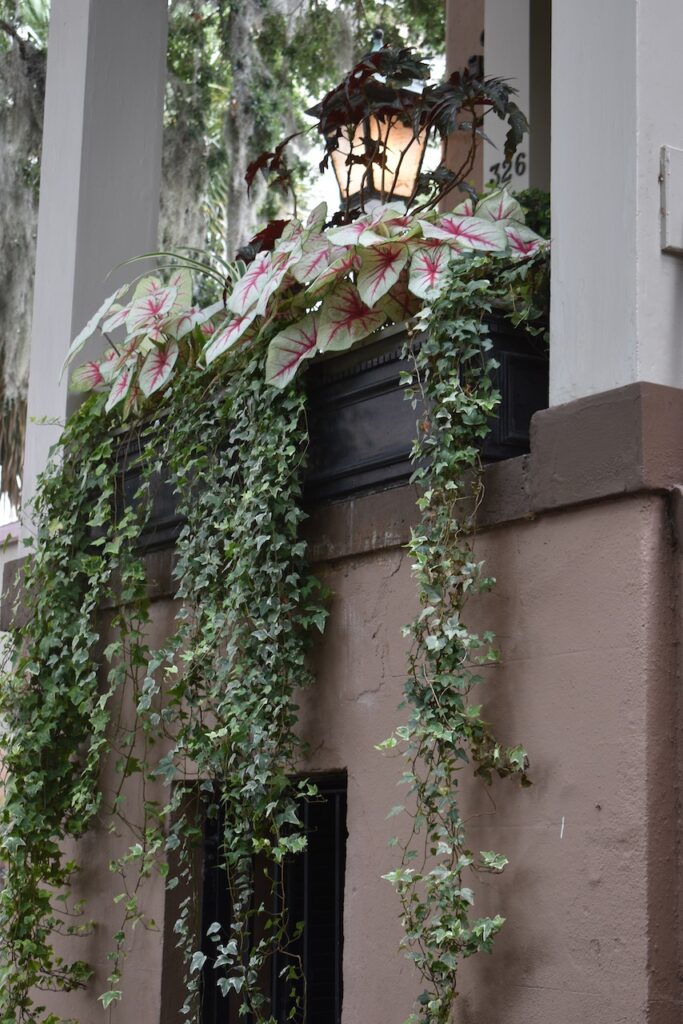
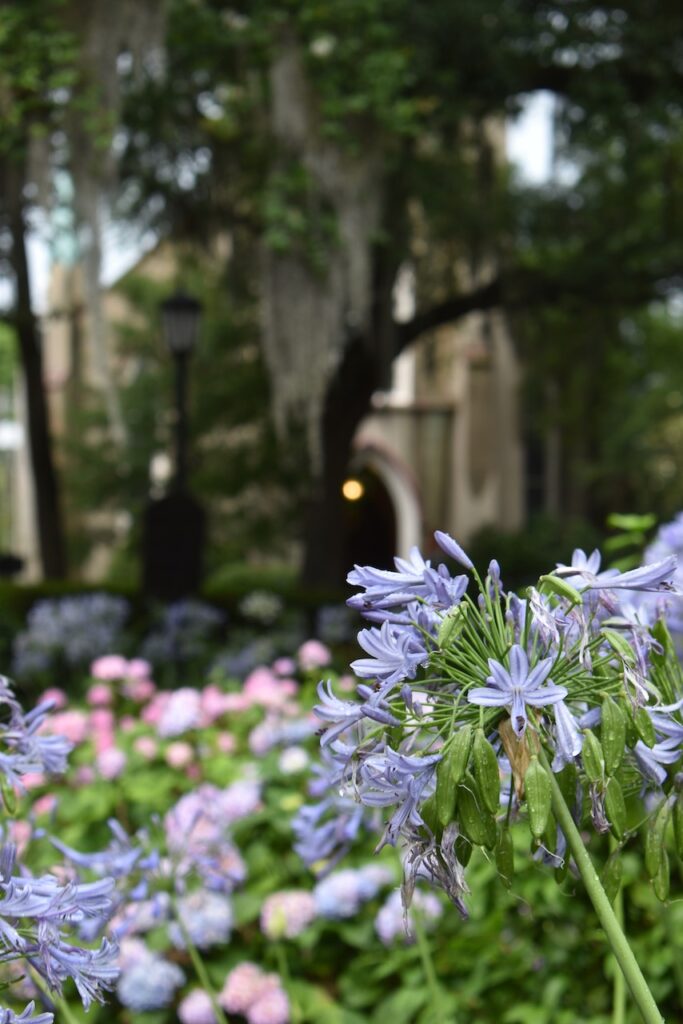
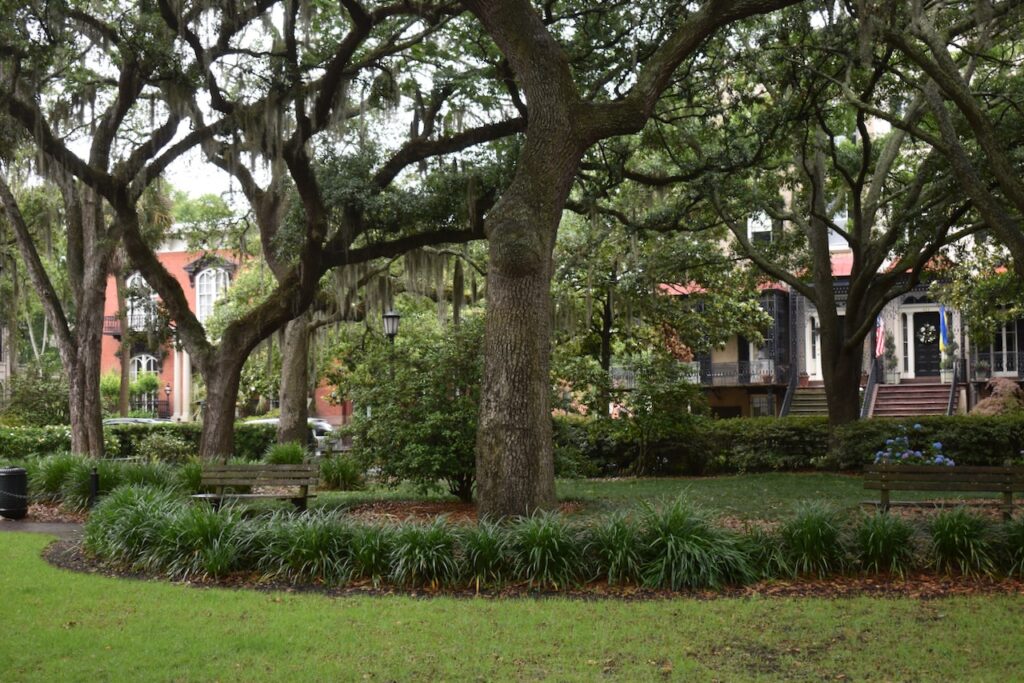


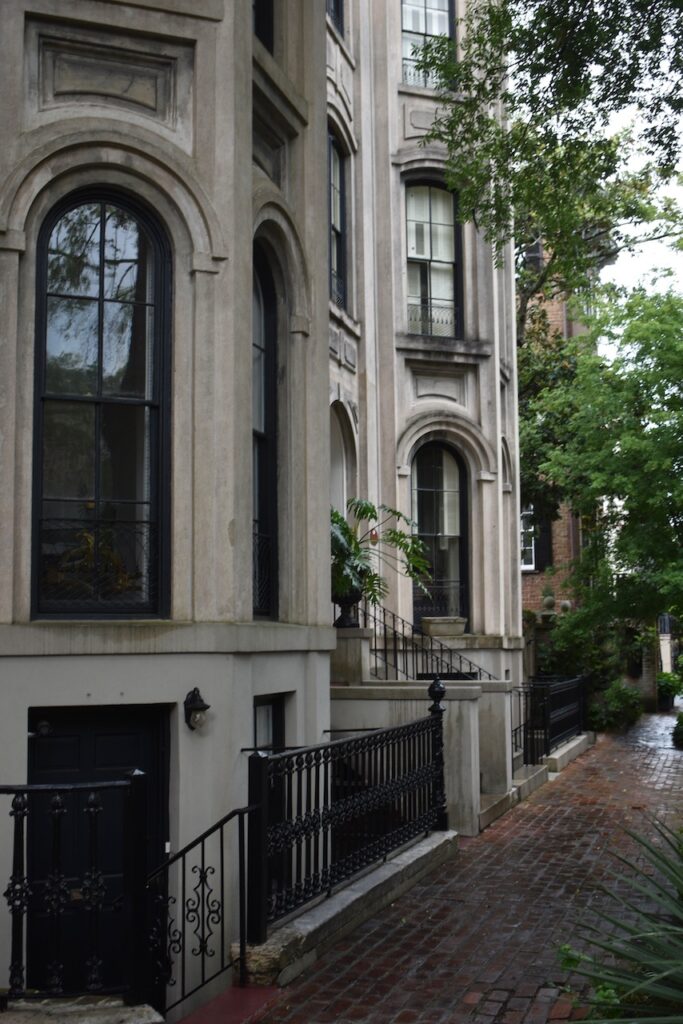
We stayed on the waterfront, in the historic district. In many ways, the area was reminiscent of Boston… but we decided it was softer and more generous… with space, time, color… 
Colonial Park Cemetery 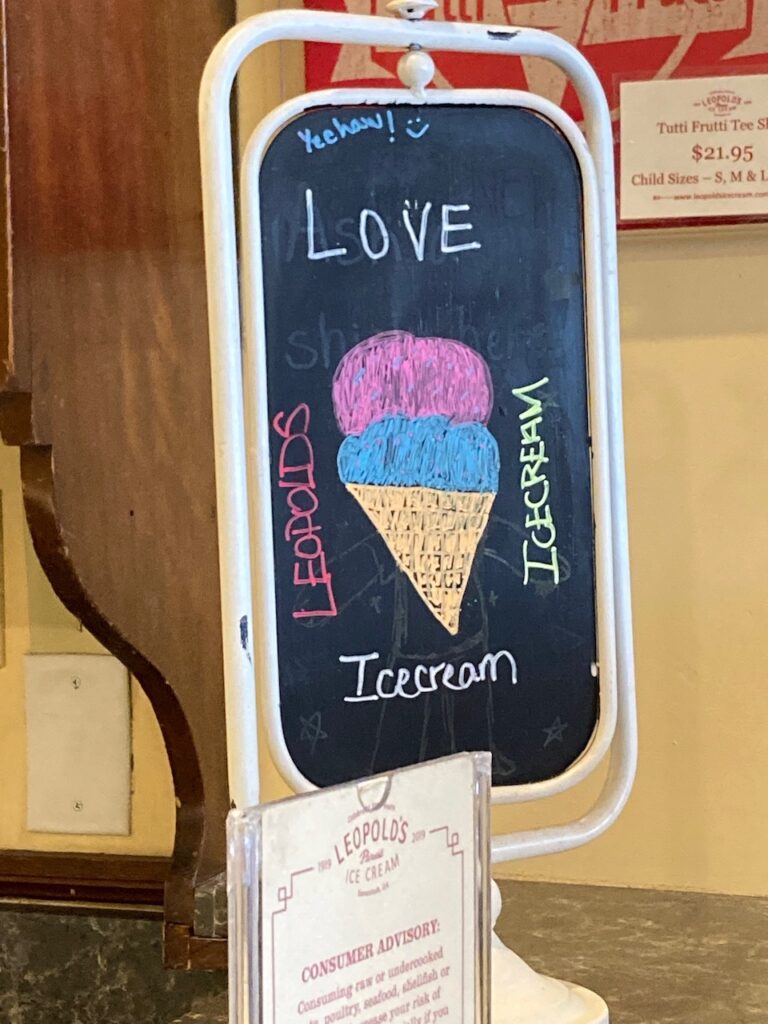
Our favorite “restaurant” in Savannah! (They ship nationwide! We highly recommend the Lemon Custard and the Savannah Socialite 😋😋😋)
https://www.leopoldsicecream.com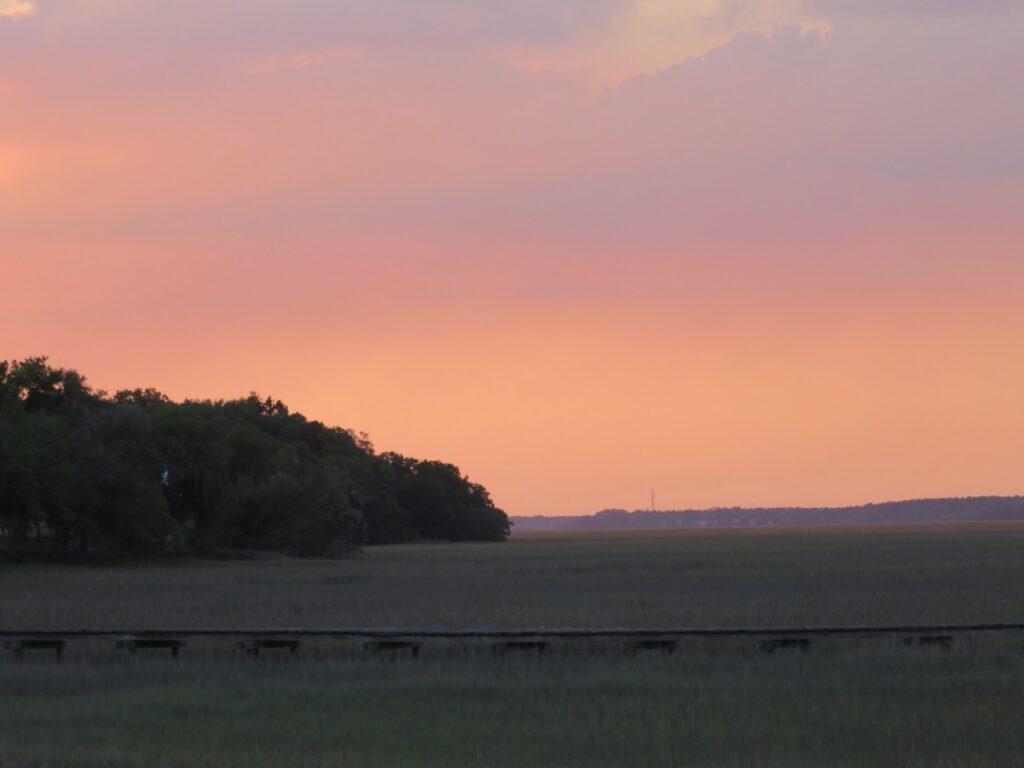
Even the sky in Georgia is peach! - Laying Low in Low Country
Or summering in South Carolina. We added four additional weeks to our wonderful one week vacation on Kiawah Island which is why we hadn’t moved if you’ve been watching. The add was not altogether voluntarily and certainly not planned; we limped into the marina with a slipping transmission and no windlass for the anchor. We assumed that we would enjoy the week on Kiawah while waiting for the replacement parts, complete the repairs then move on. I think the shipping companies went on vacation, too…
If nothing else, this adventure has taught us to be flexible and, as all of the envious vacationers we met in the marina were quick to remind us, there are worse places to get stuck…
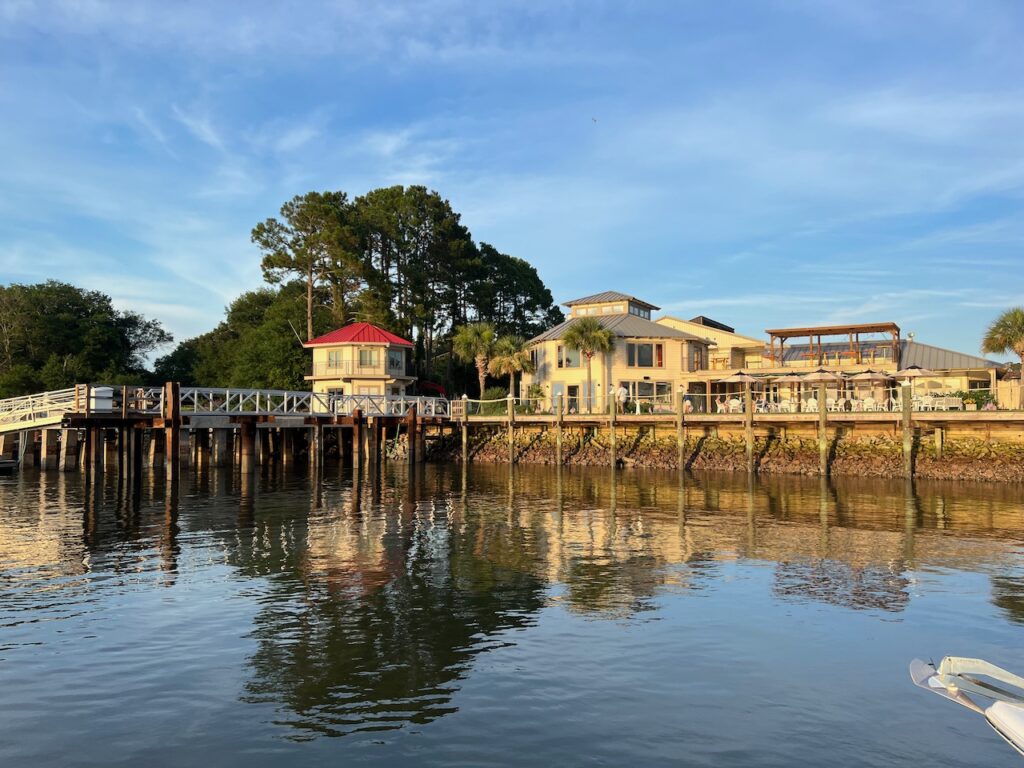
Bohicket Marina, our home for 37 days 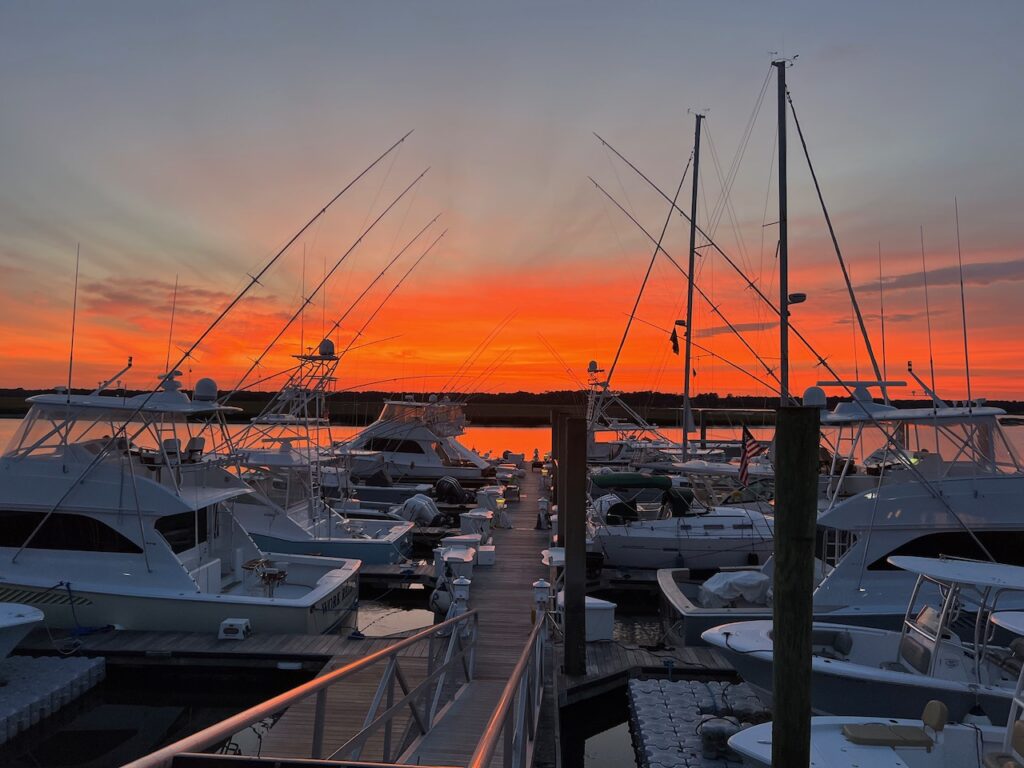
For 35 of the 37 days we were here, the weather was perfect! (And being on the dock meant we had power for AC👍👍😊) 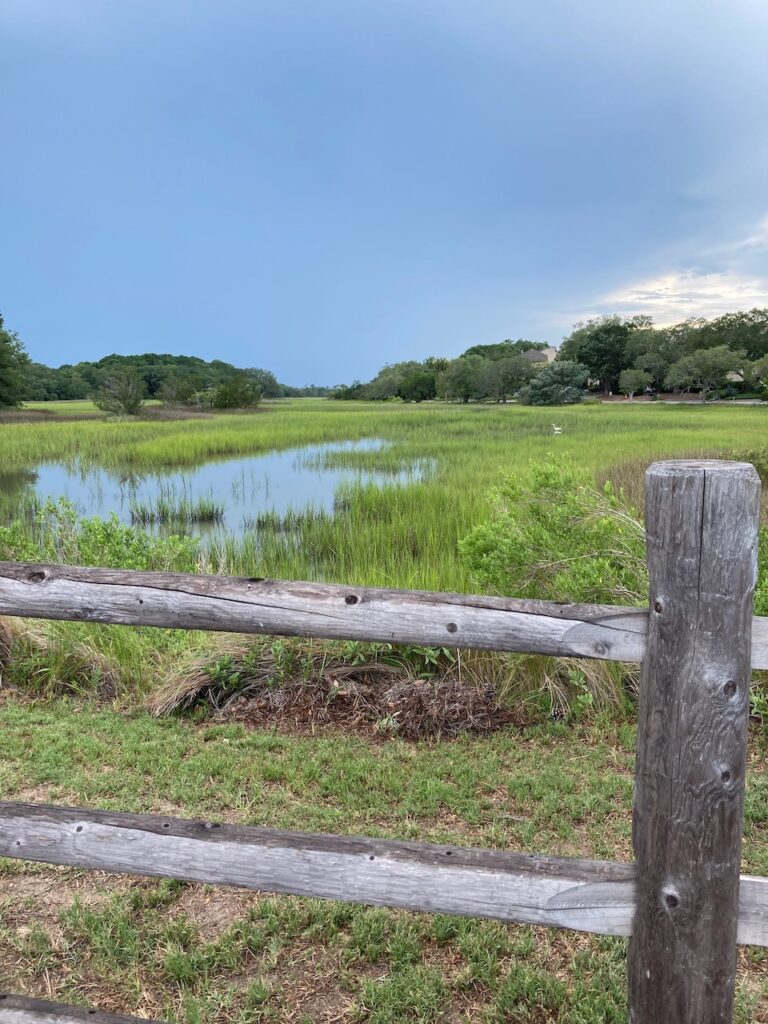
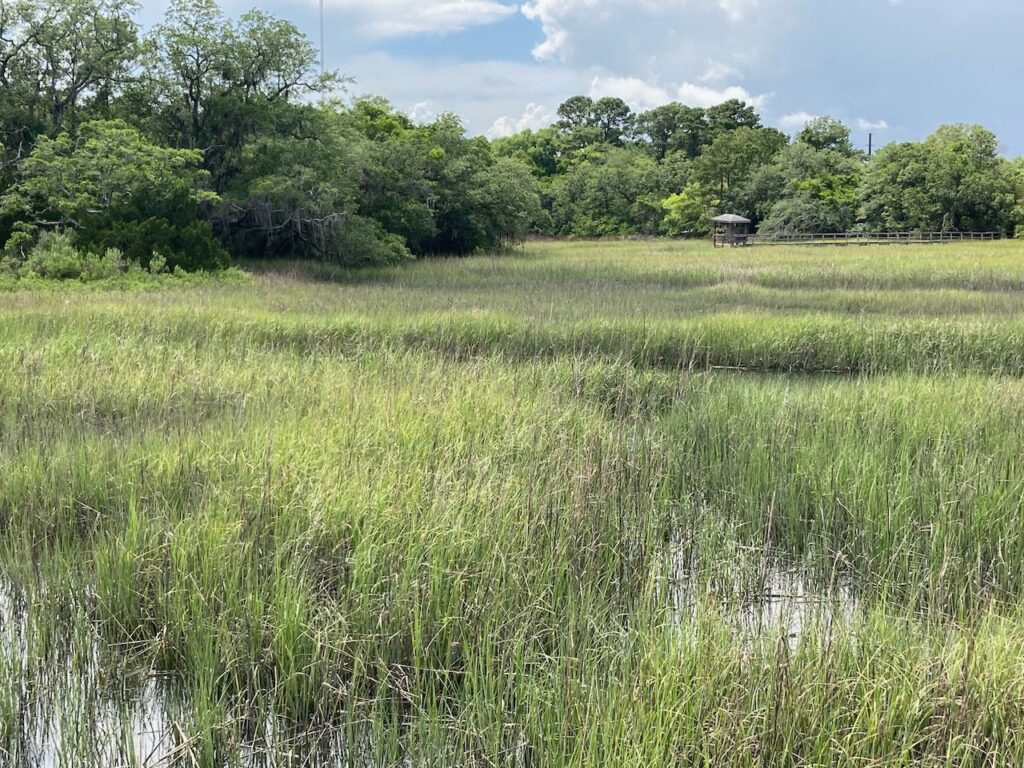
This area is called the Low Country because of its beaches, estuaries and tidal salt marshes… water is never far from solid land. 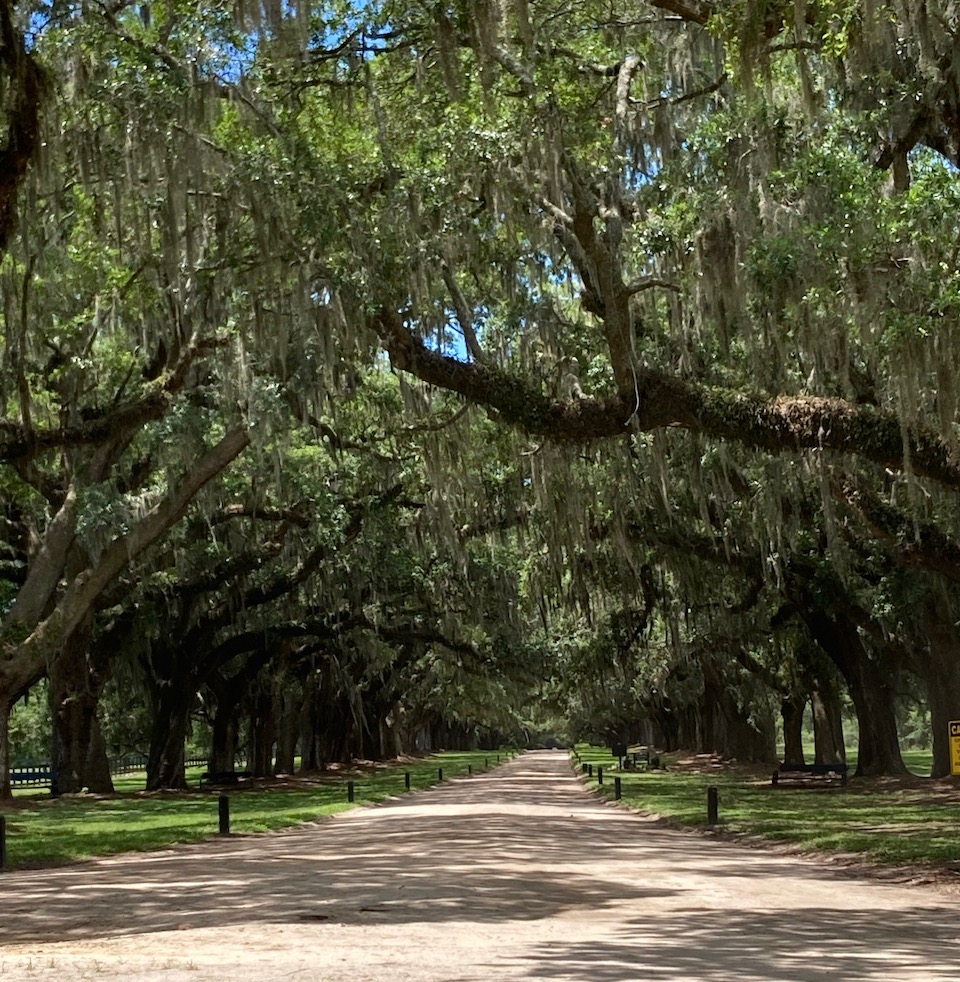
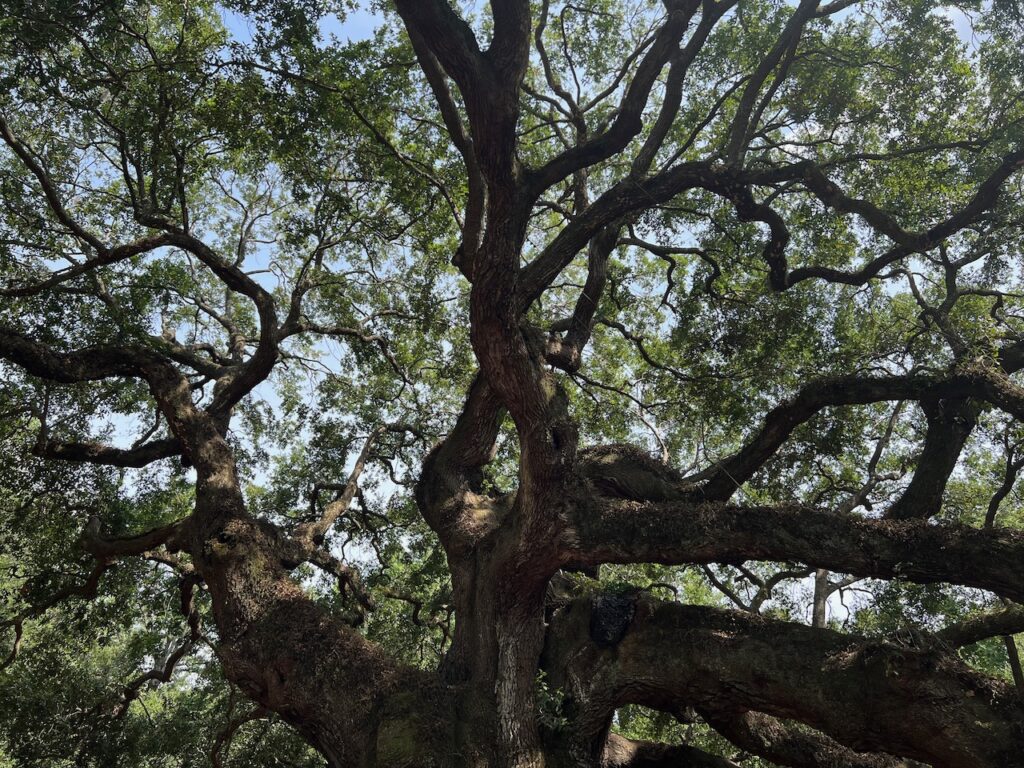
Inland is not too shabby either… 
Our last part arrived on Thursday July 7th. This is a snapshot of the weather the evening before we left… and has been what we have been contending with ever since. We are now moving again! 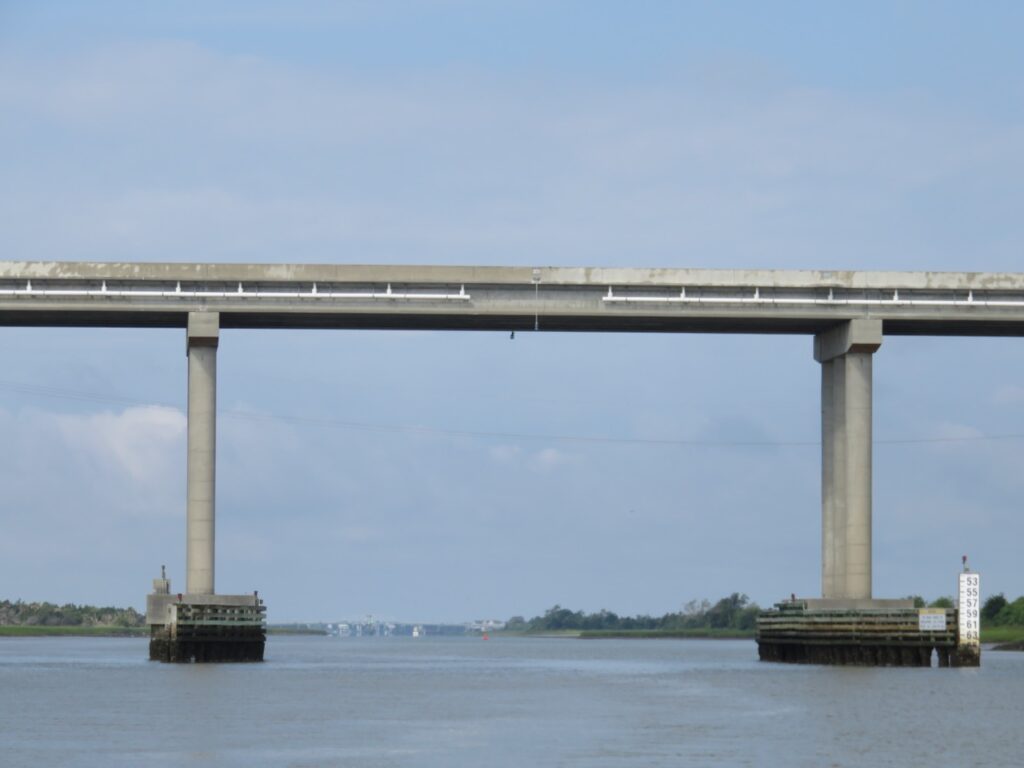
In addition to dodging thunderstorms, this section of the Atlantic ICW is rife with bridges and power lines. If the bridge is fixed (like this one), we need to determine the correct tide we need to clear the bridge. The white board in the lower right hand corner is a bridge board and provides the bridge clearance height depending on the water level. At high tide, we would not get under this bridge so we planned to be here at low tide… 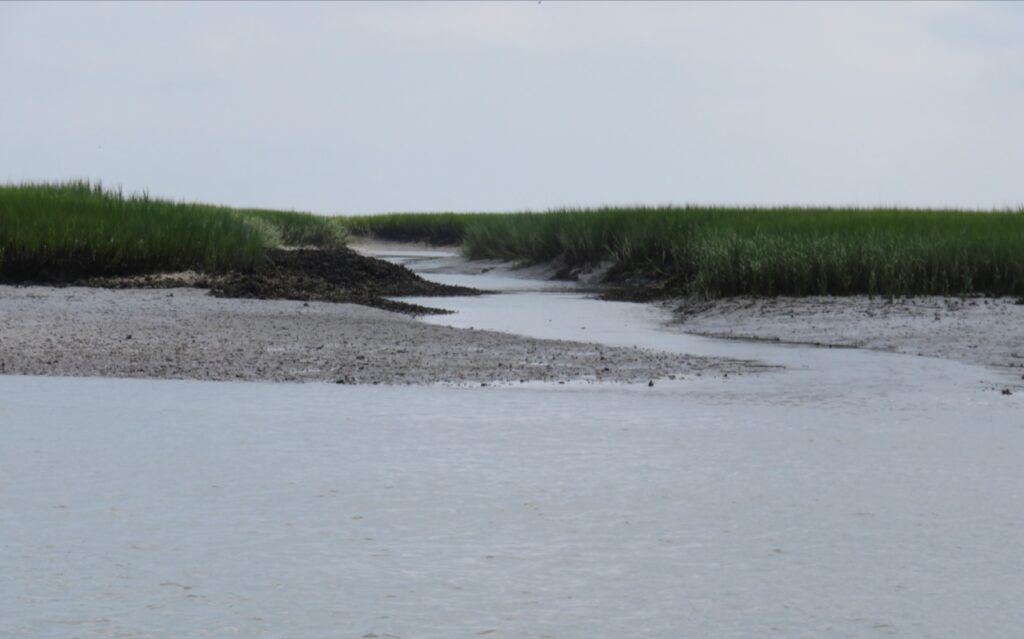
…which presents a whole other problem with water levels UNDER our keel. This stretch, logistically, is one of the most challenging pieces of the Loop … 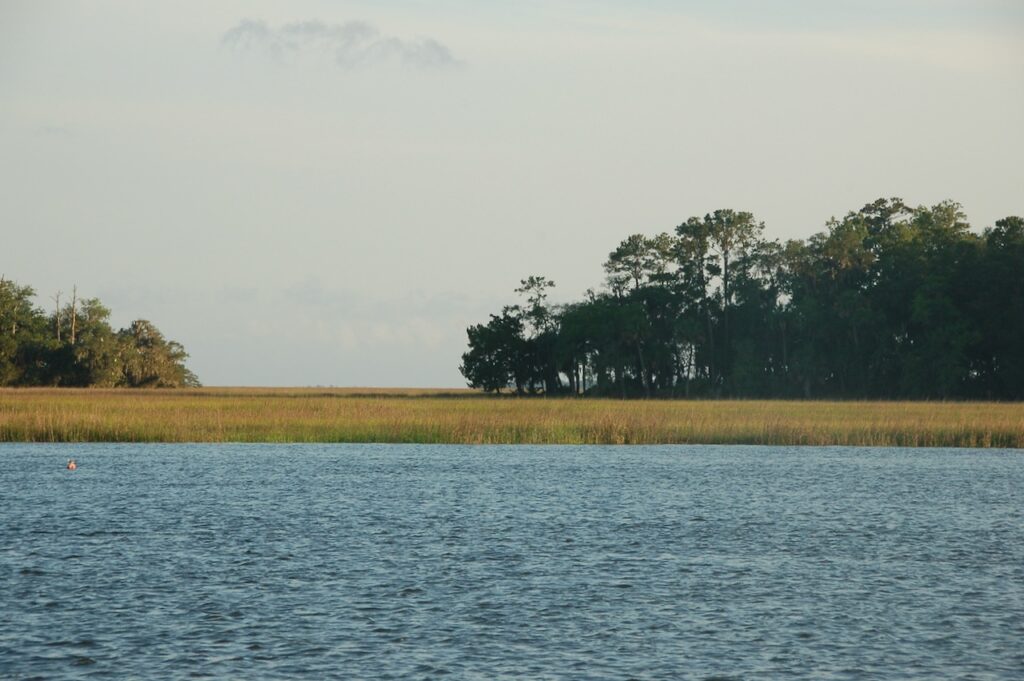
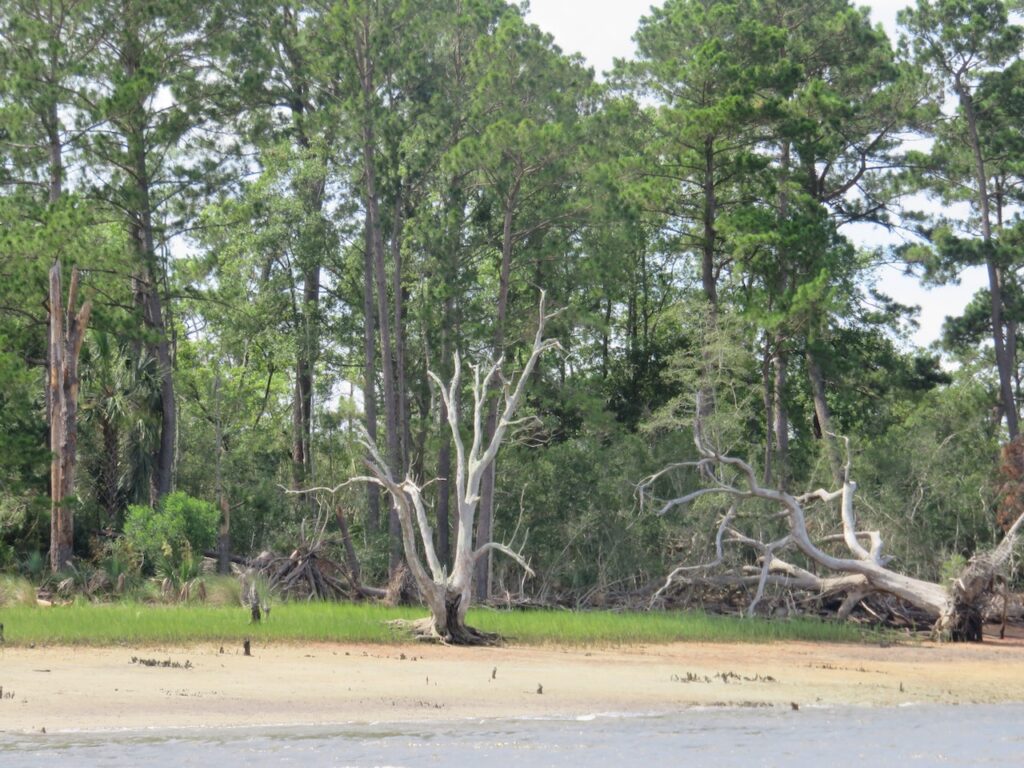

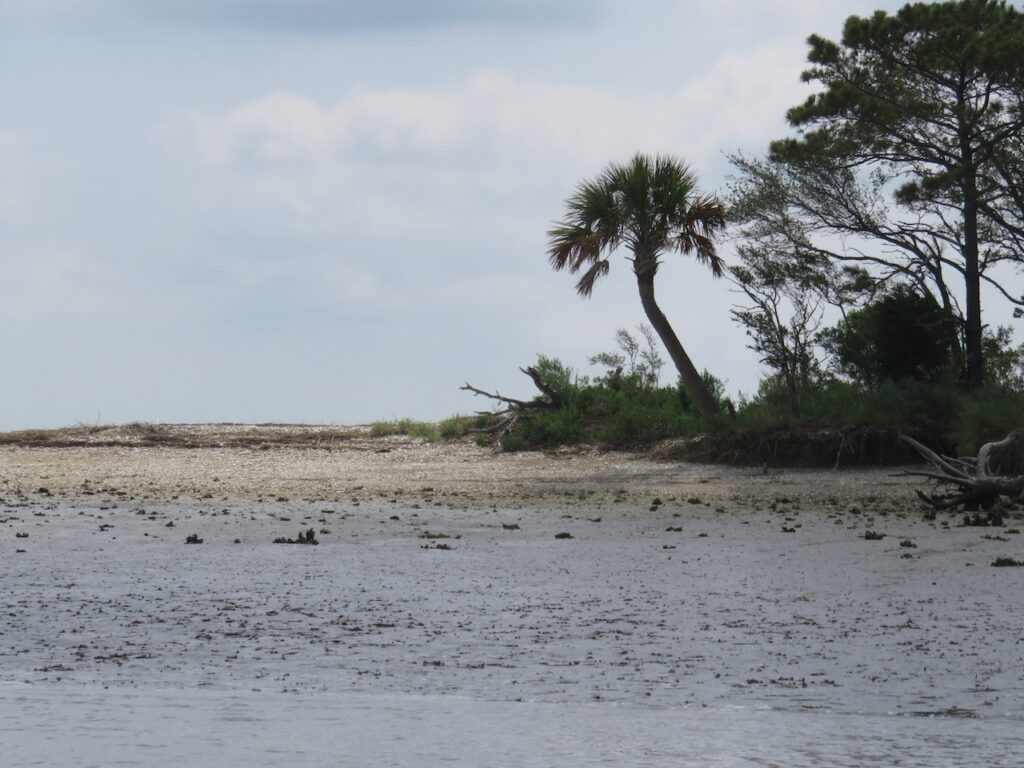

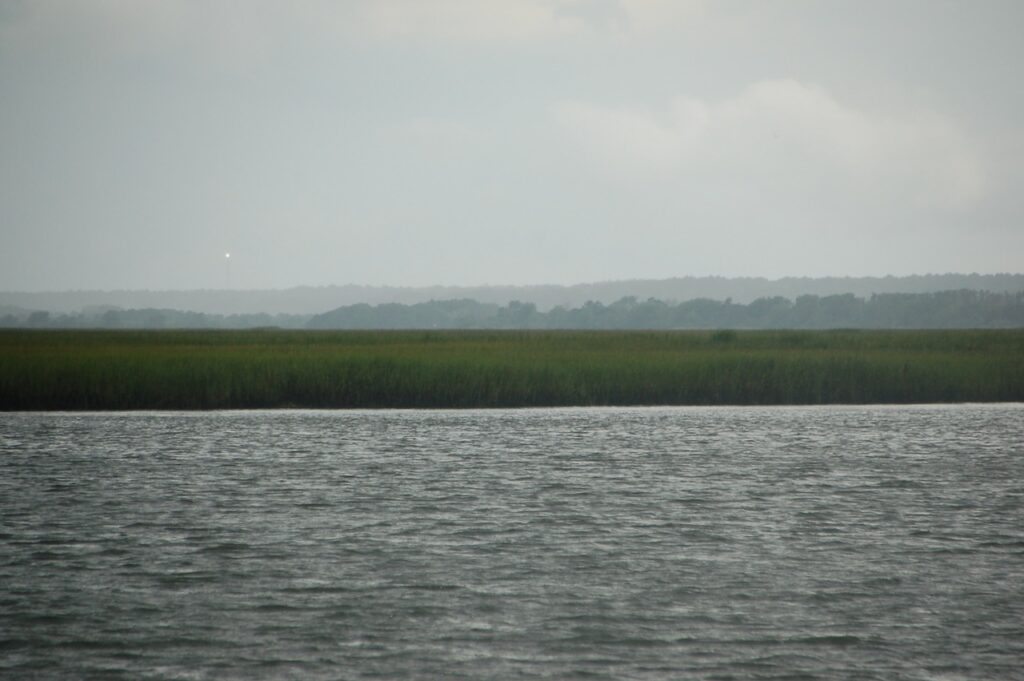
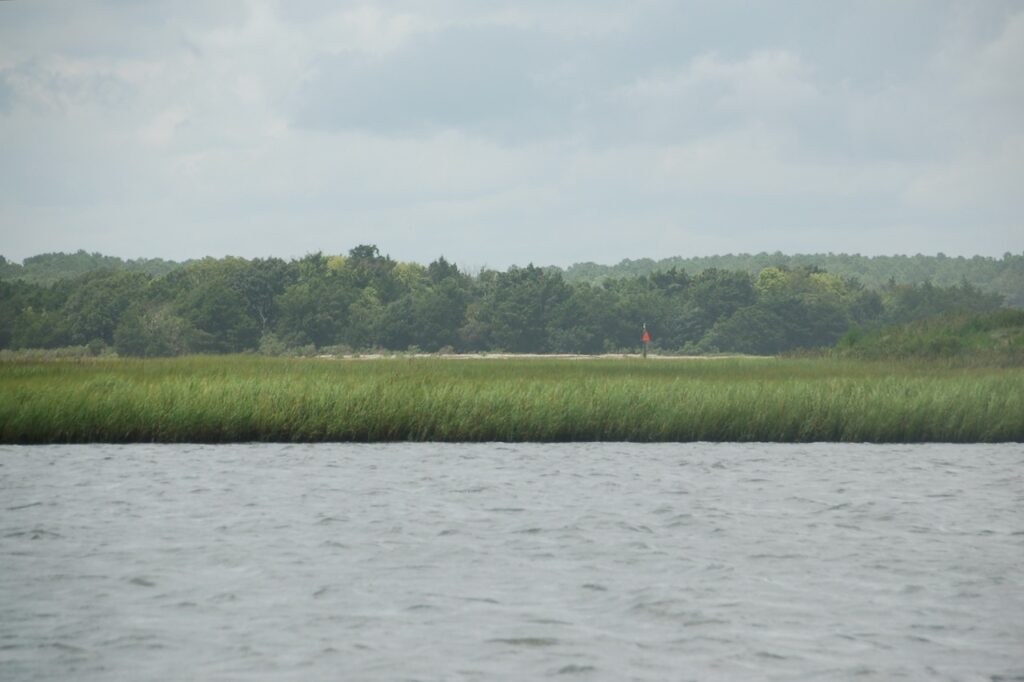
… but strikingly beautiful, too… - “Creepy But Cool”
So said the woman at the Beaufort Historical Society who suggested it as a walking tour; she was not wrong. The site was established in 1709 and contains remains from the Indian wars from that period as well as, later, members of the United States Colored Infantry (former slaves who fought on the Union side during the Civil War), sea captains and sailors whose ships sank off the coast of North Carolina and, of course, residents of Beaufort.

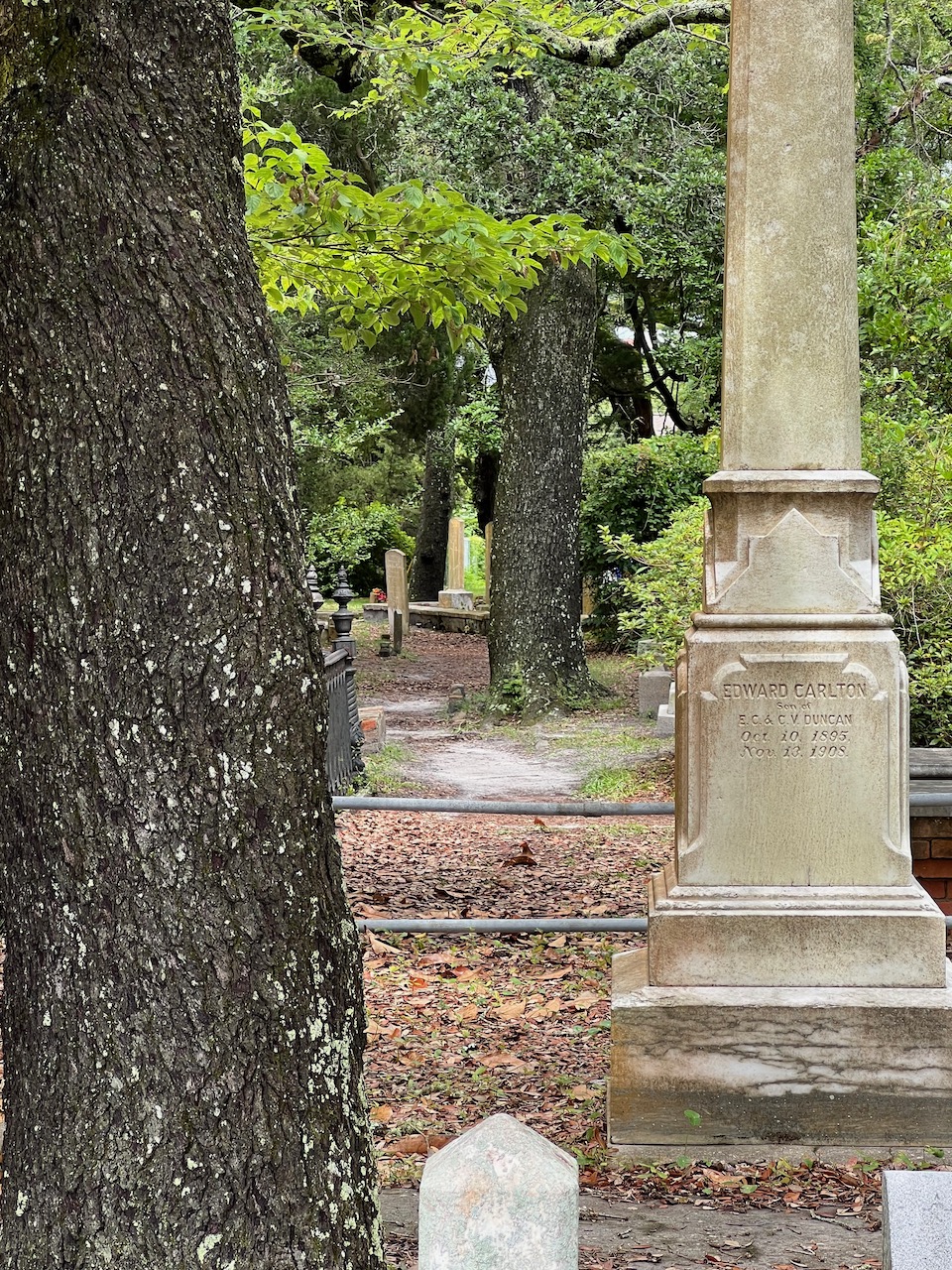
The Old Burying Ground is listed on the National Register of Historic Places and is now managed by the Historical Society.
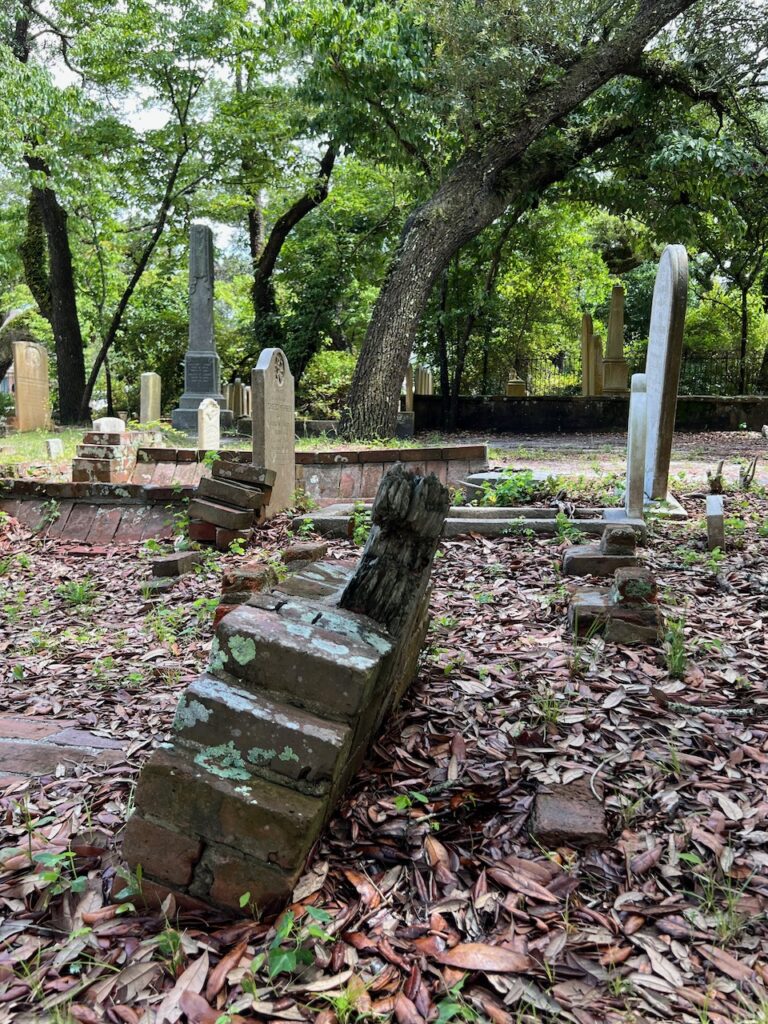
Some of the oldest gravesites are marked with brick as headstones needed to be imported. 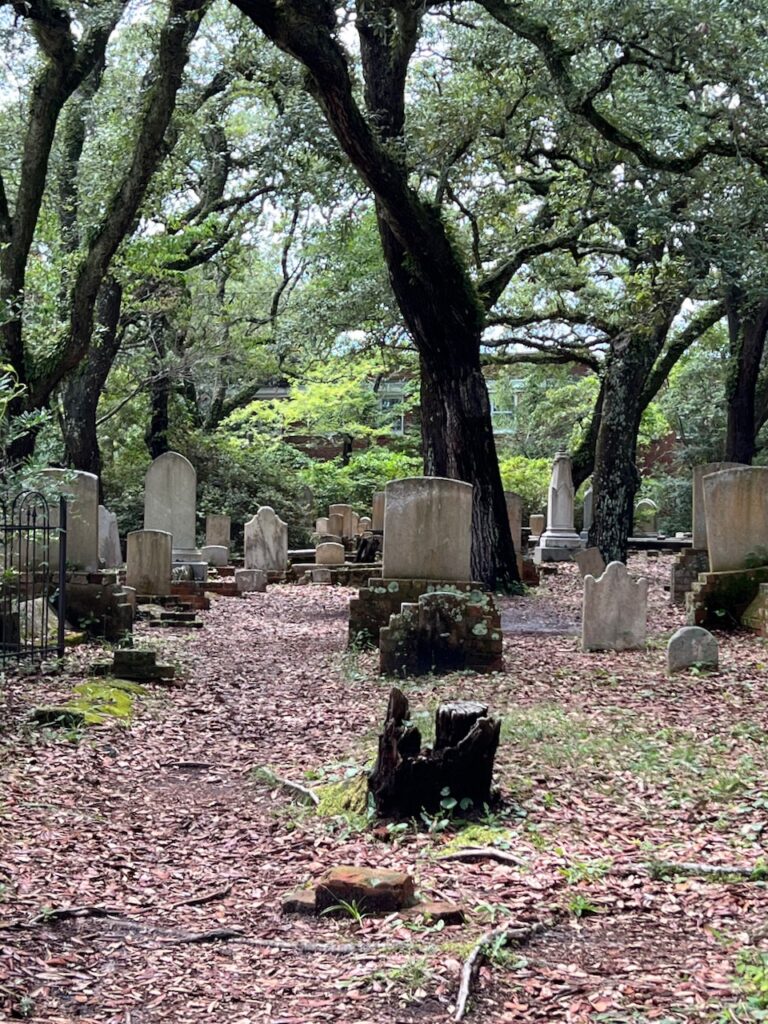
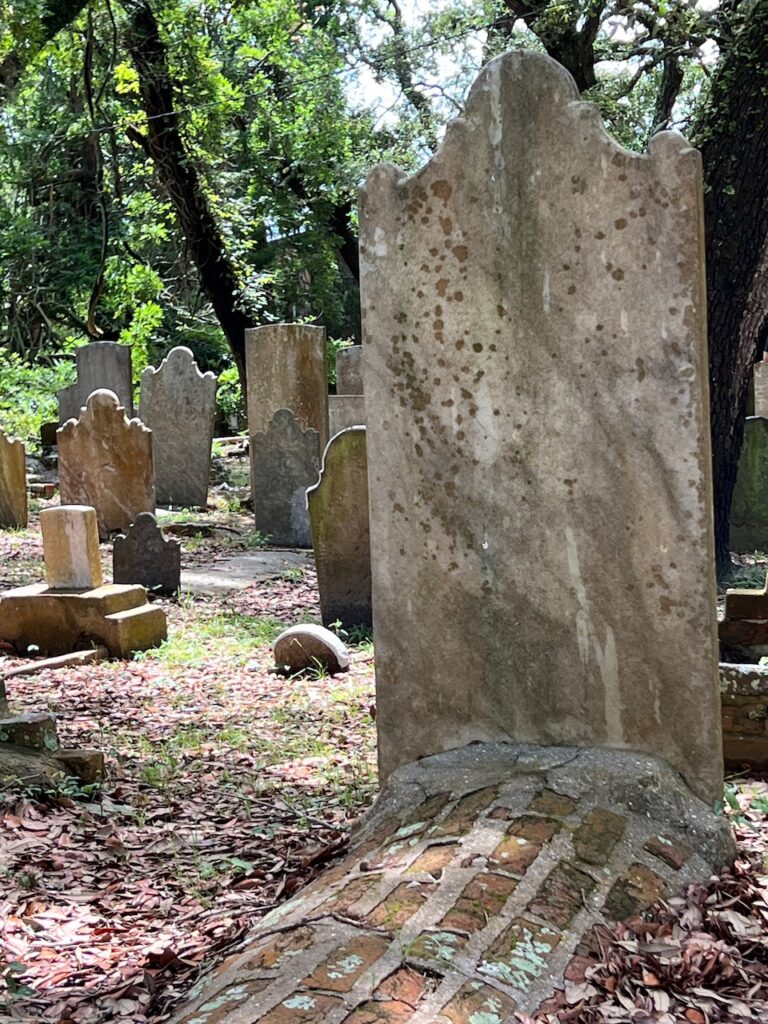
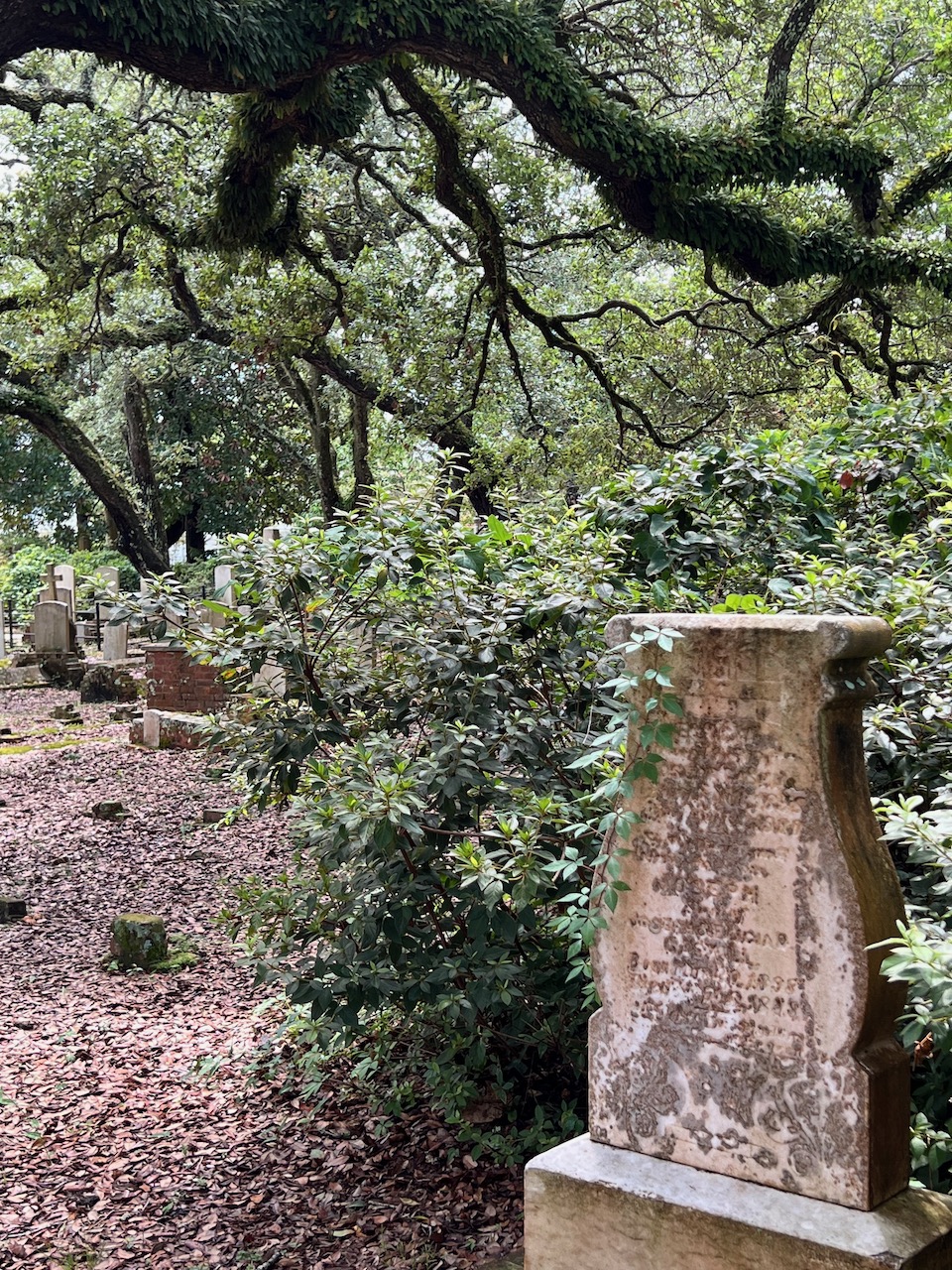
Many of the headstones have lost their identity with age. 1756 is the oldest legible date but not the oldest grave.
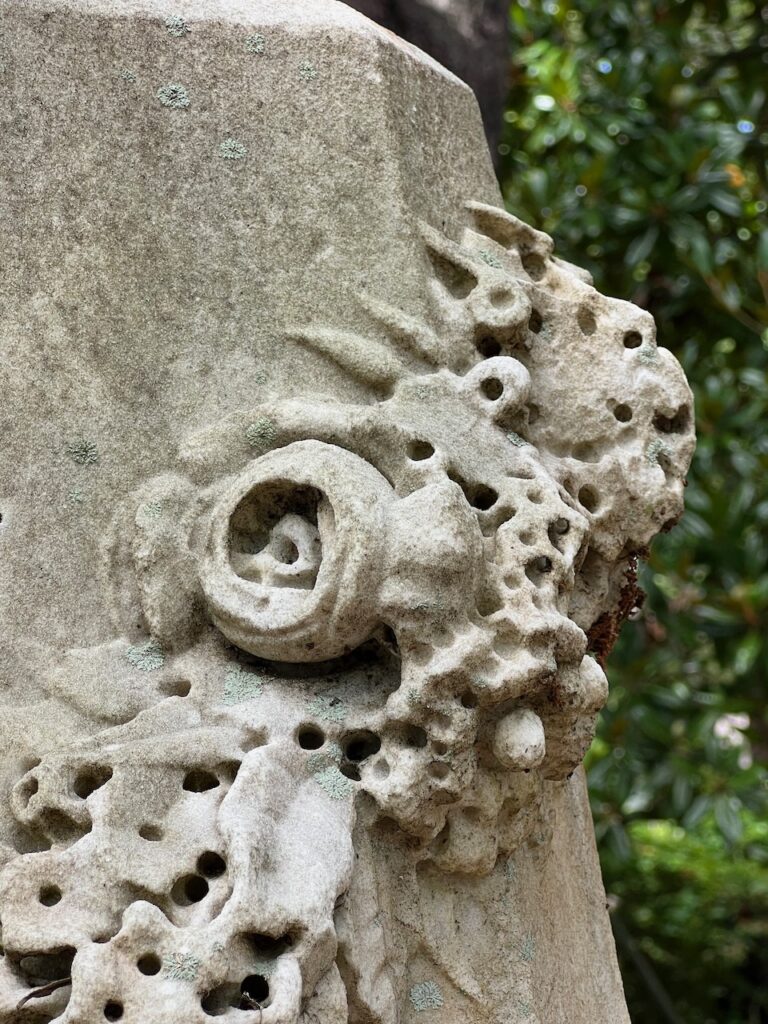
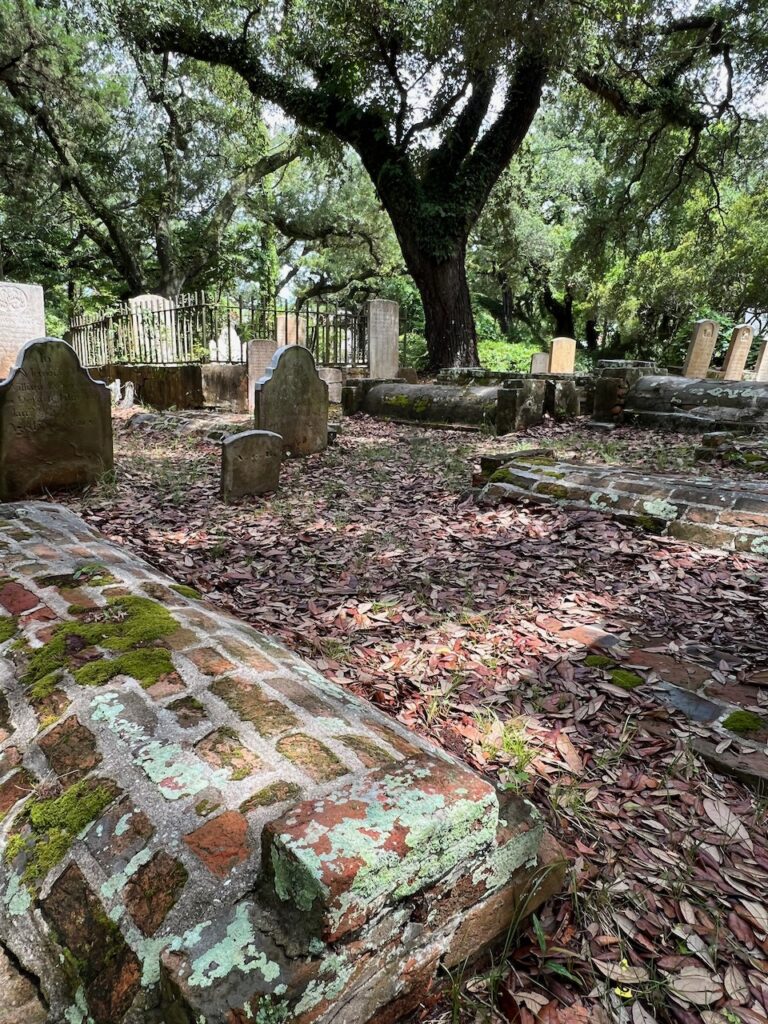
During the time these graves were created, it was customary to brick them over to protect the remains from animals and water. 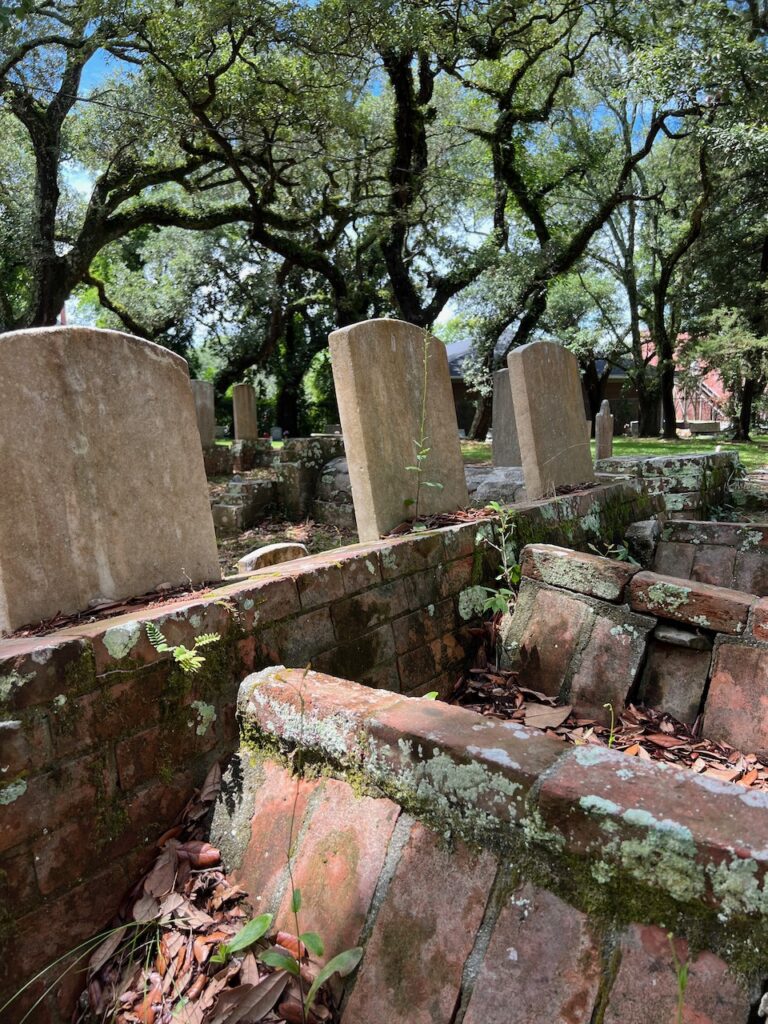
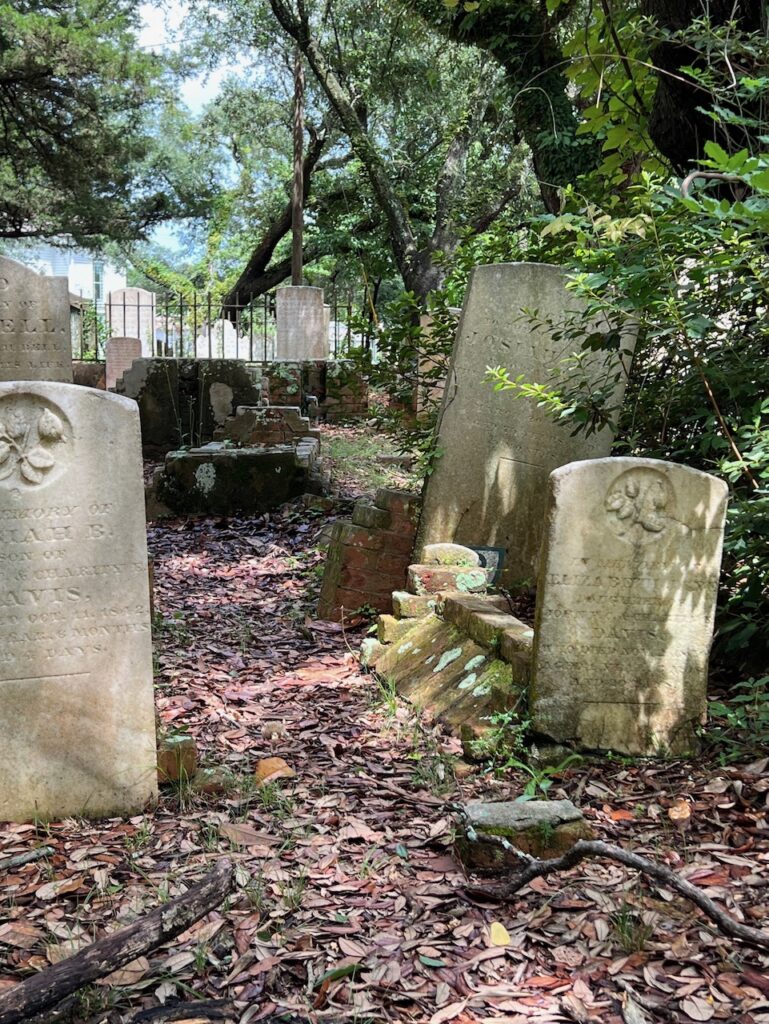
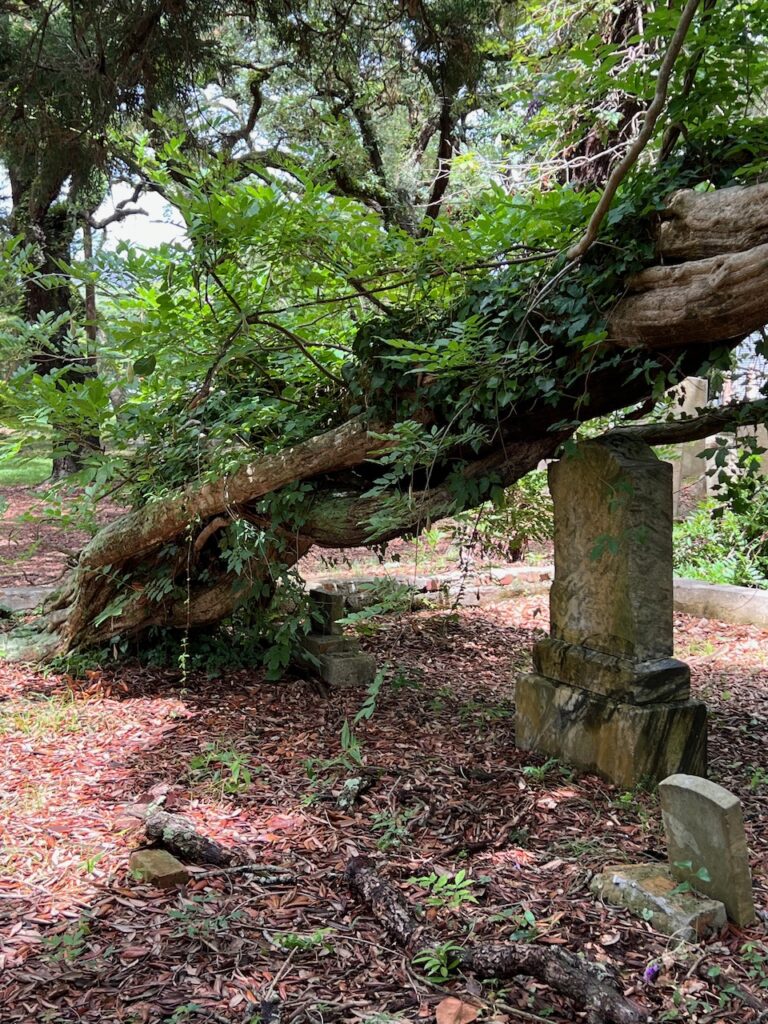
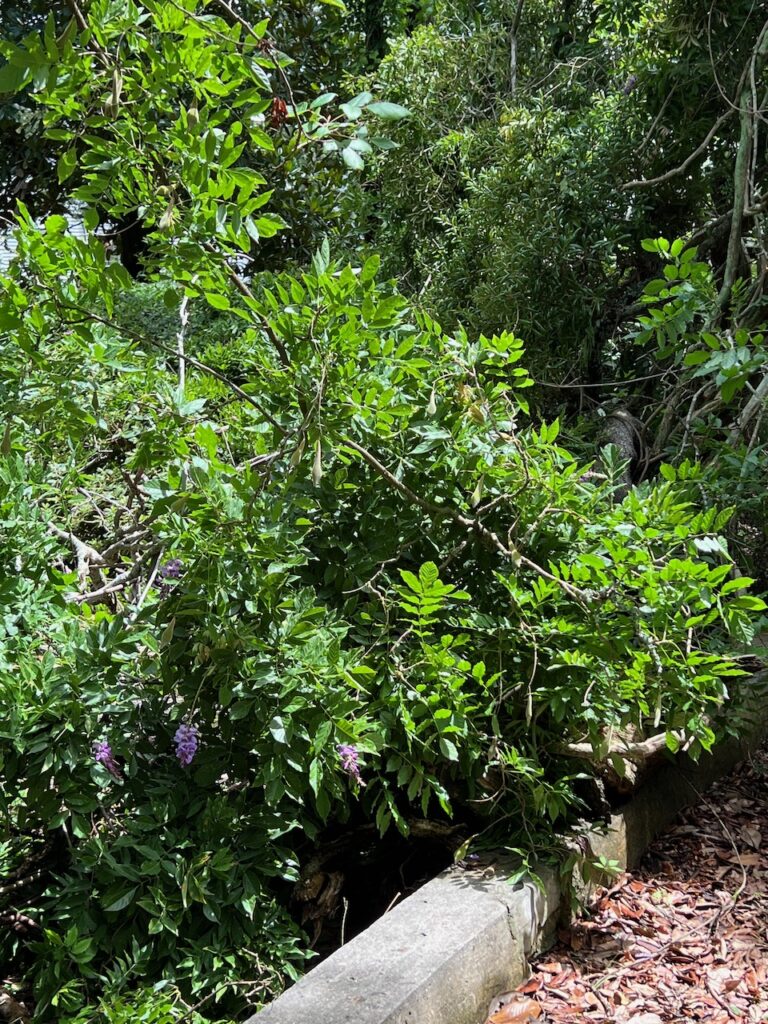
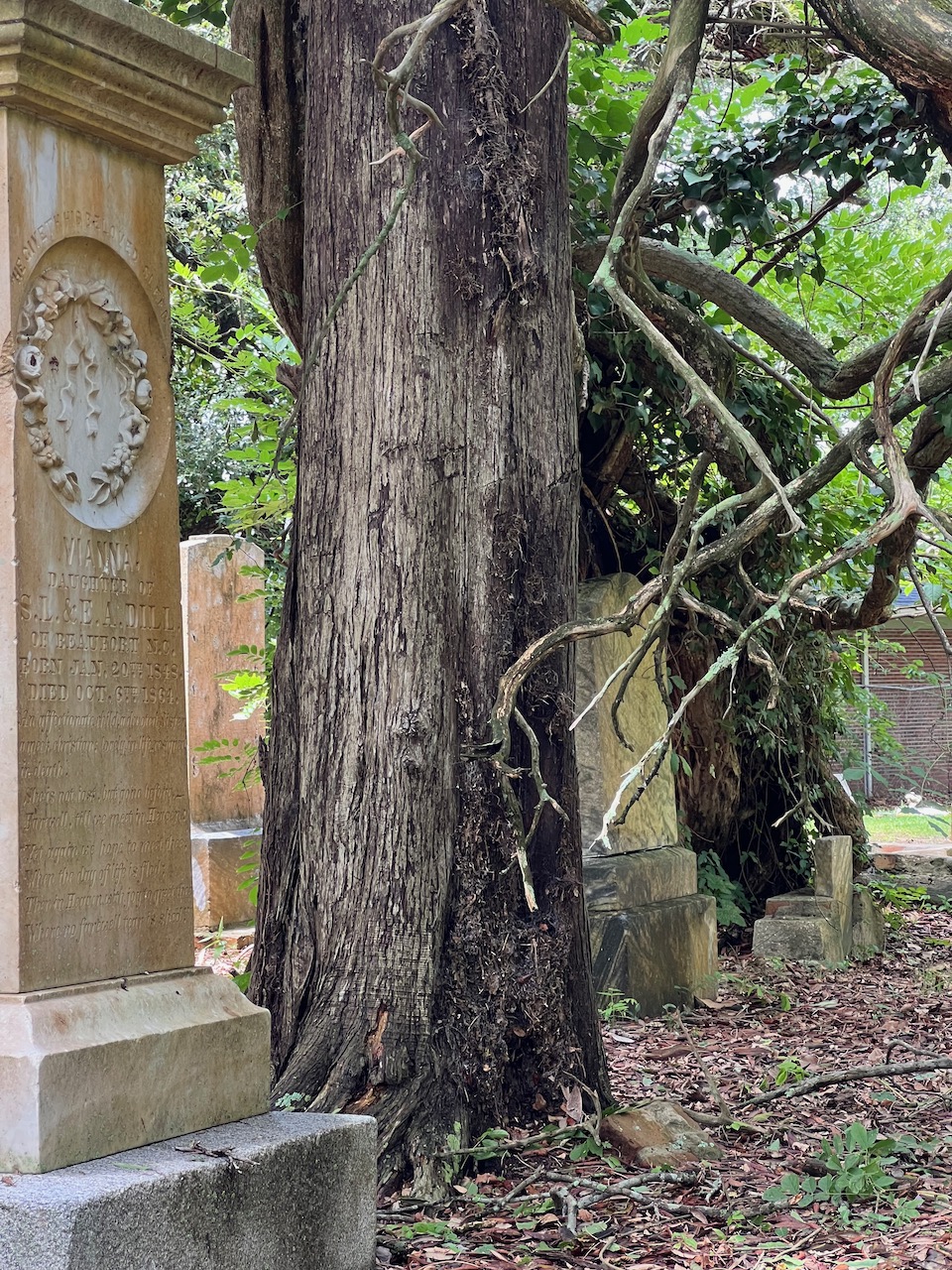
Old wisteria vines and trees guard the gravesites in the Old Burying Ground.
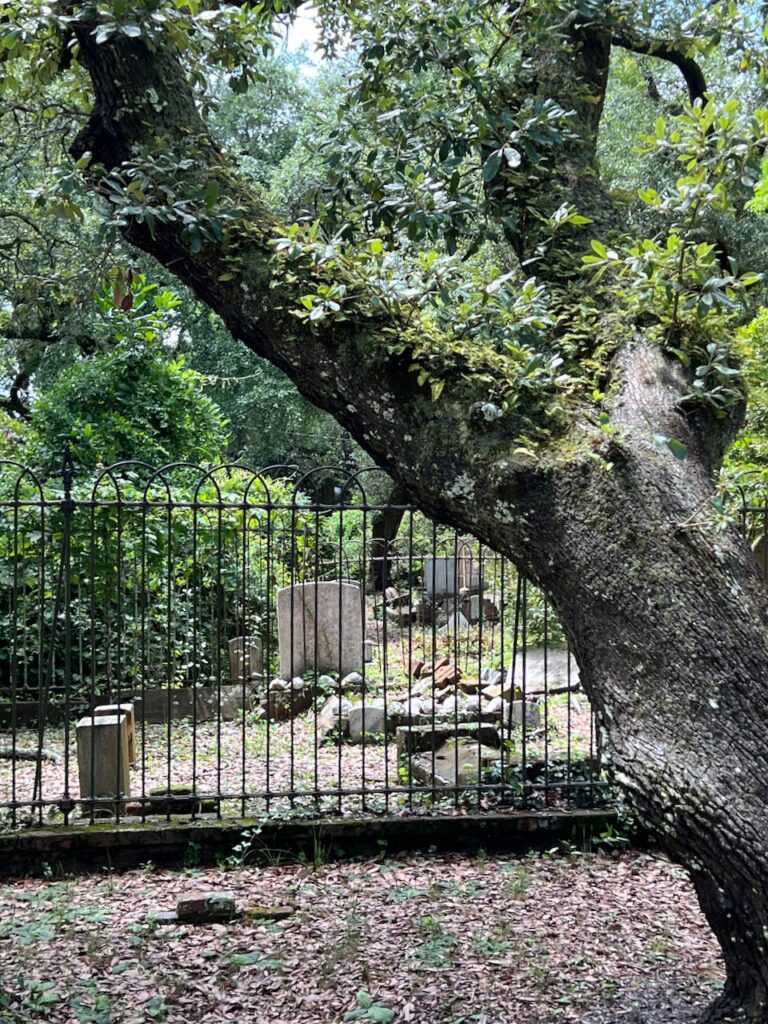
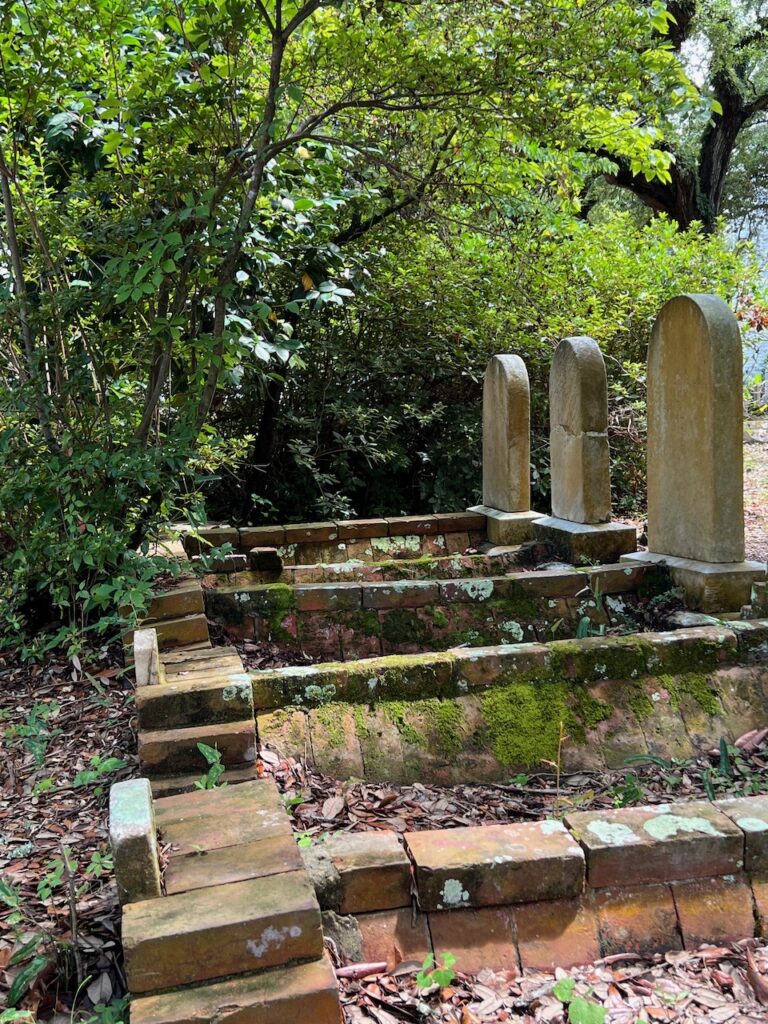
Family plots were common and spanned the decades represented in the Burying Ground. 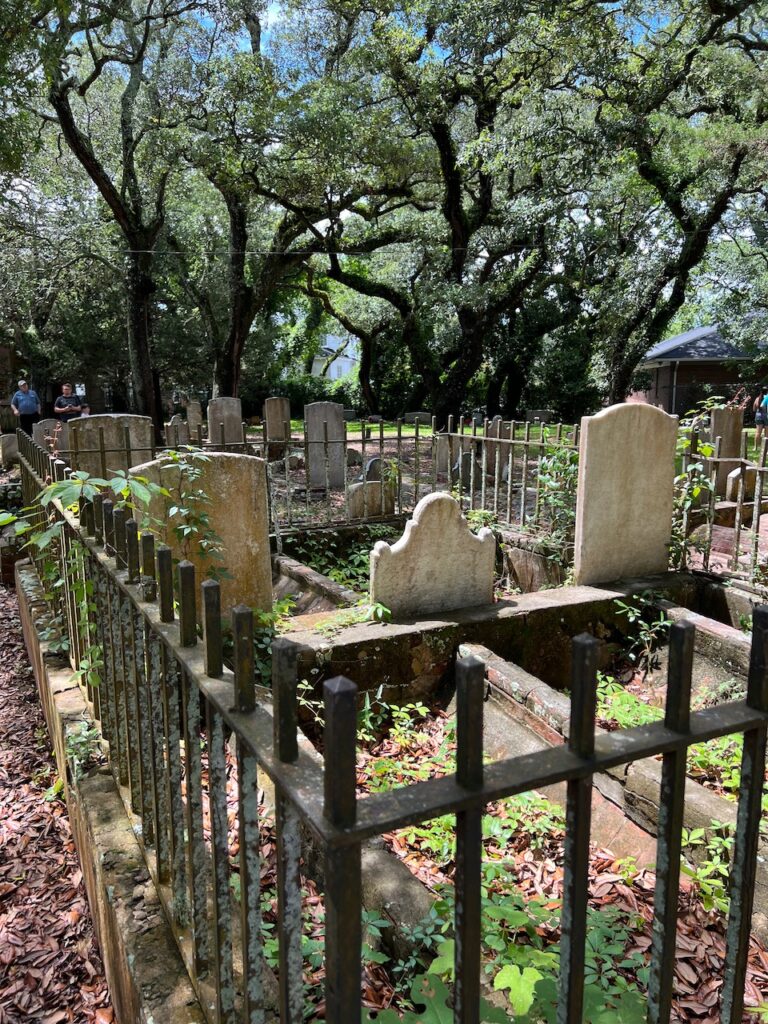
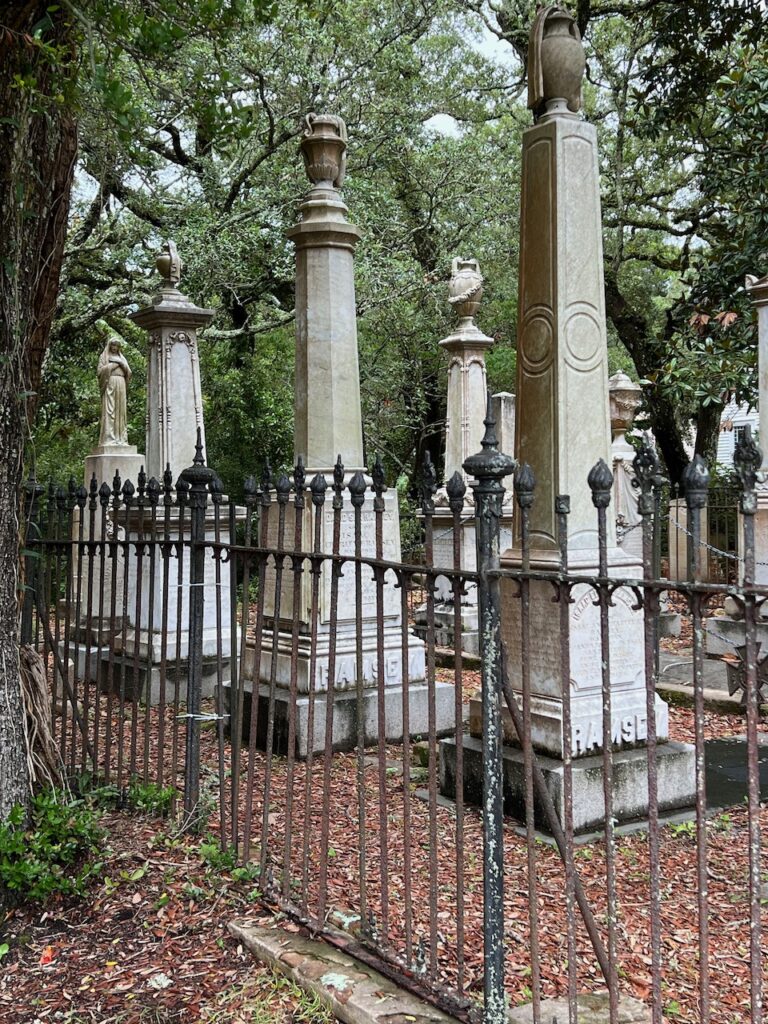
The Historical Society provides a map to tour the Burying Ground. It contains stories about the graves and their occupants …
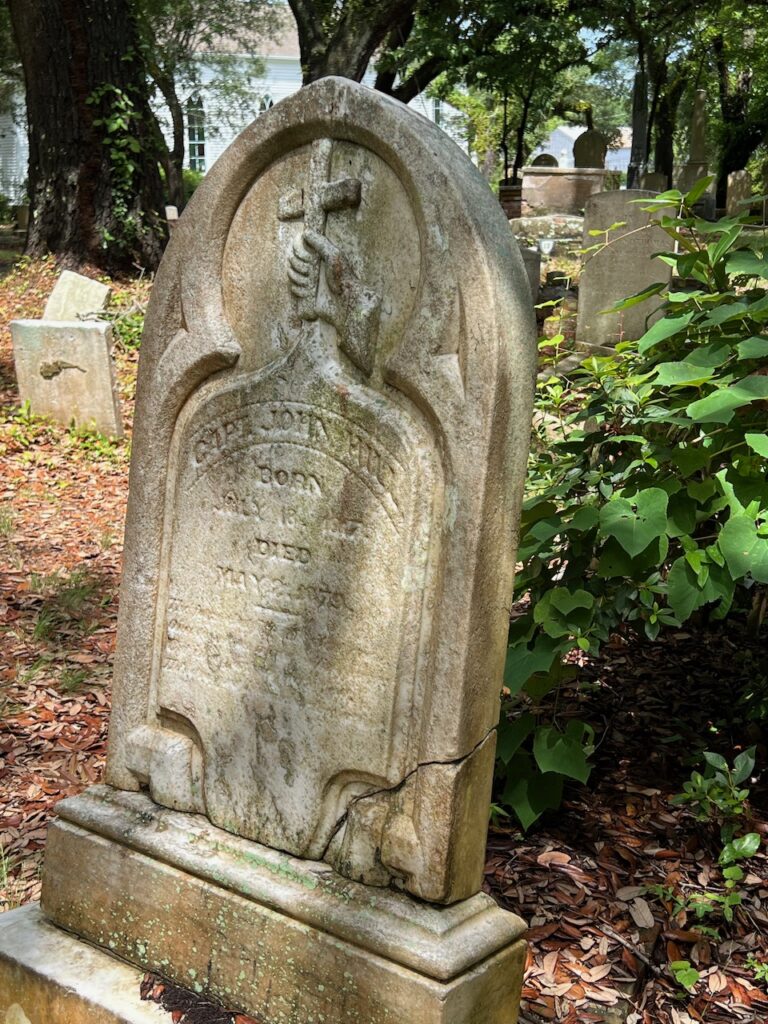
… Captain John Hill (1817-1879) We liked the inscription on his headstone:
“The form that fills this silent grave
Once tossed an ocean’s roiling wave,
But in a port securely fast,
He’s dropped his anchor here at last.”

… Sarah Gibbs (-1792) Sarah was married to Jacob Shepard who was lost at sea. She re-married Nathaniel Gibbs and had a child by him. Several years later, Jacob returned… Nathaniel and Jacob agreed that Sarah could remain with Nathaniel while alive but that she would spend eternity with Jacob. His is the grave next to hers. 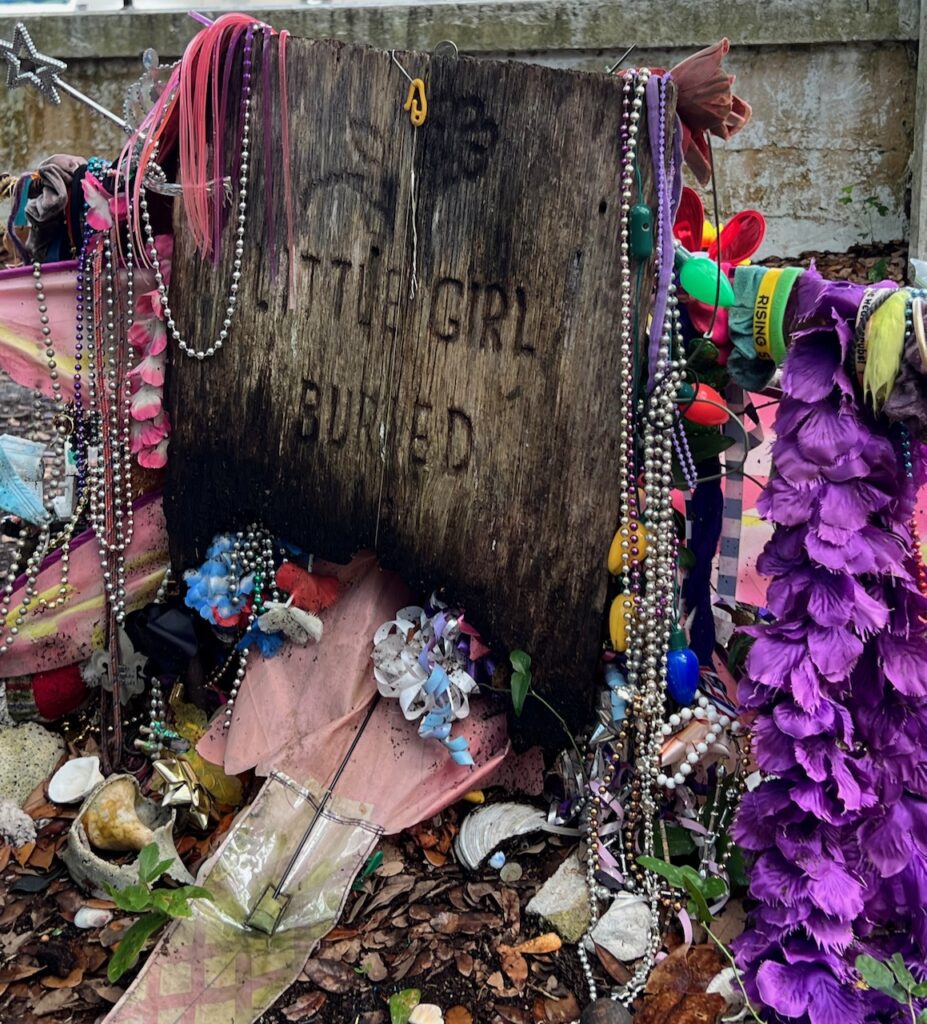
… Girl in a Barrel of Rum. This child died on a return trip from London in the 1700’s. Her father had promised her mother that he would return the girl safely when her mother agreed to the trip. Normally, she would have been buried at sea but her father wanted to keep his promise so he brought her home in a barrel of rum. 
… Vienna Dill (1863-1865) This child was buried in a glass-top casket. 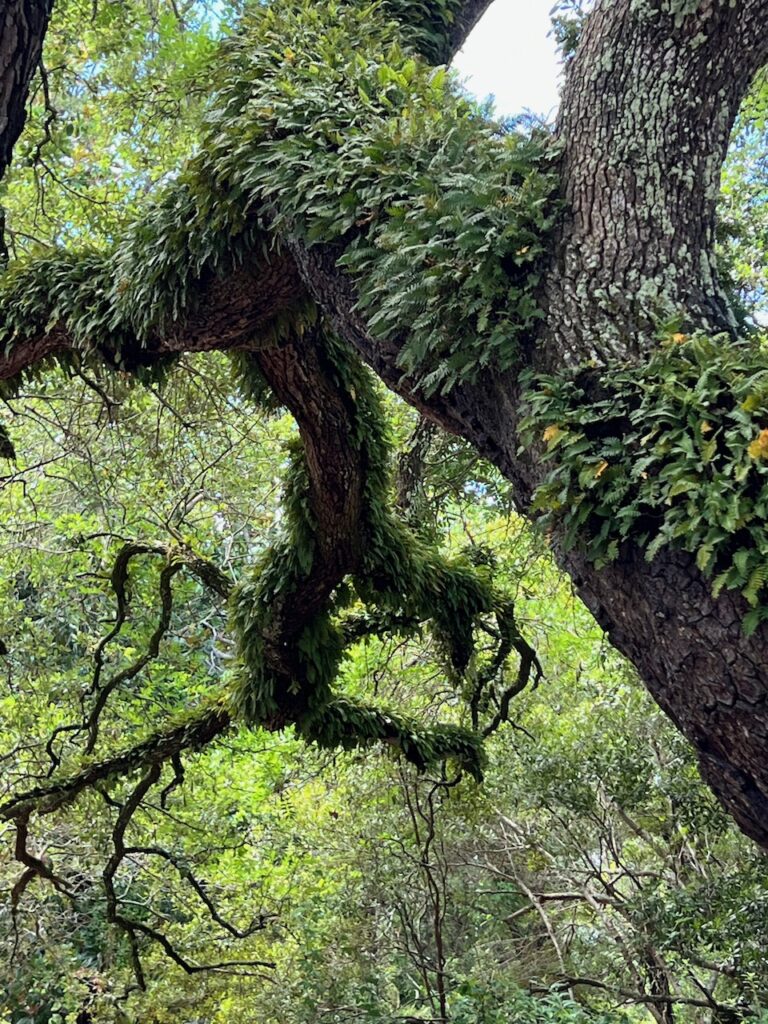
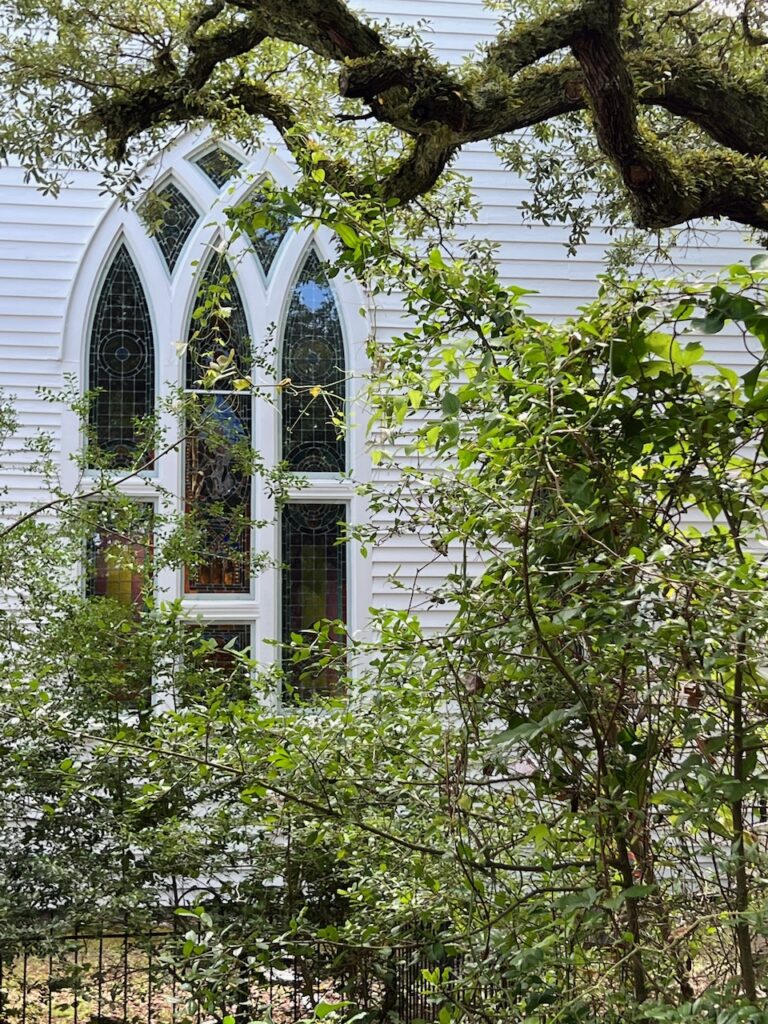
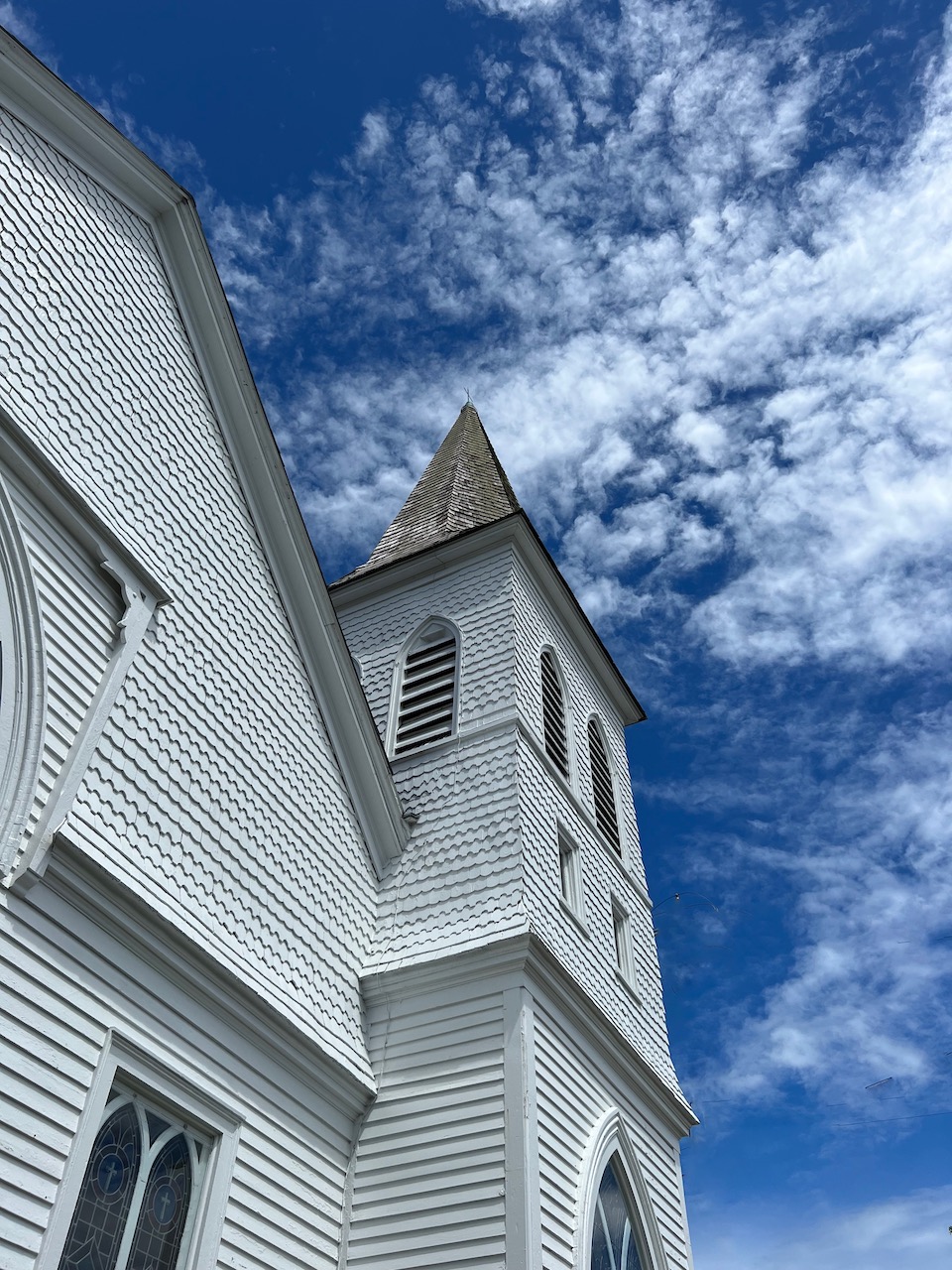
The Ann Street Methodist Church
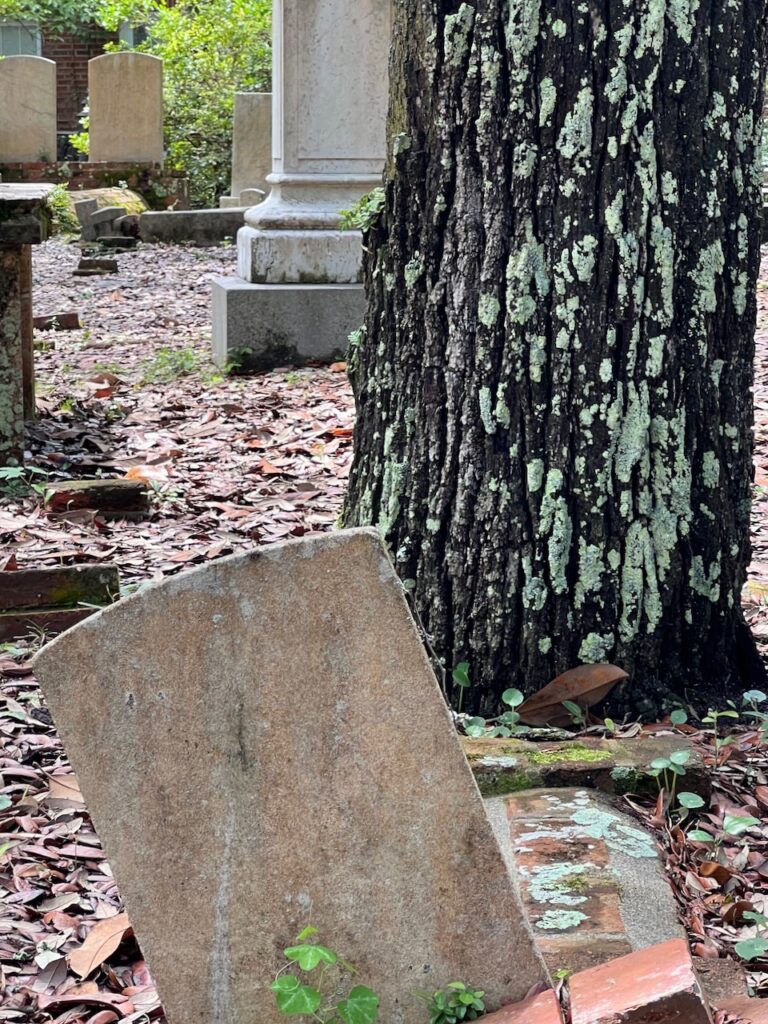
- New Bern Bears
We ventured off the official Loop route to visit Christian’s old haunts: up the Neues River to New Bern then back down to Oriental. This area is the origin story for our Great Loop adventure… Christian learned to sail in these waters.


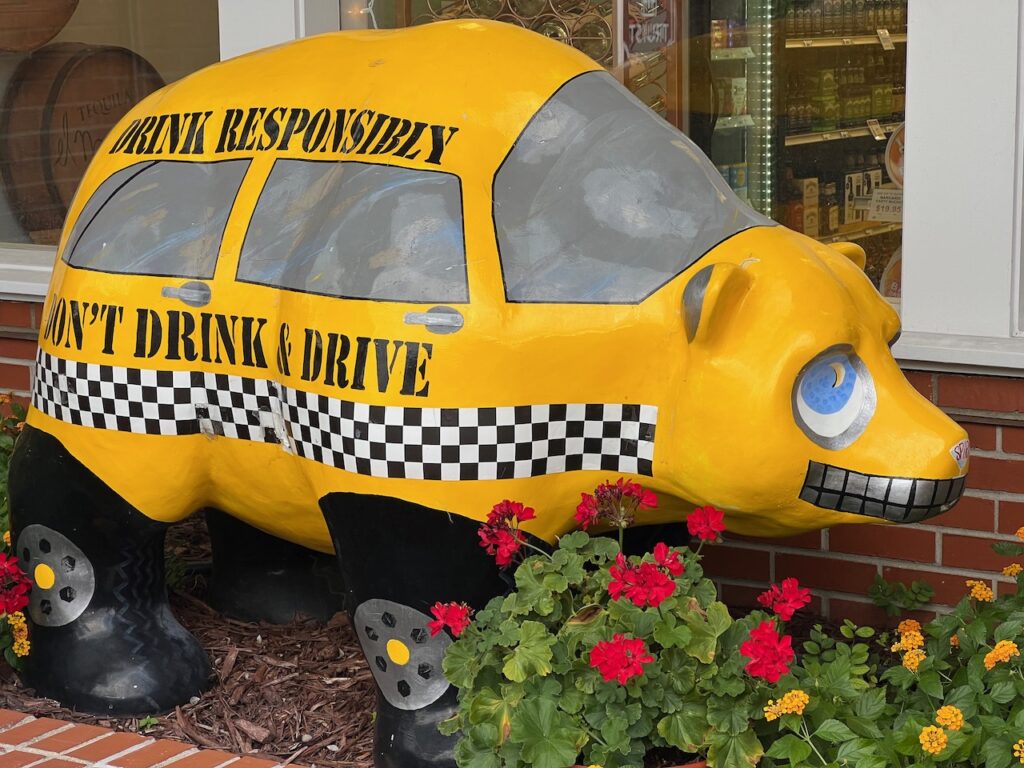
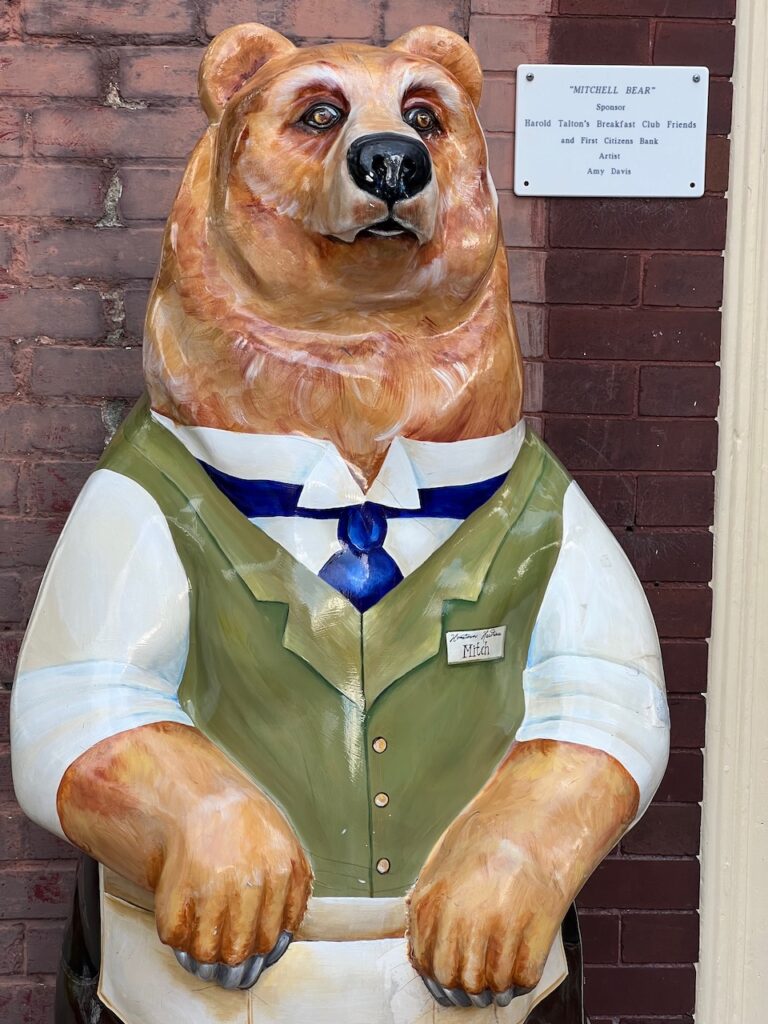
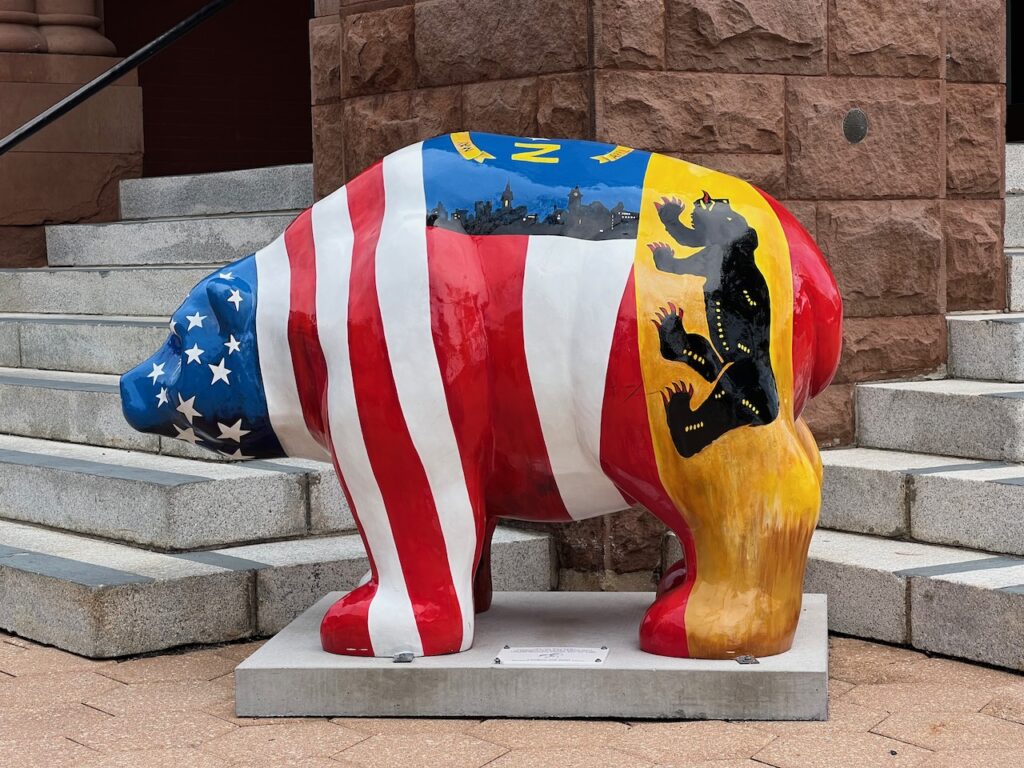
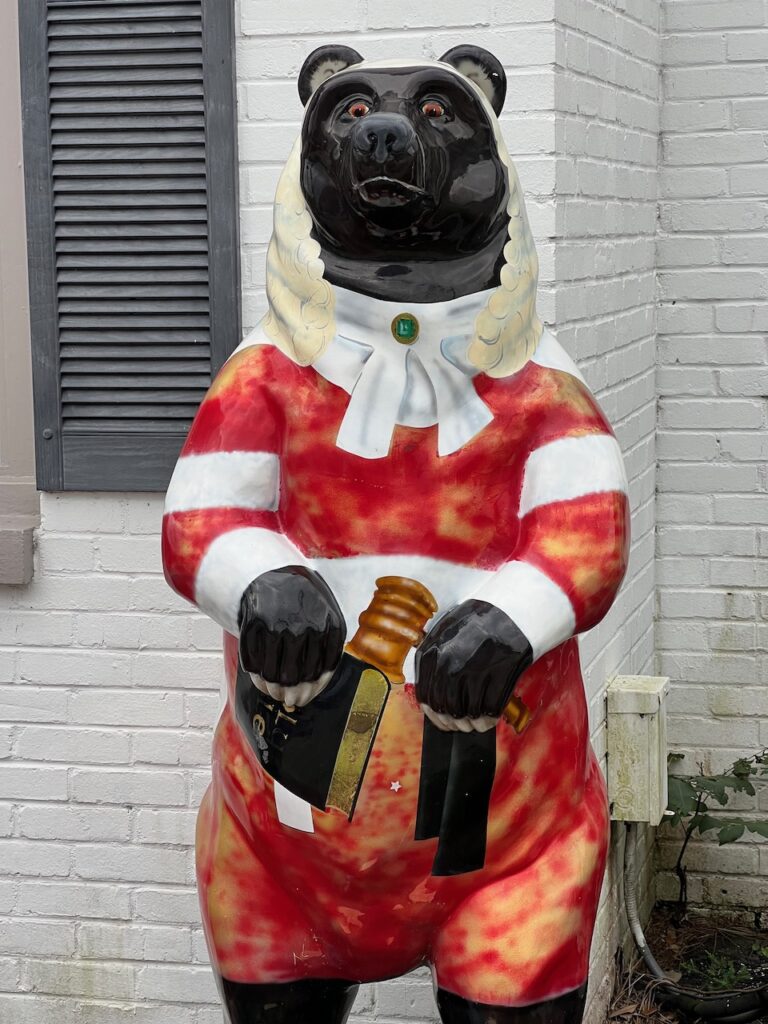
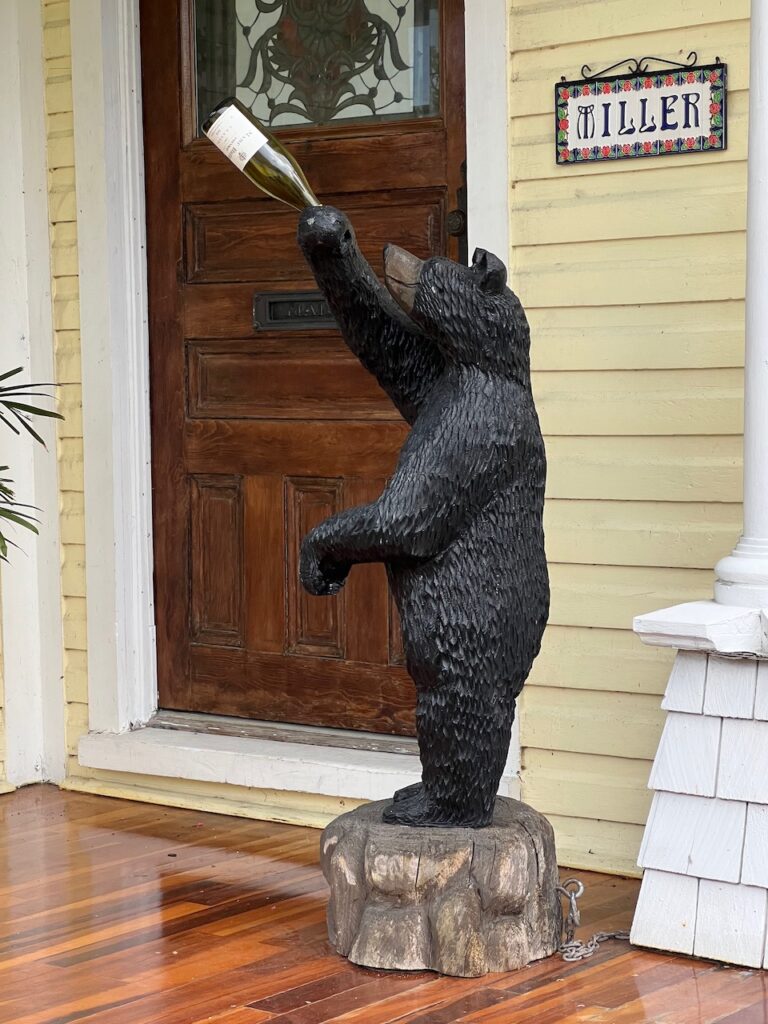
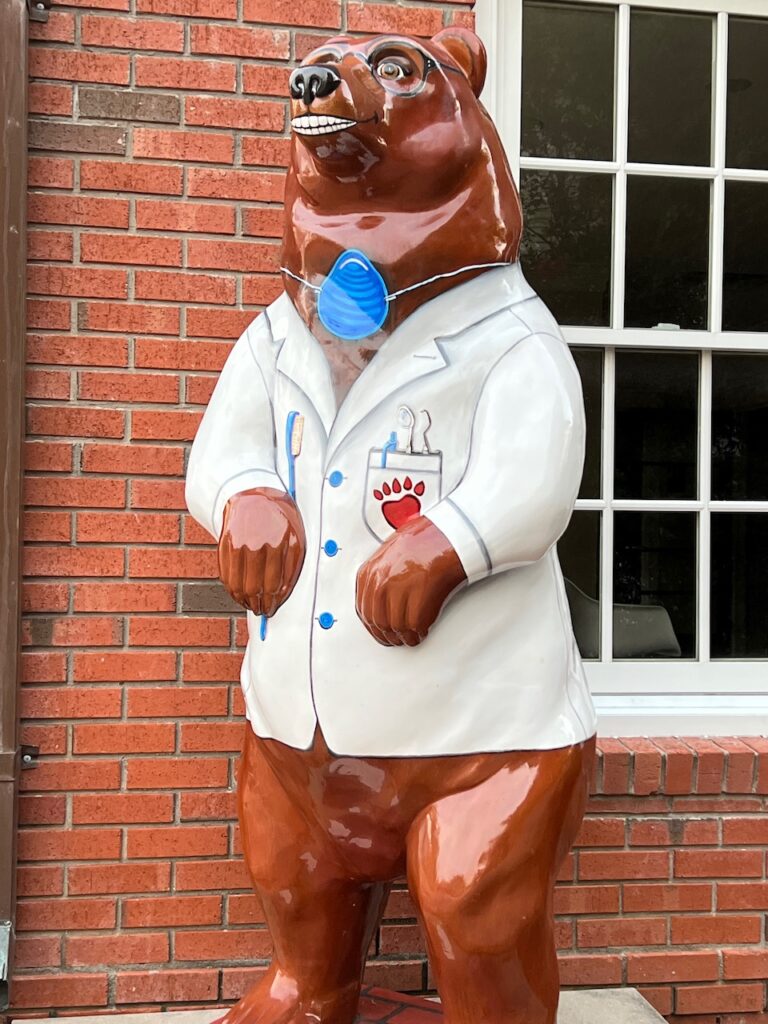
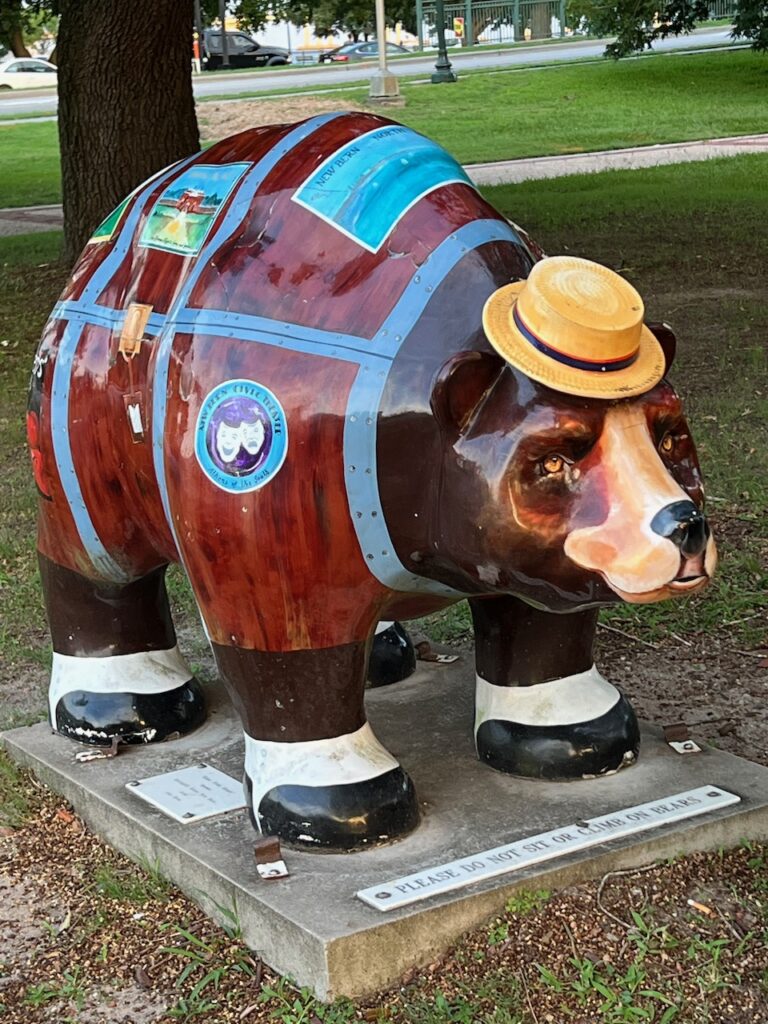
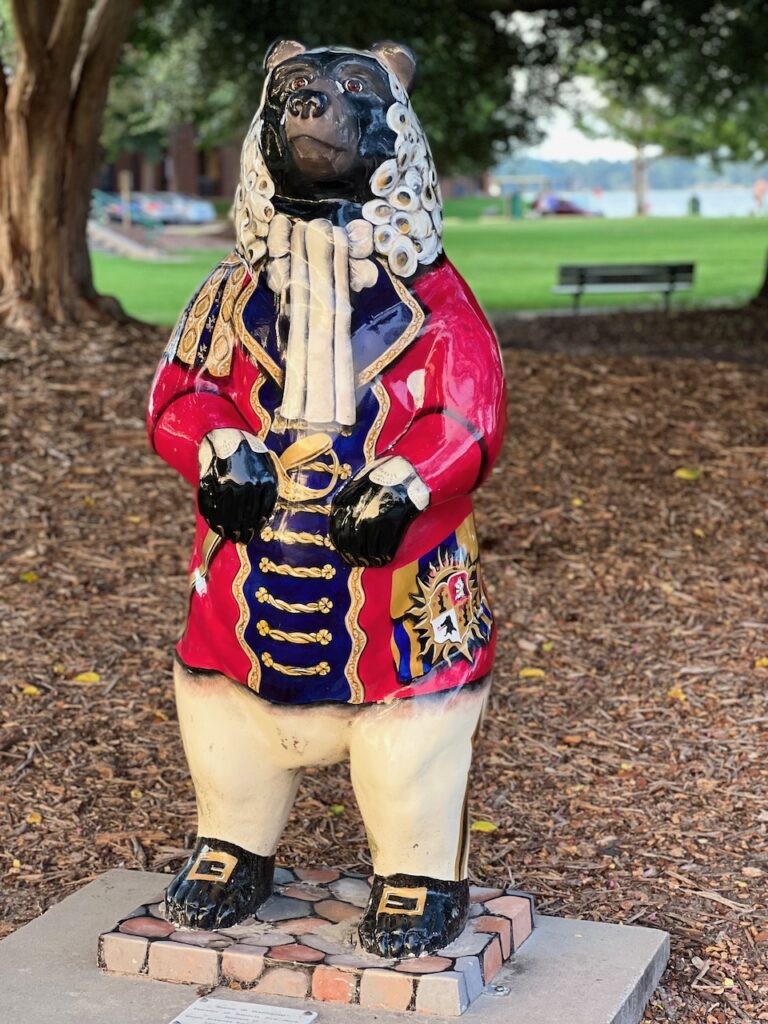
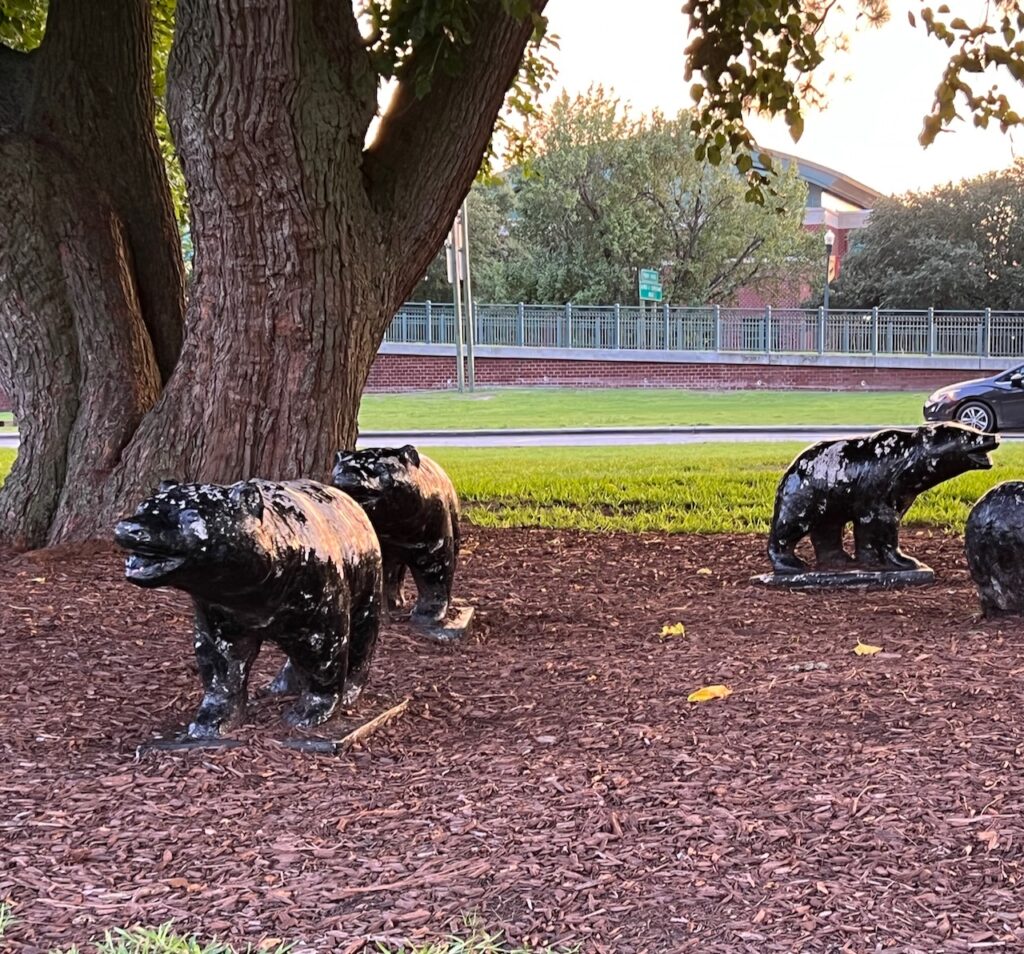
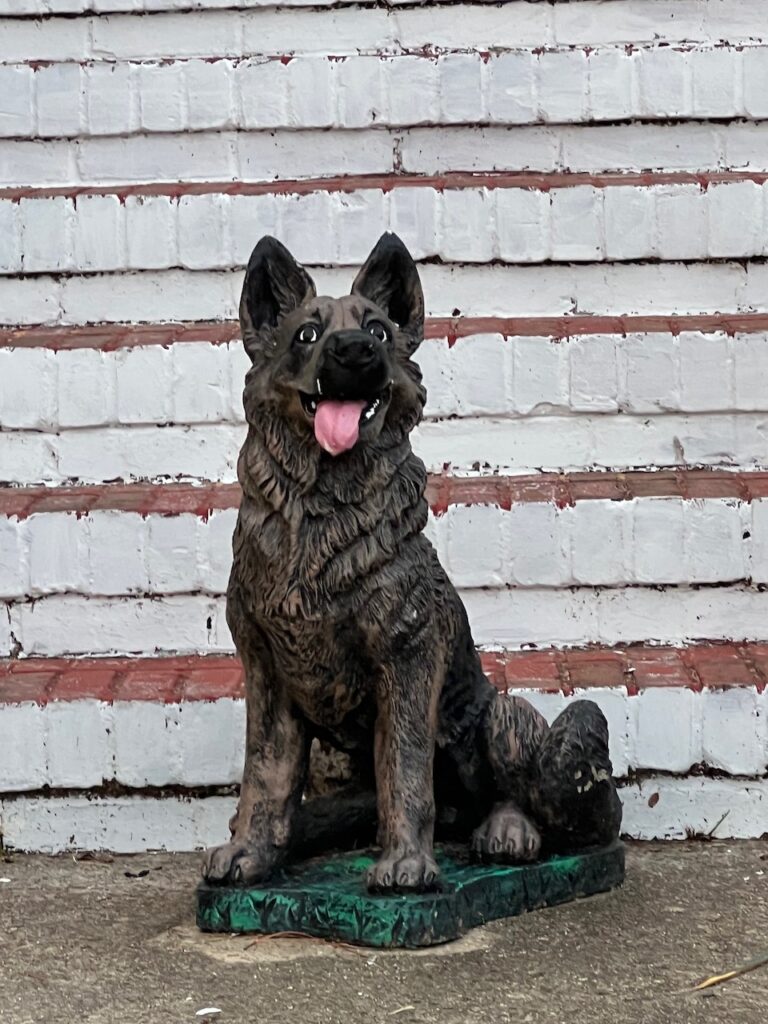

Okay, not bears, but I think the owners of these properties wanted equal time…
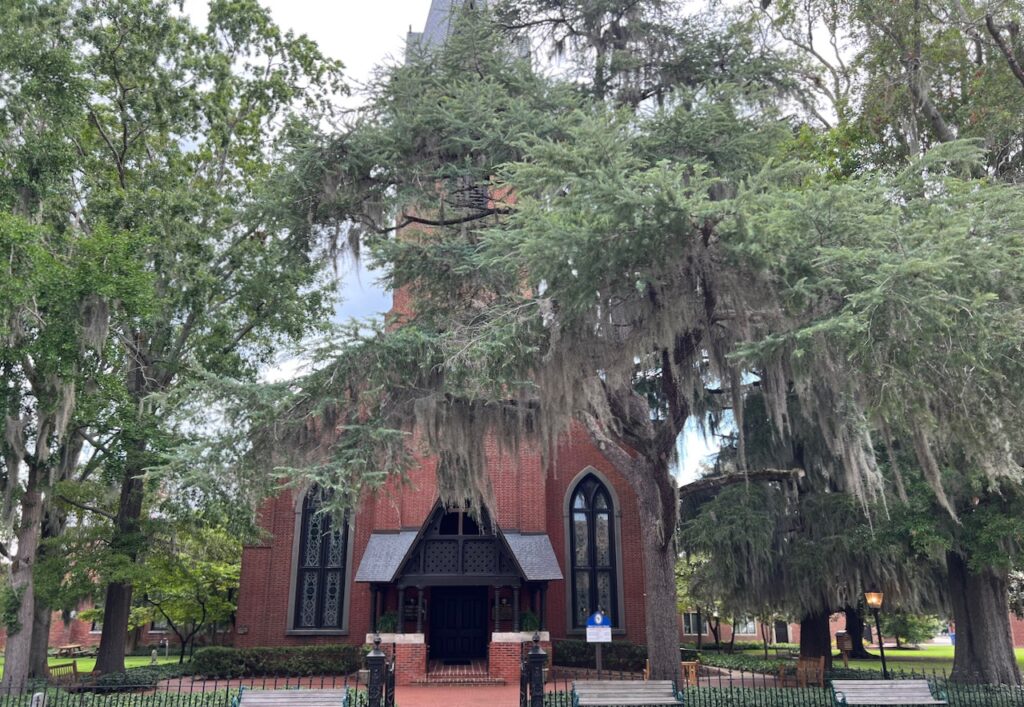
Besides bears, New Bern has some exotic architecture. This is Christ Episcopal Church. It had an unusual mix of brick, wood and ornate stained glass which lent it a European feel. 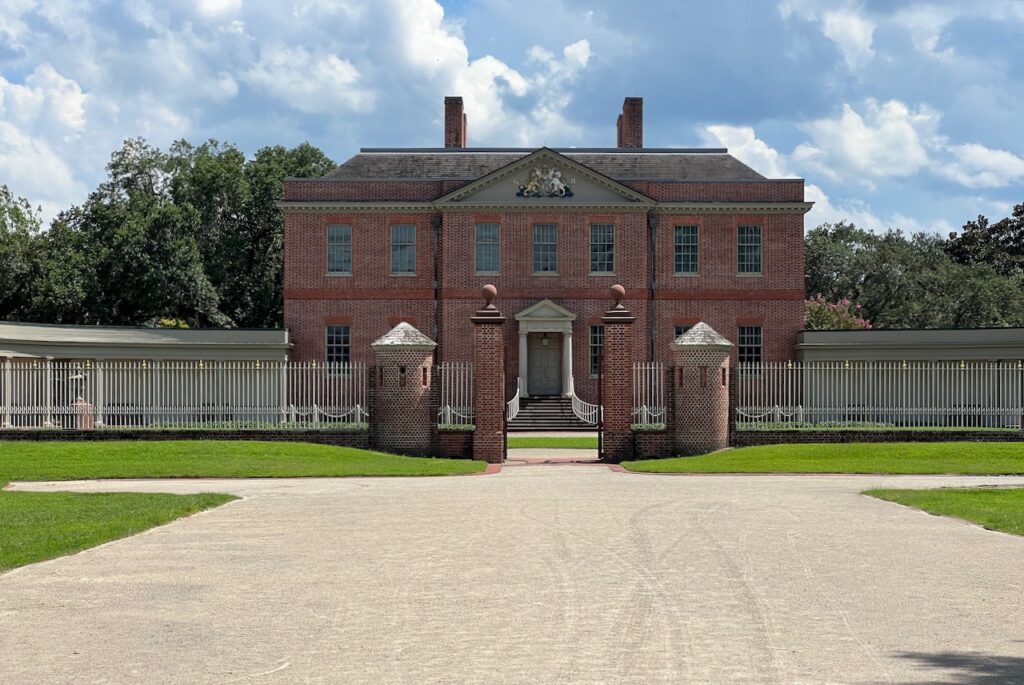

Tryon Palace
- The Outer Banks
While a trip to Ocracoke was not in our weather gods’ plan, we did make it to Cape Lookout, Roanoke Island and Kill Devil Hills. We’ll be back for Ocracoke…
Cape Lookout
The tiniest sliver of sandbank curled like a little finger at the bottom of the Outer Banks, Cape Lookout is more sea and sky than land.
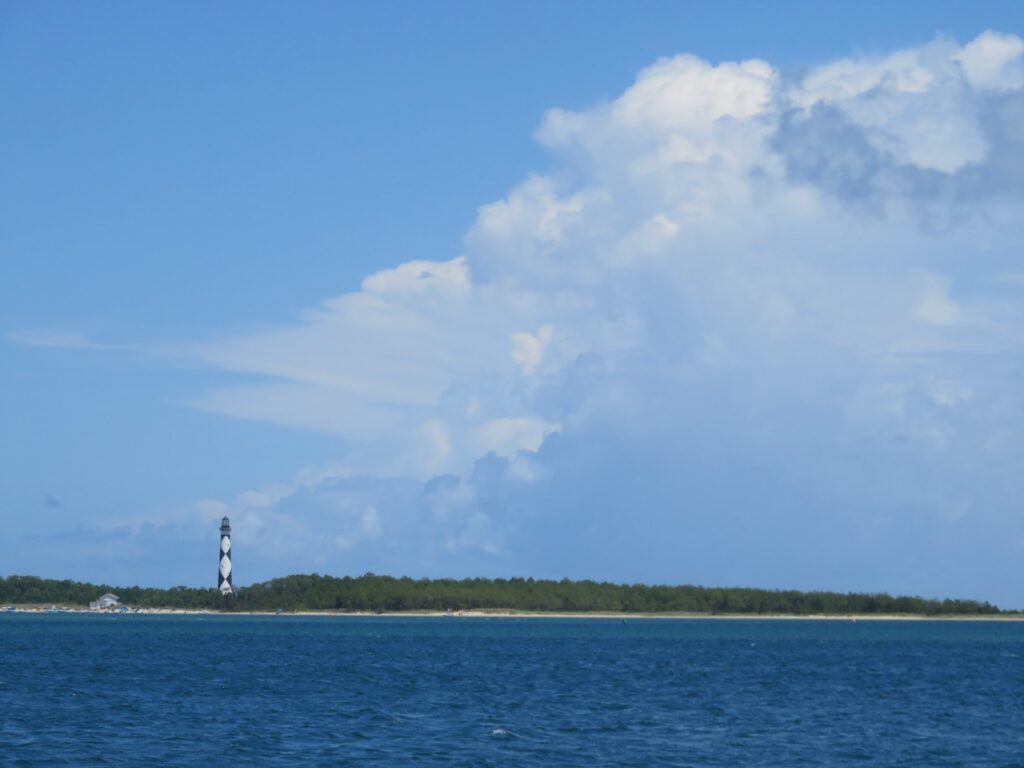

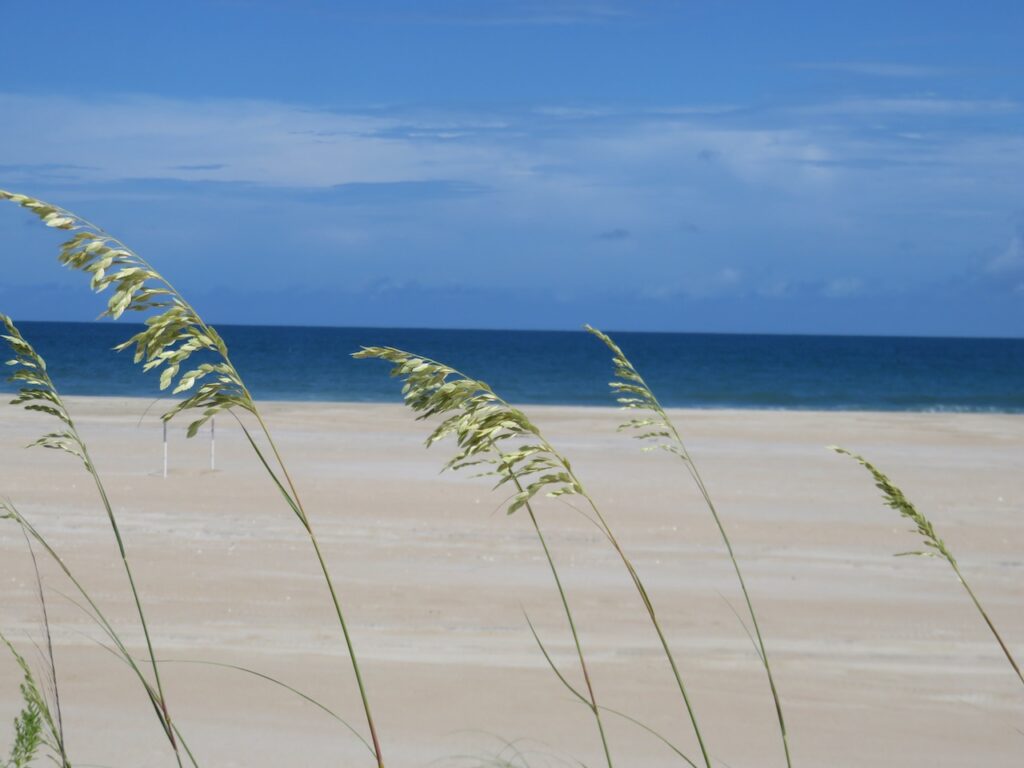
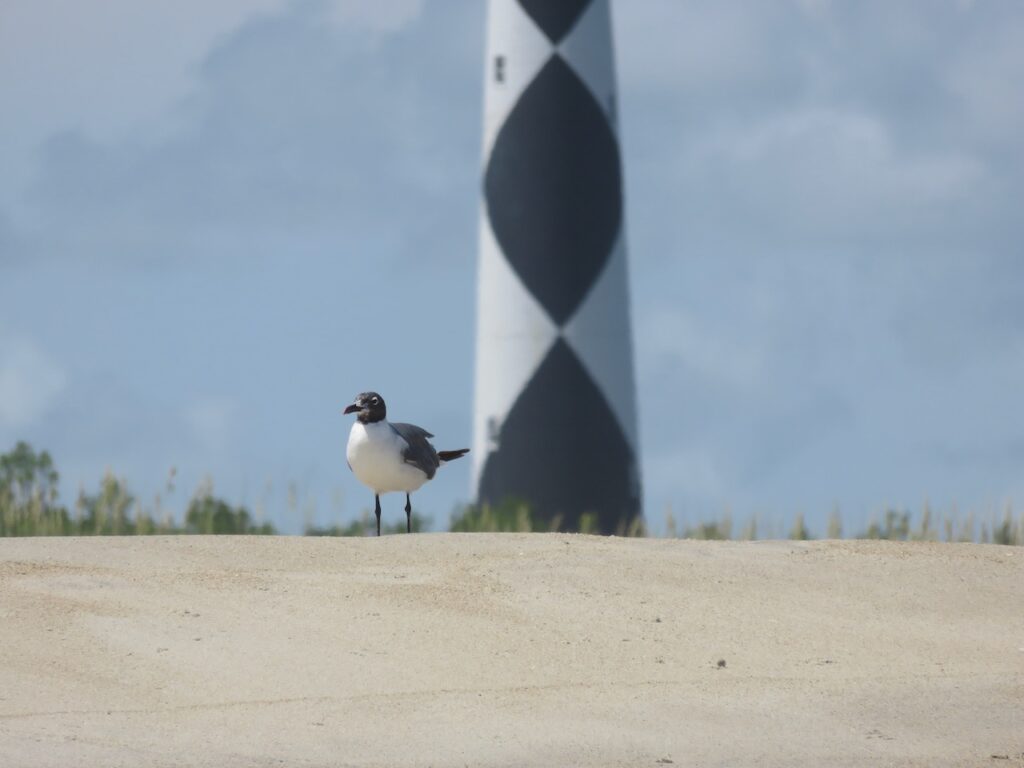
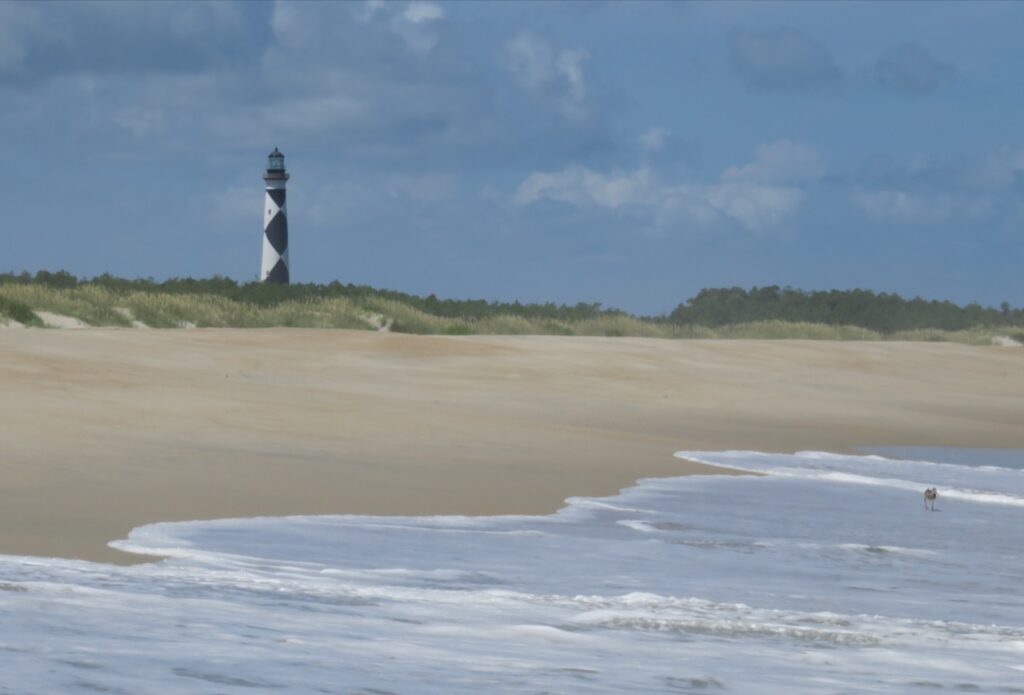
Roanoke Island

The Alligator River Swing Bridge guards the entry from Albemarle Sound. It carries one of the two access roads to the Outer Banks. The bridge is completely full with cars on “move in Saturday” for the thousands of vacation homes on the Outer Banks. 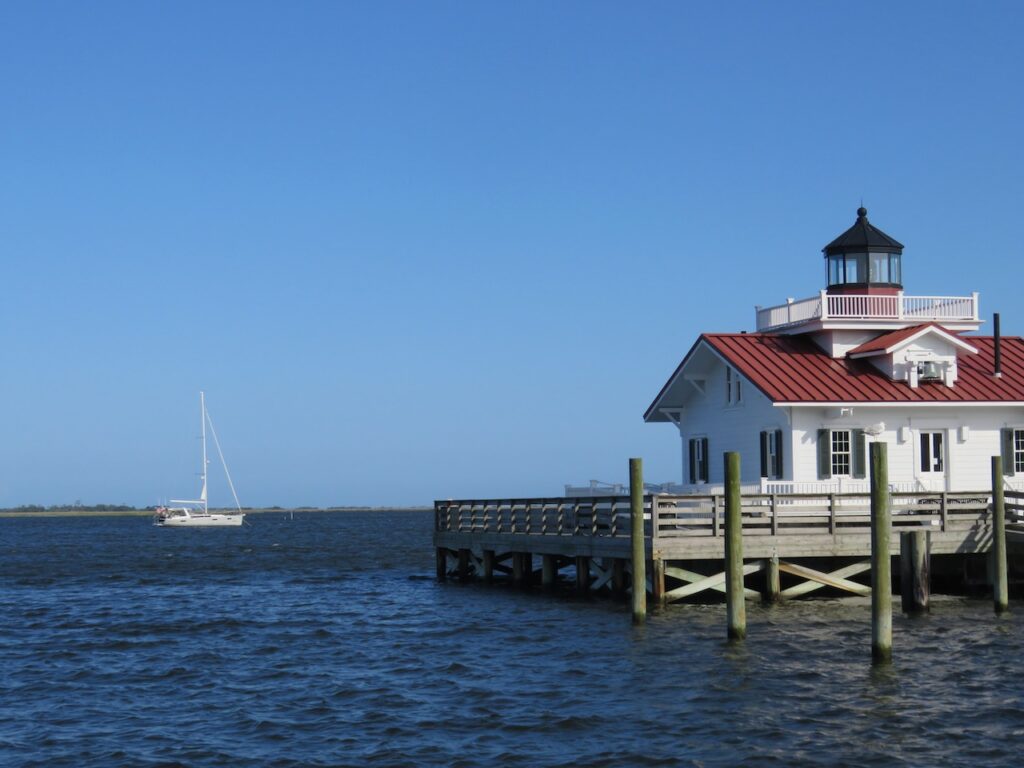
Aurora in the harbor at Manteo. 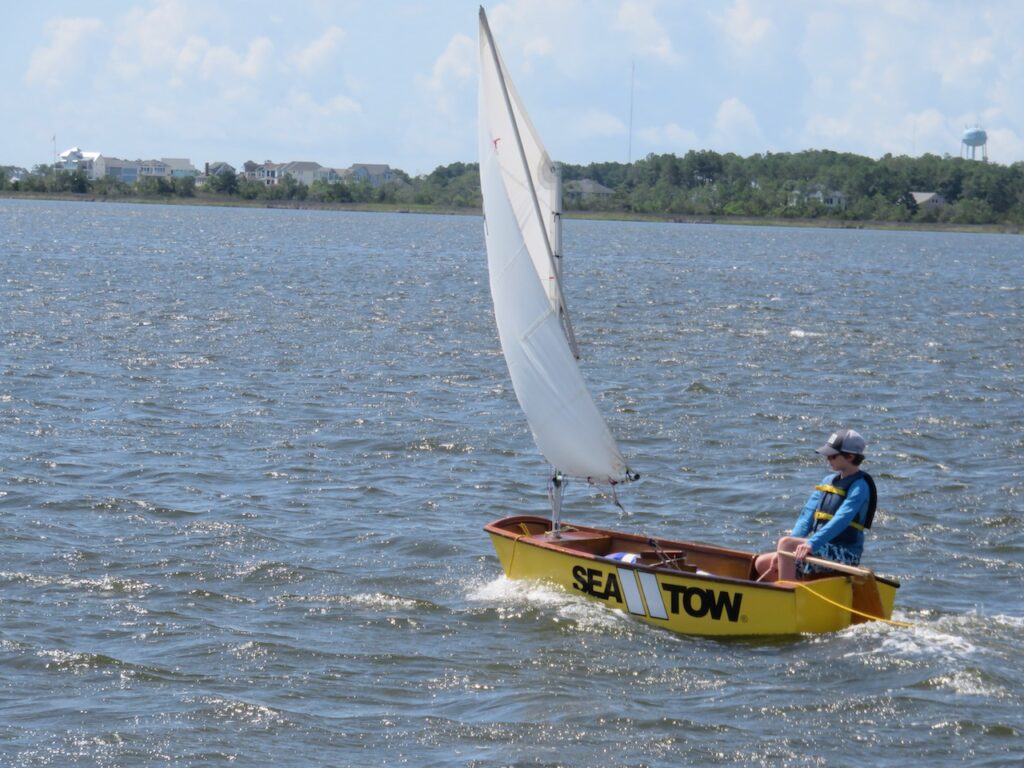
Manteo’s Sea Tow. Happily, we have not needed to call them since the Erie Canal!😜 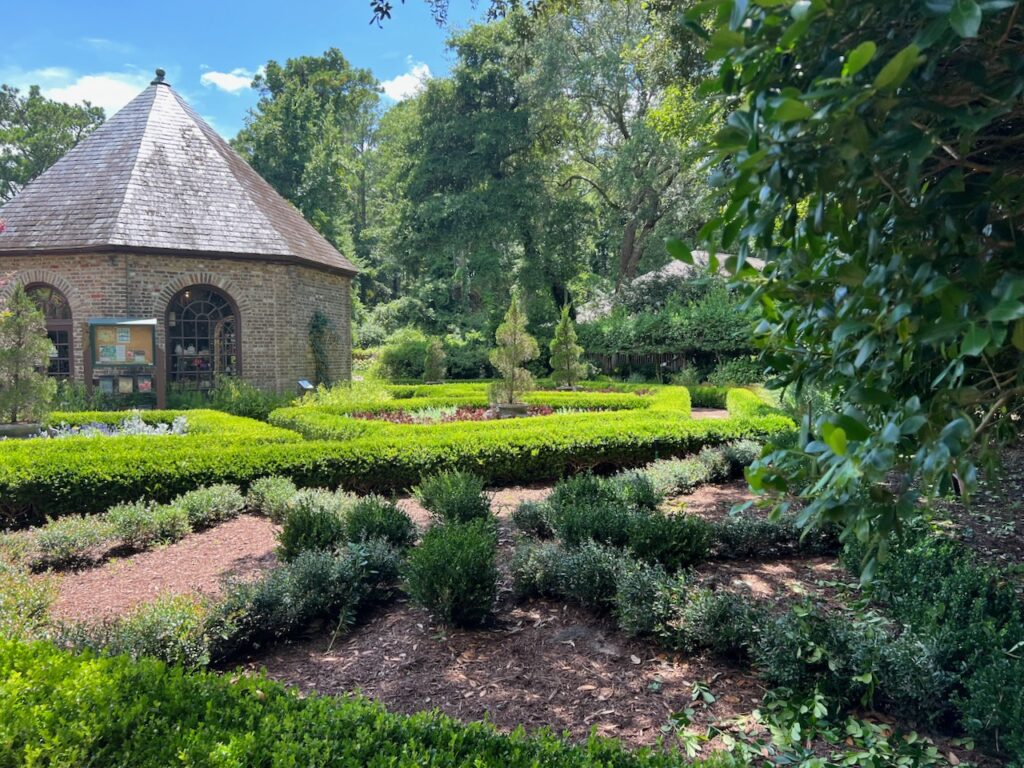
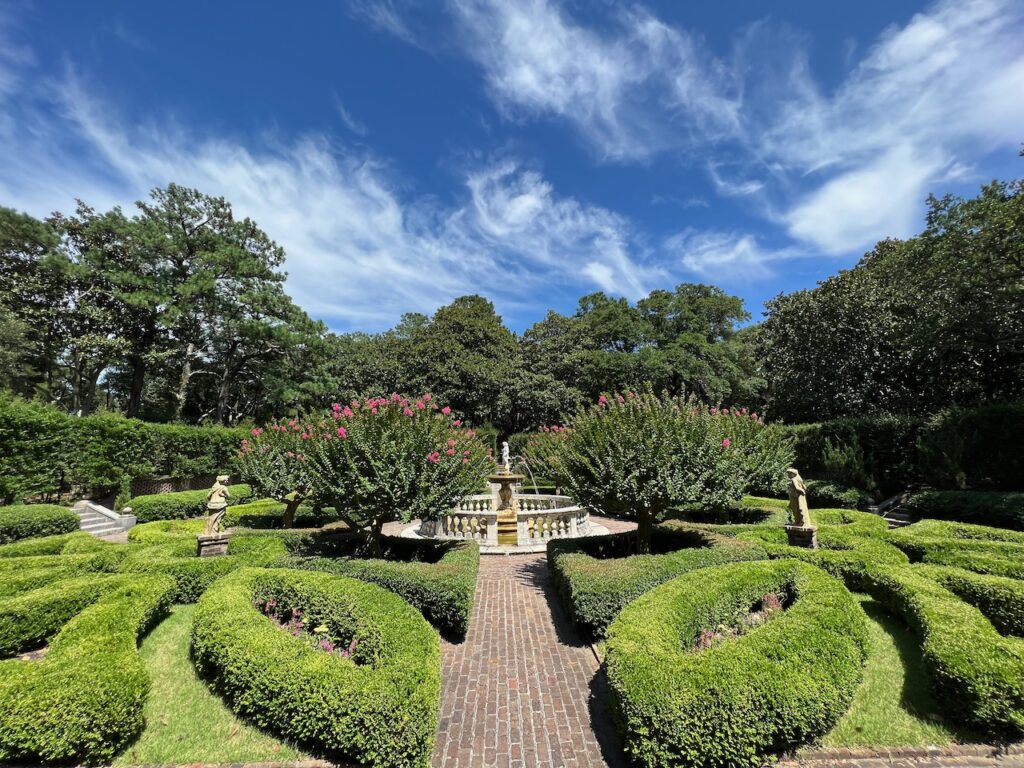
The Elizabethan Gardens. These gardens were designed and are managed by the North Carolina Garden Club. The site emulates the plantings and garden layouts which would have been found during the reign of Elizabeth I. 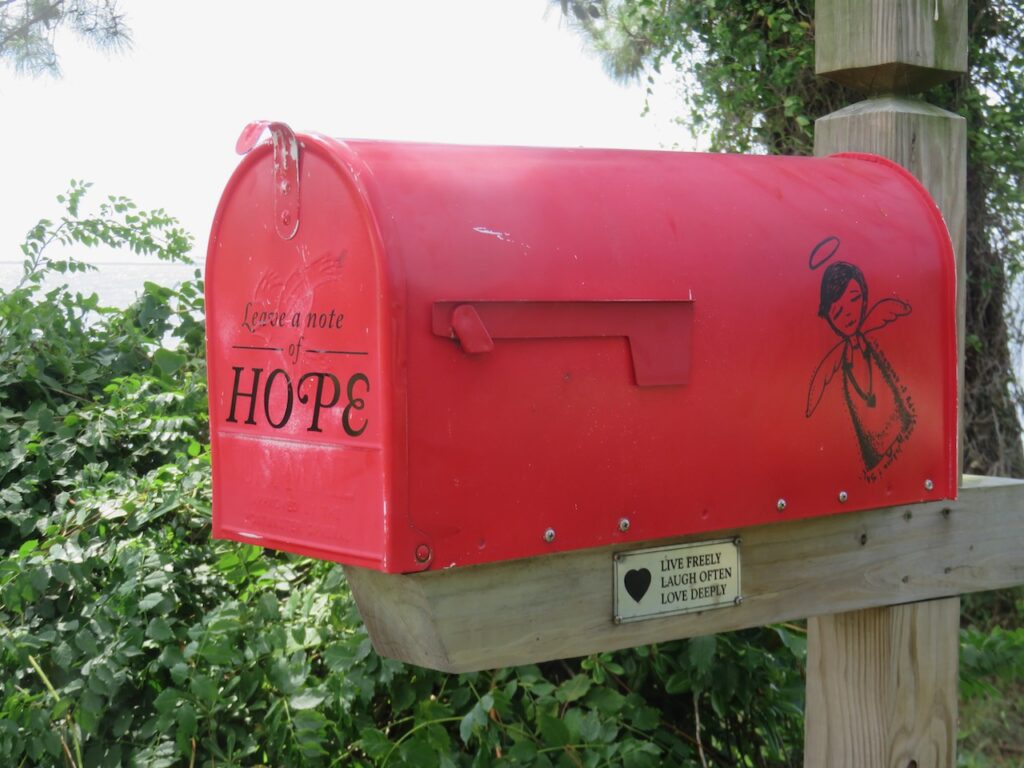
Roanoke’s Little Red Mailbox. The original mailbox is on Kill Devil Hills and was set up after a small boy was washed to sea. Inside the mailboxes are journals for passers by to leave their kind thoughts and wishes. Kill Devil Hills
We rented a car and left Roanoke for the Wright Memorial and the beach. The story of the tenacity, ingenuity and patience of these bicycle mechanics with a dream is inspiring. It is also a testament to what small, incremental steps can lead to when they build one upon the other. CI (Continuous Improvement) in action…

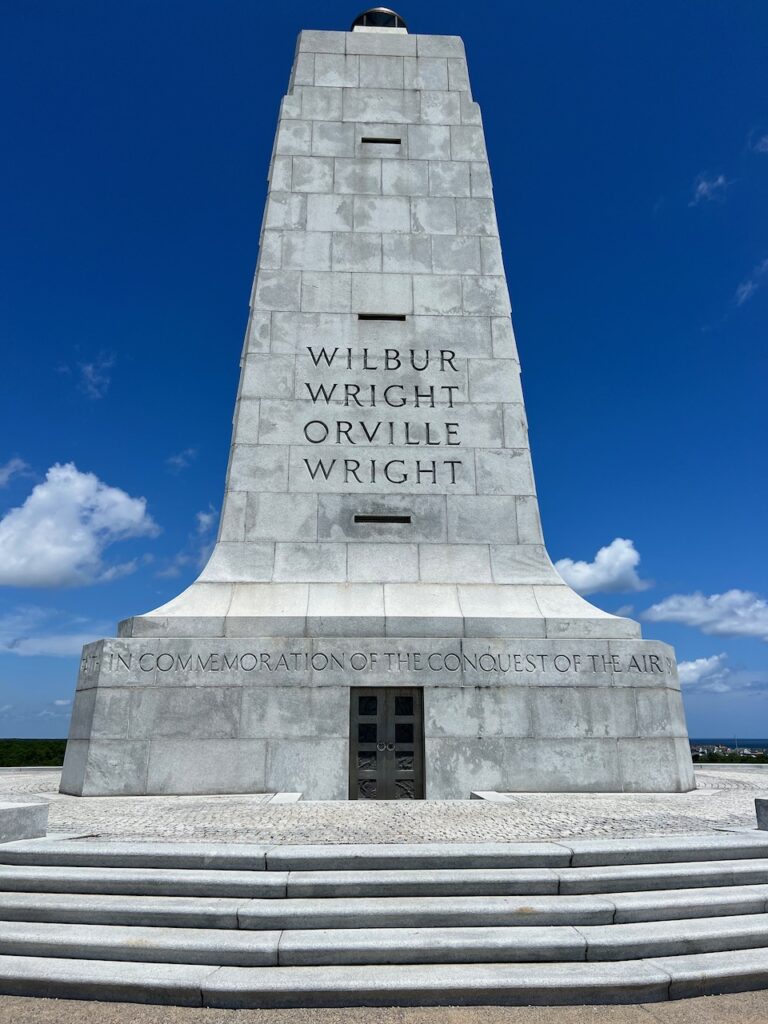
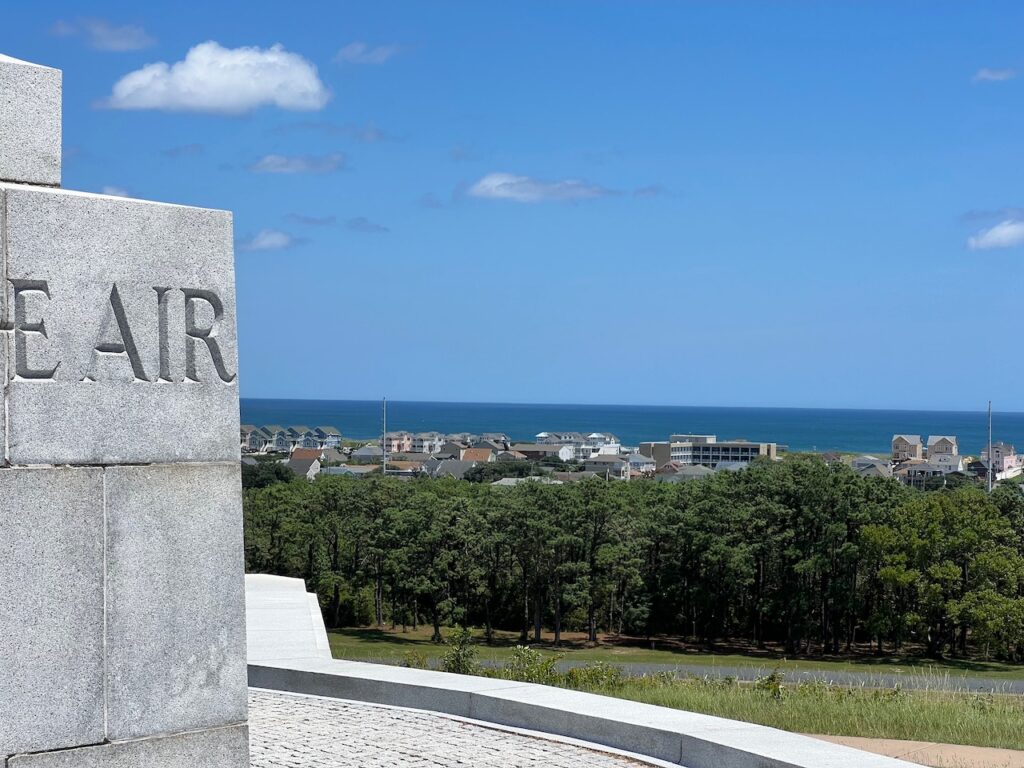
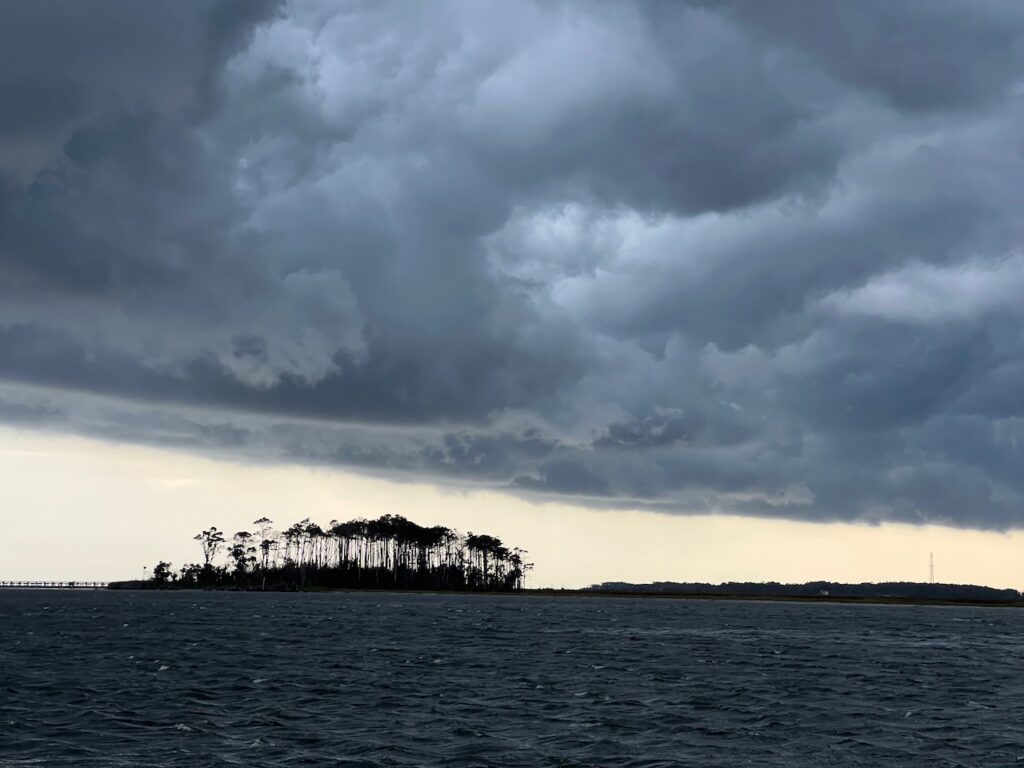
This is pretty much EVERY afternoon in the Outer Banks in July.⚡️⚡️⚡️ - The Dismal Swamp Canal
While strikingly beautiful and unlike anywhere else we have been, you have the Dismal Swamp Canal to thank for the flurry of recent posts… Probably not the best time to transit when temps are in the high 90’s (F, 36C) and every humidity-loving, human-eating bug is out and about; gave me the opportunity to hide out behind screens. 😜
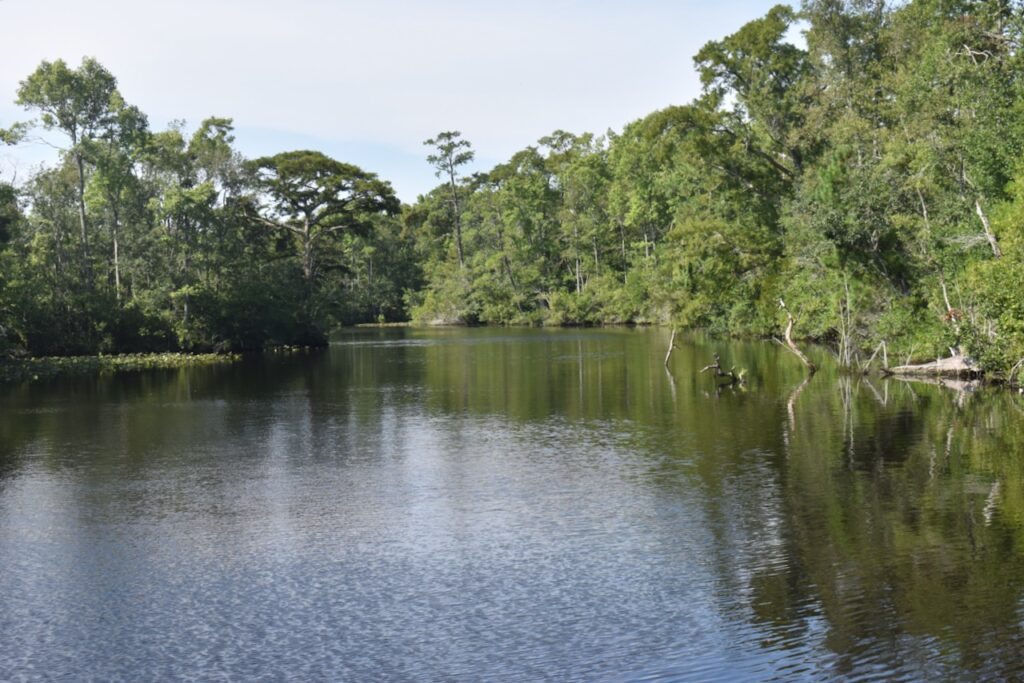

The canal starts out benignly enough… like the Erie Canal or some of the rivers we have traveled. 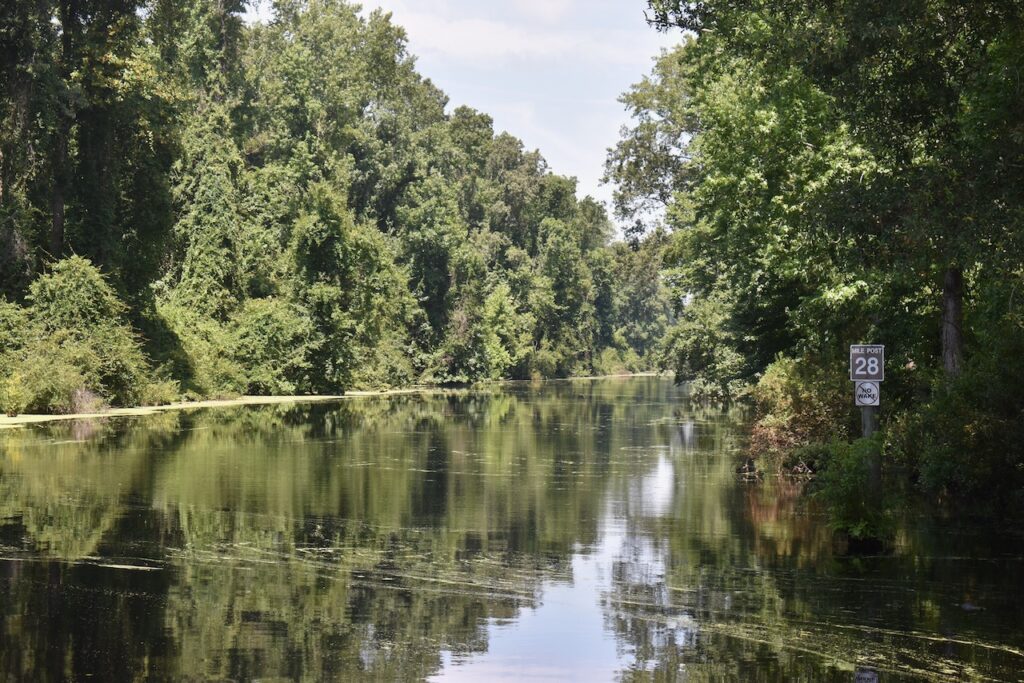
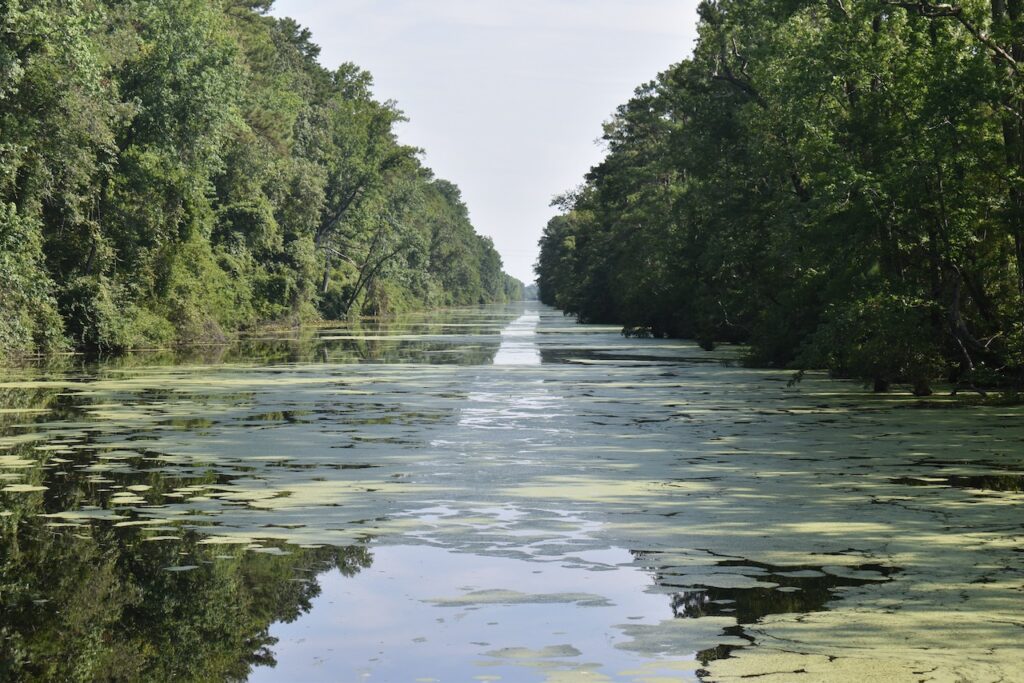
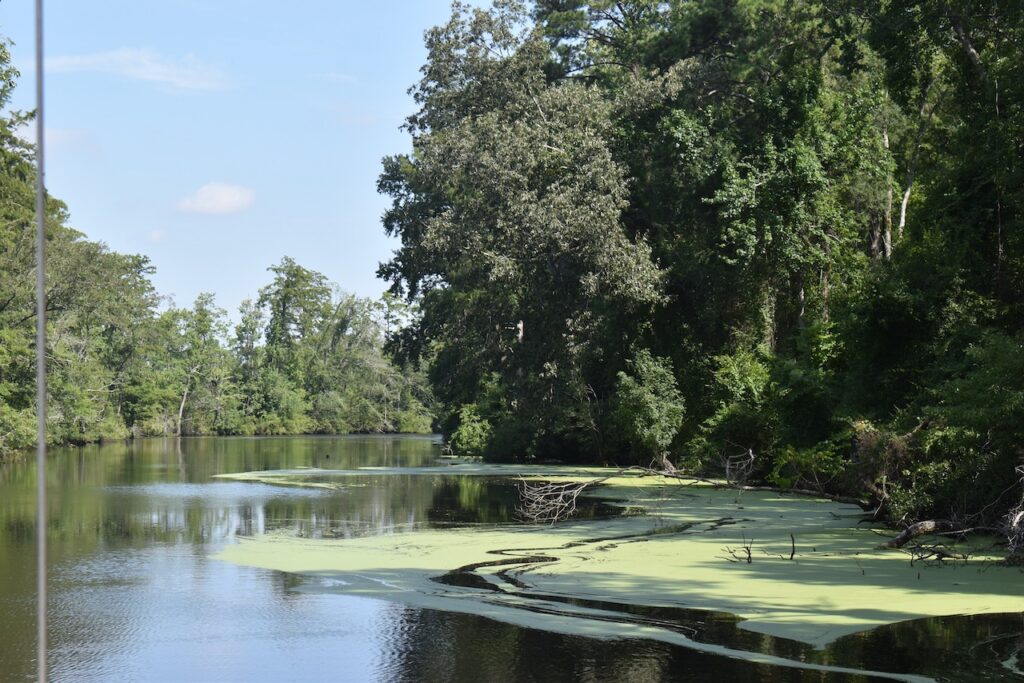
Then a taste of things to come… 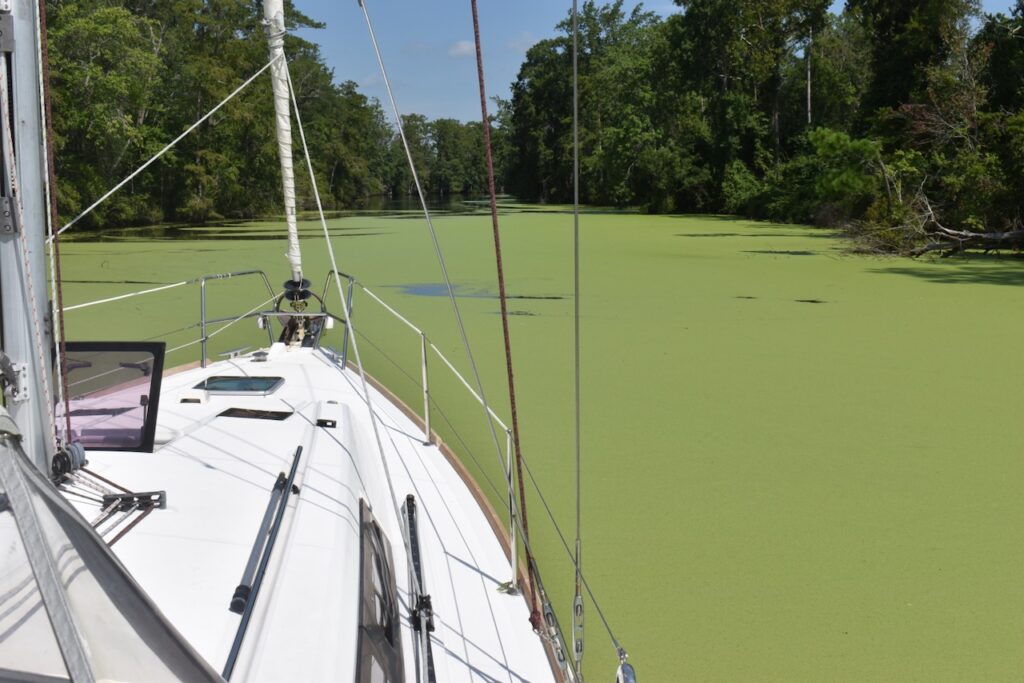
… duckweed! 
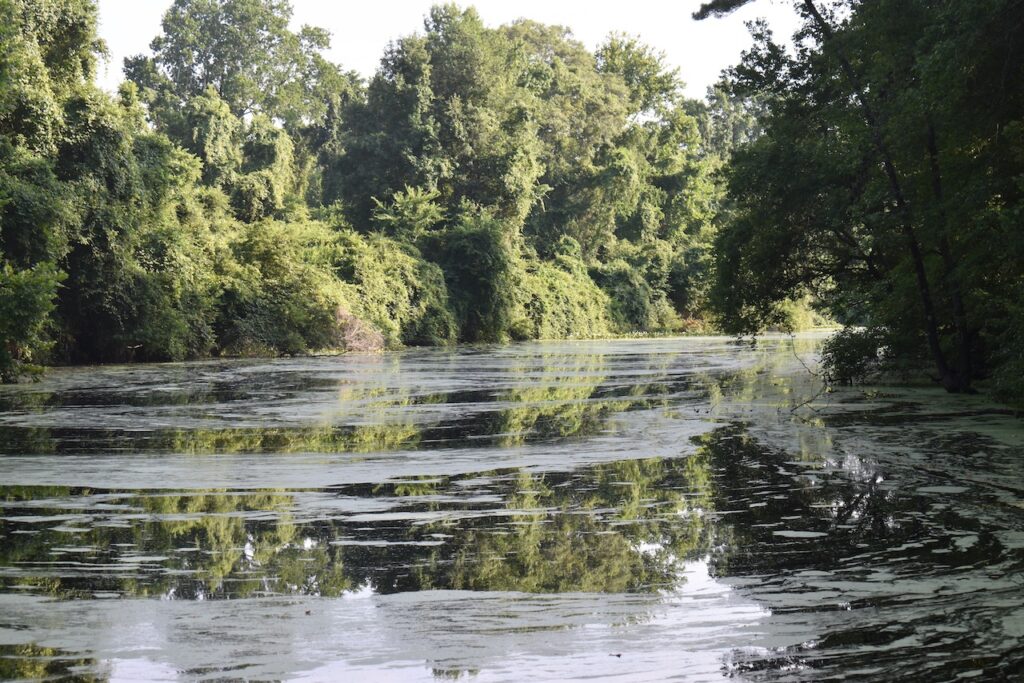
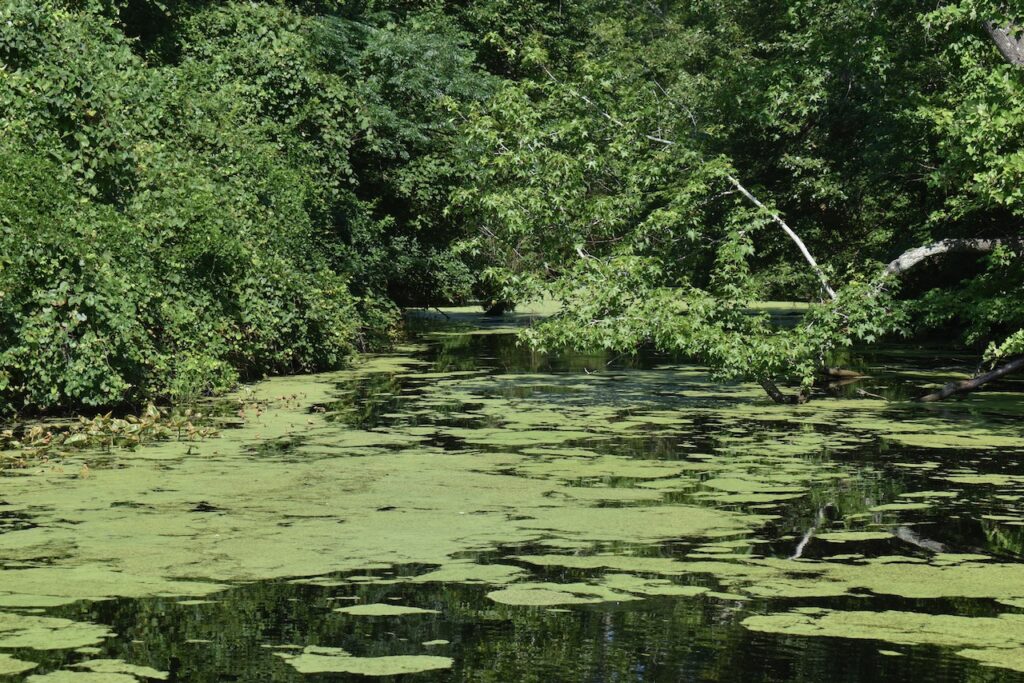
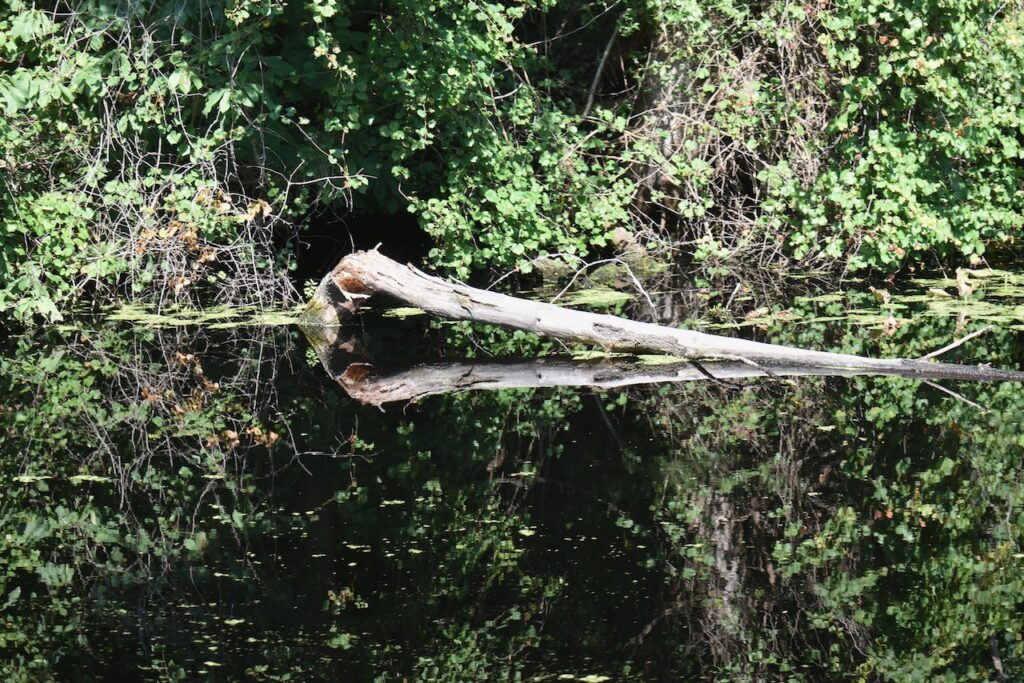

Truly a swamp now… a narrow path through dead-still water with navigation hazards above and below. 
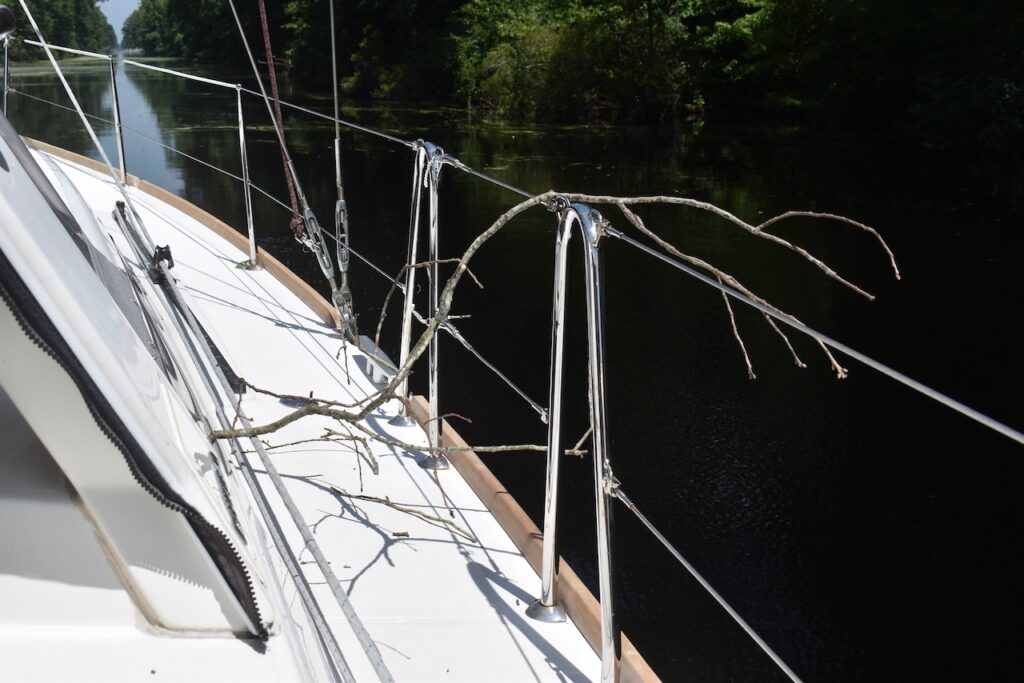
And critters hitching a ride.
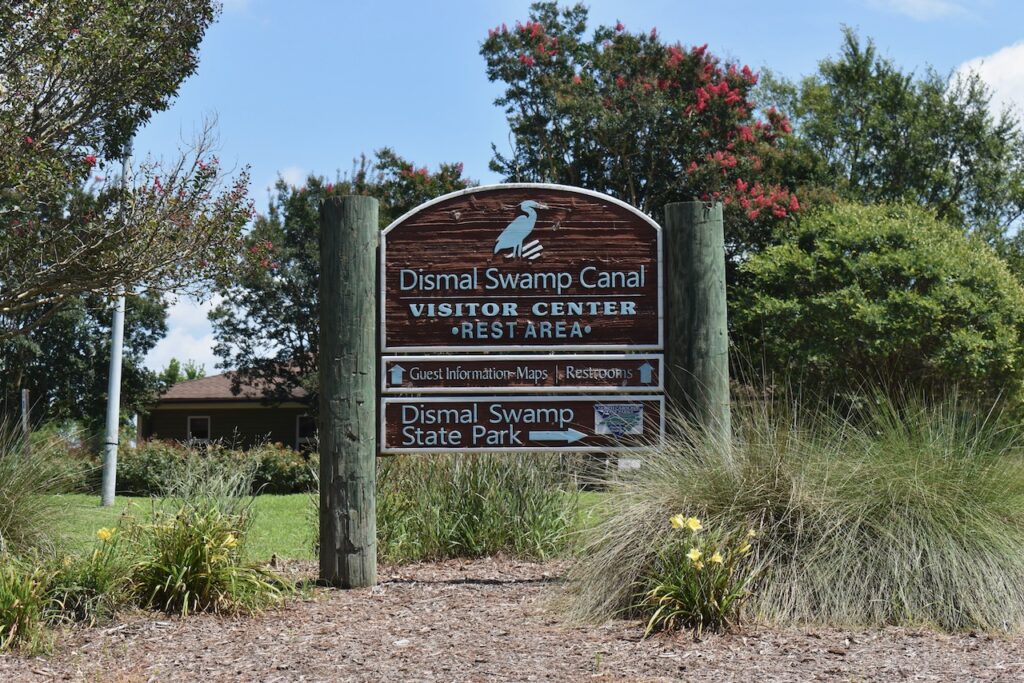
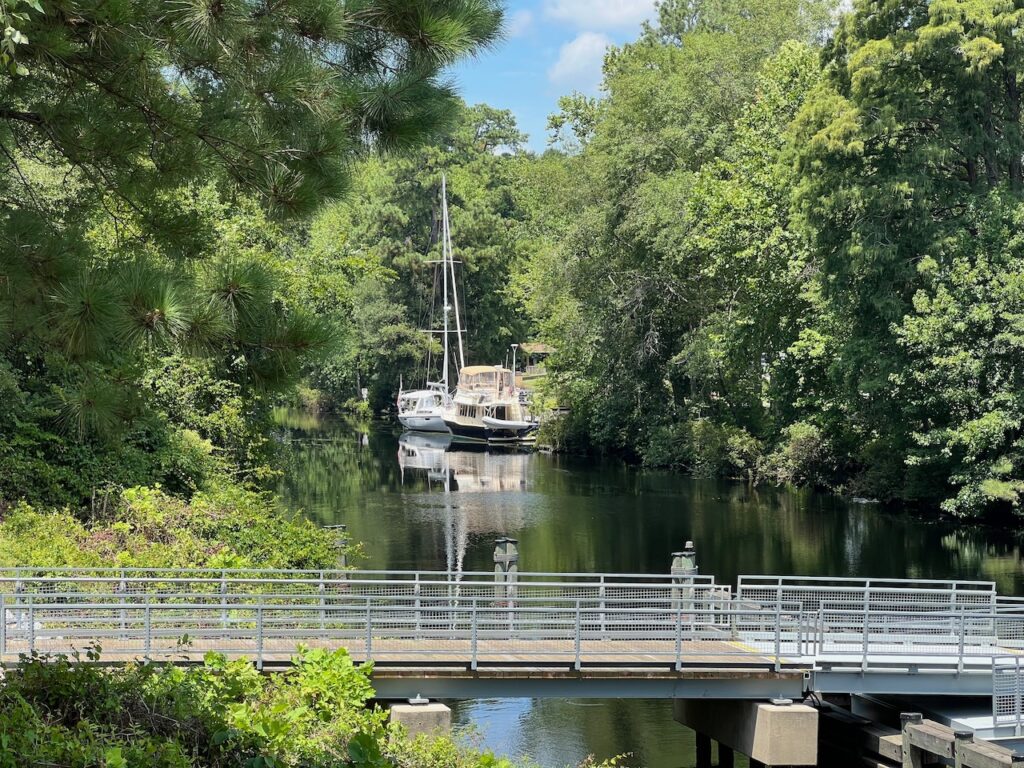
In the middle of the canal is the Visitor Center dock. The canal is bounded by locks which run on a 3 hour schedule and we would not have made the exit lock so we spent the night here. We also ran into our Lower Mississippi “buddy boat”. 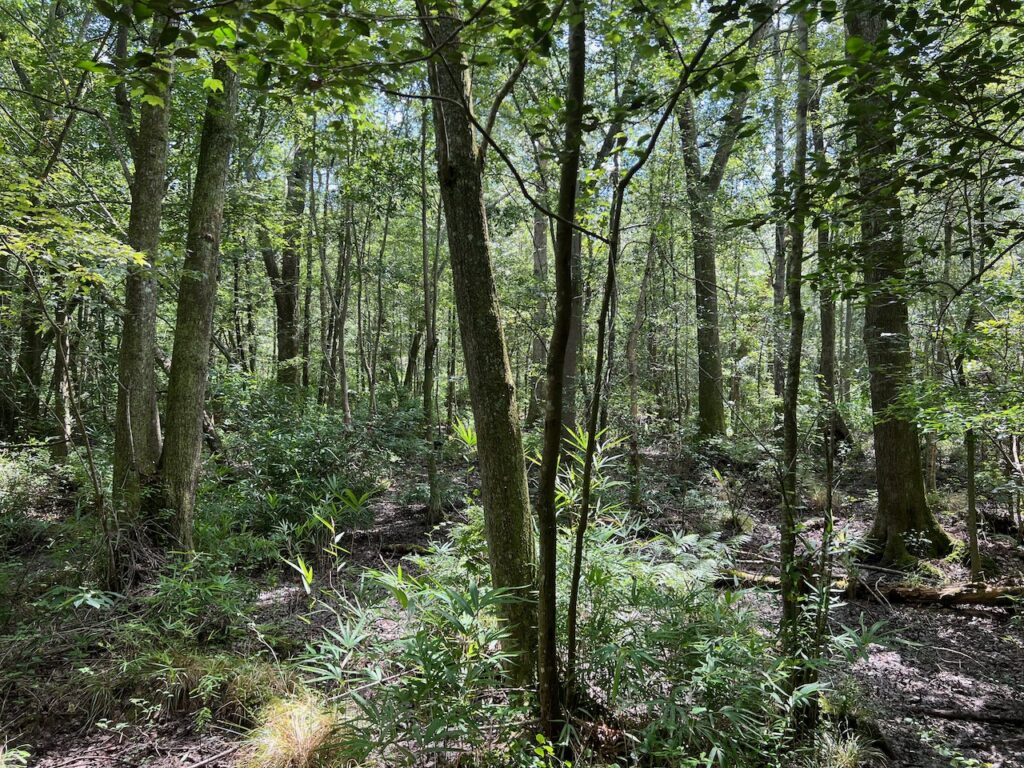
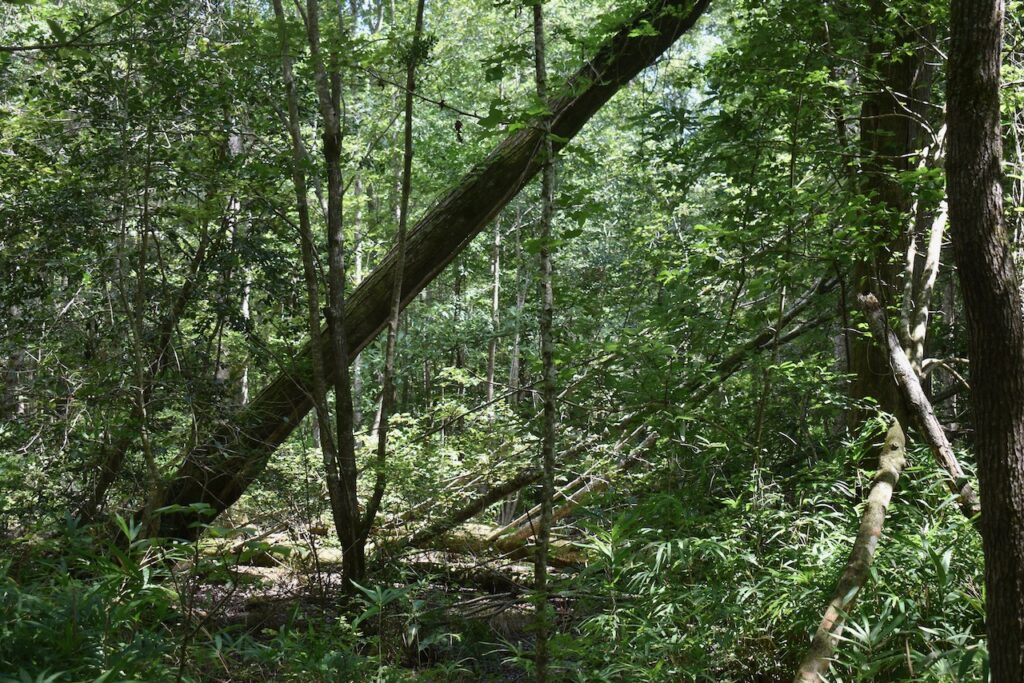

The Dismal Swamp State Park 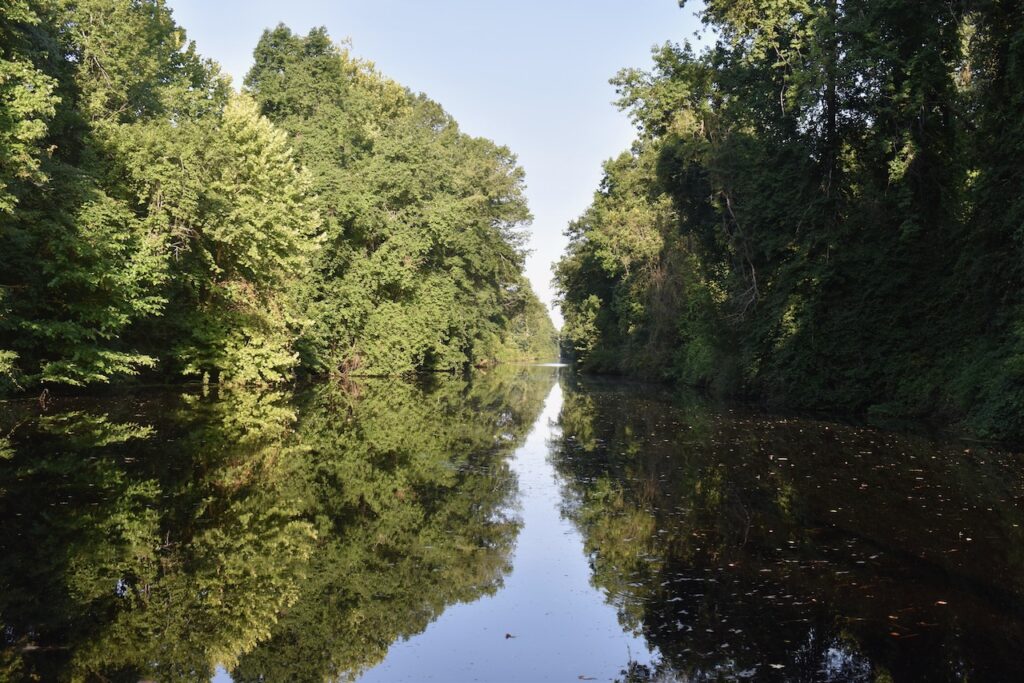
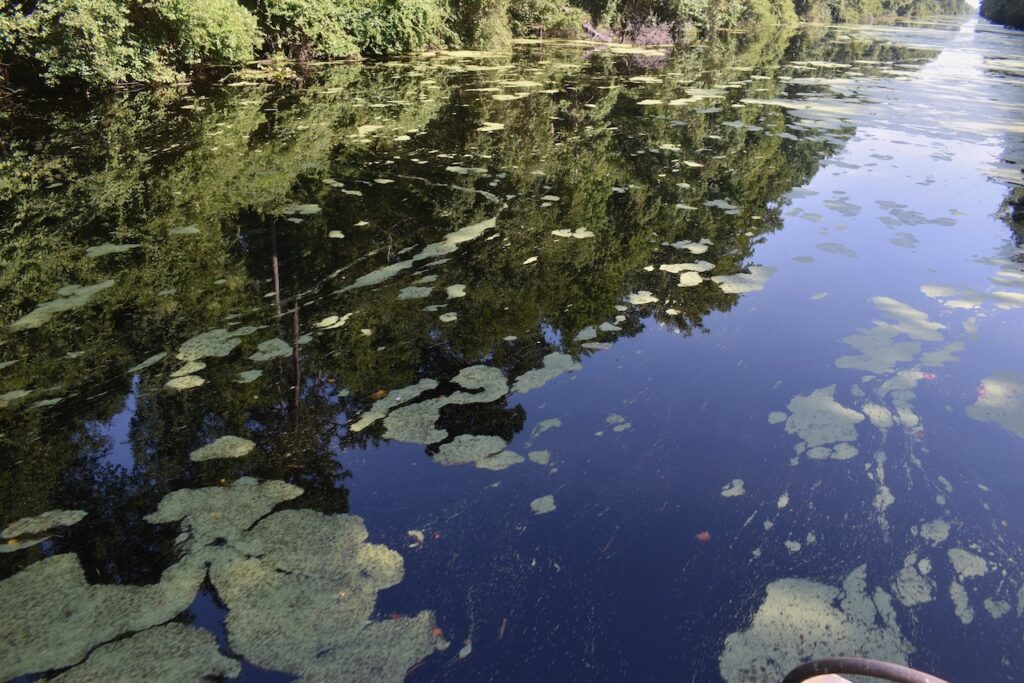

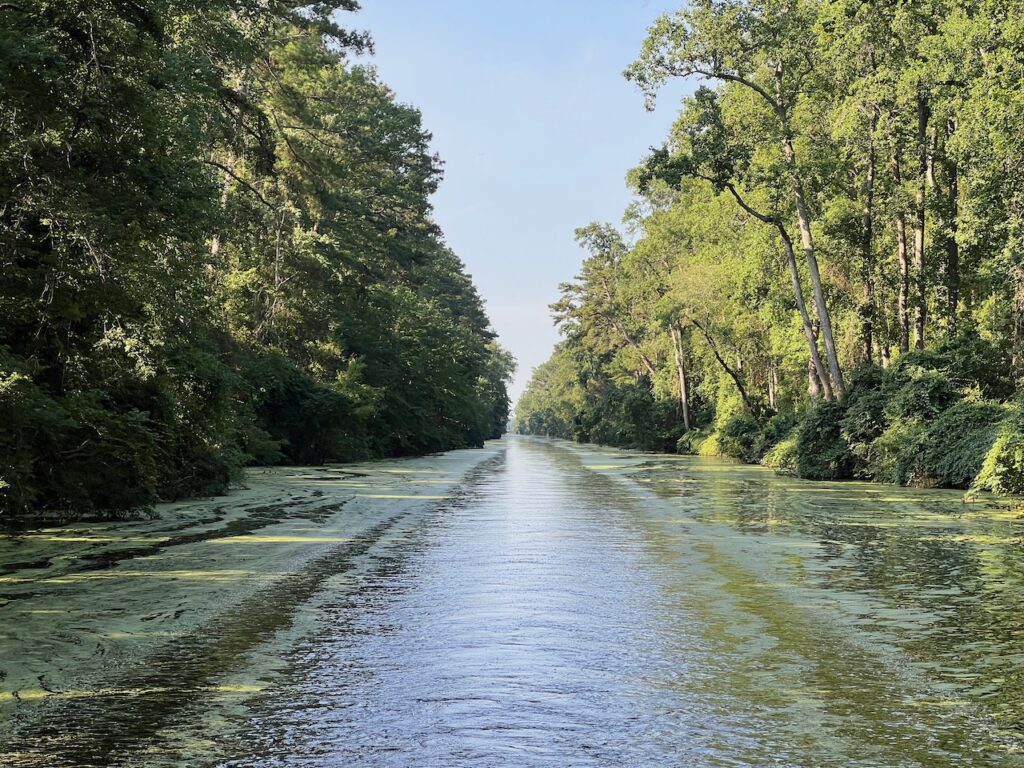
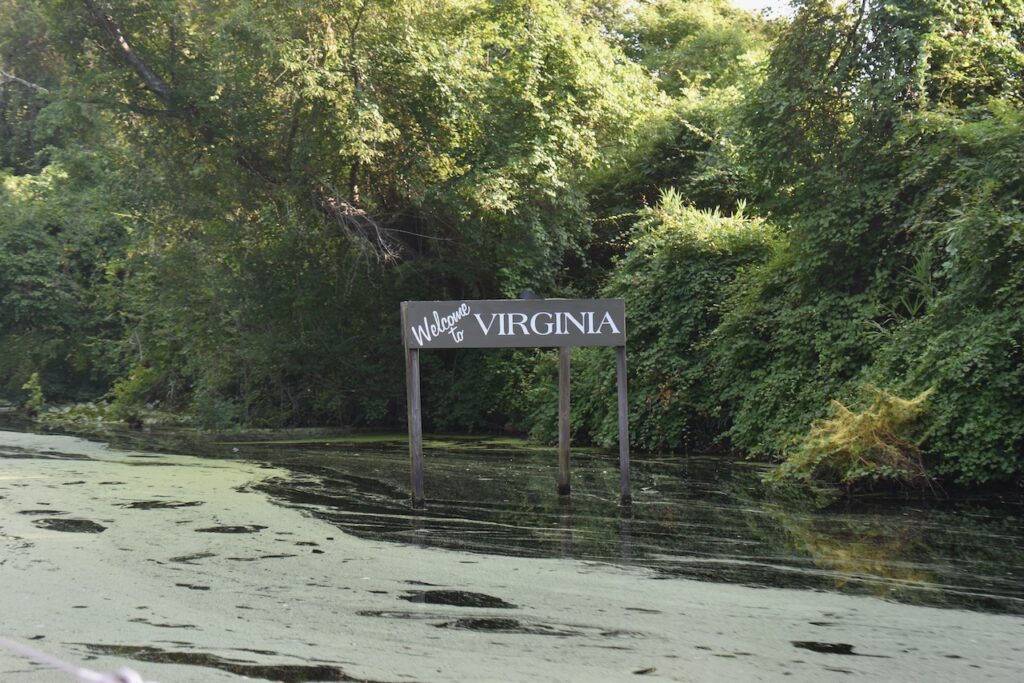
👍👍👍 - Sweet Carolin(a)🎶🎶🎶
After a month in South Carolina, it felt as though we barreled through North Carolina having passed through the state in a little over two weeks. But traveling afforded us the ability to enjoy a variety of the state’s offerings and to see how it changed all within an eight hour day. Some of our North Carolina favorites…
… the street art…
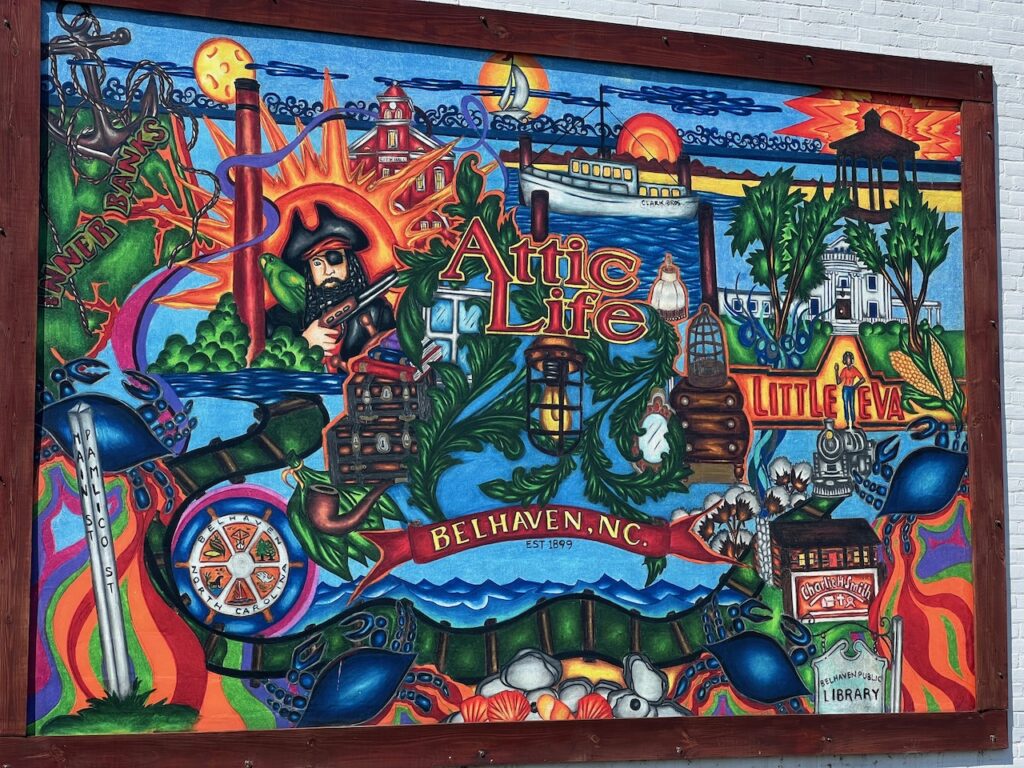

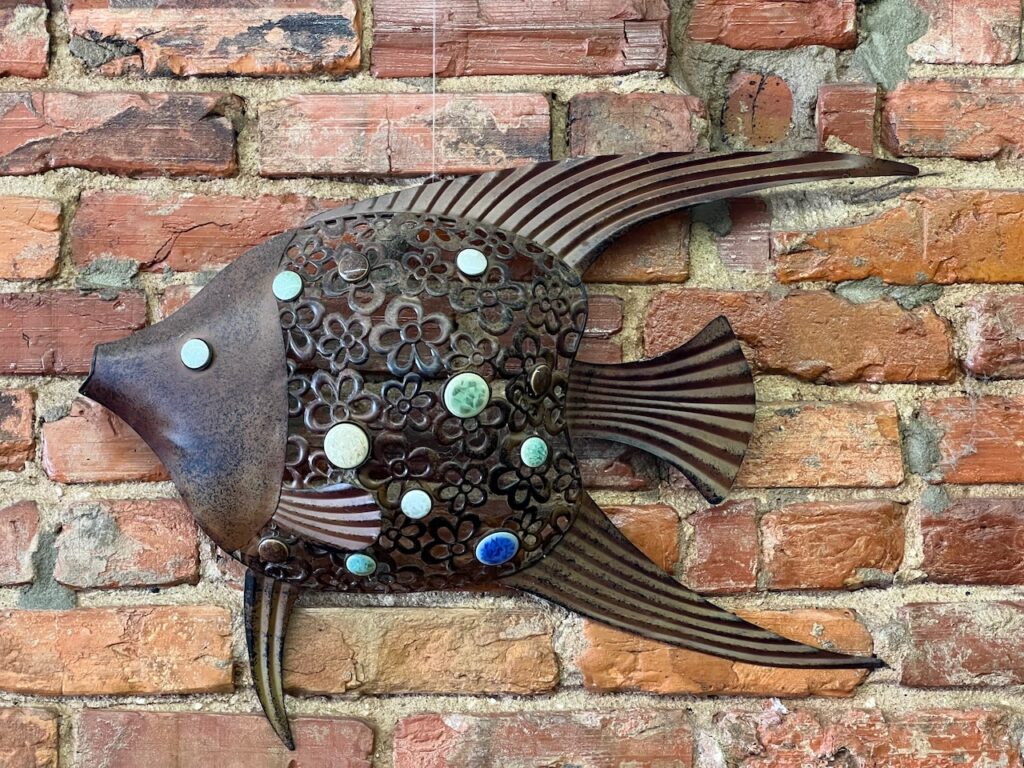

… the little town mascots…
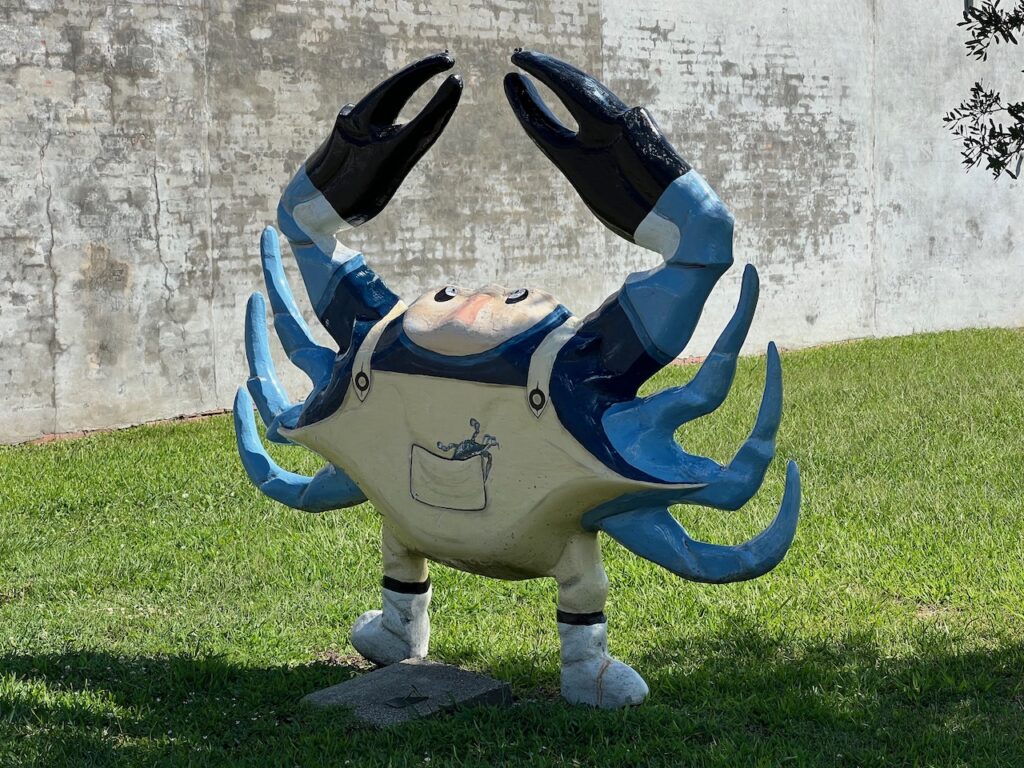
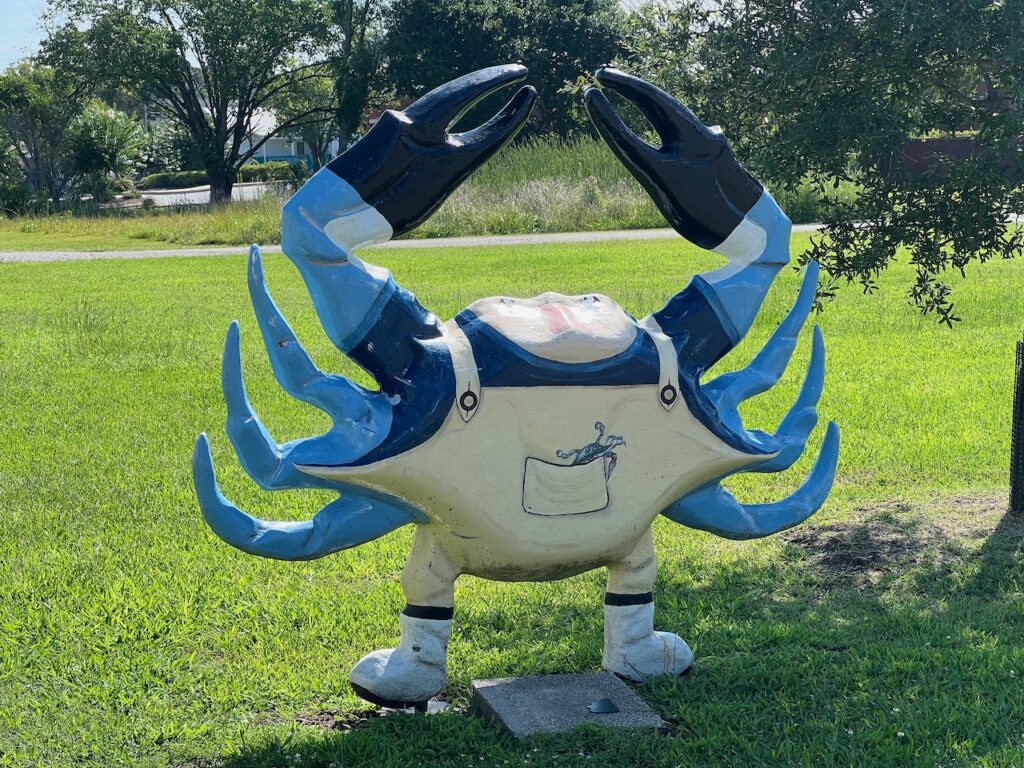
… the beaches…
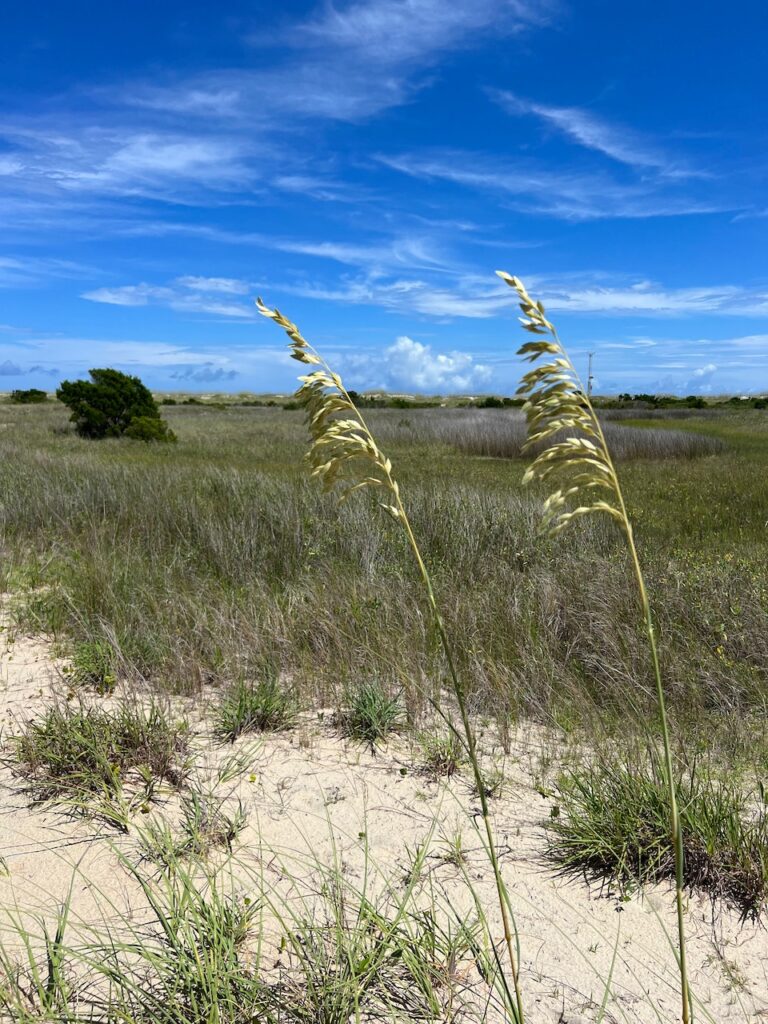
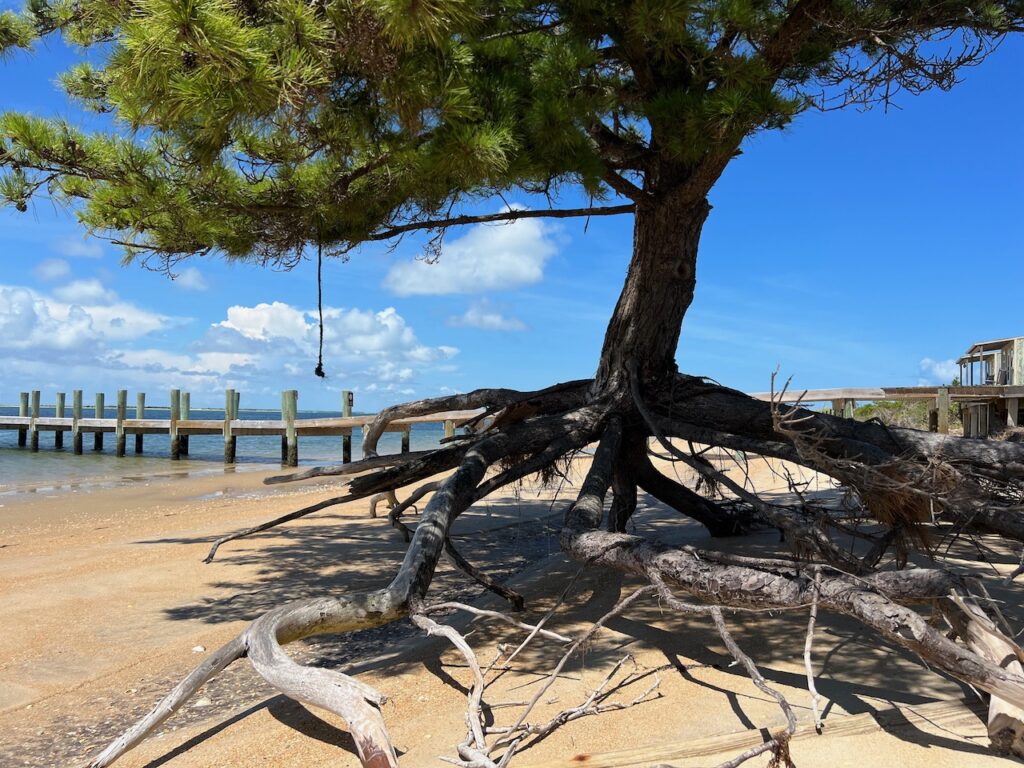
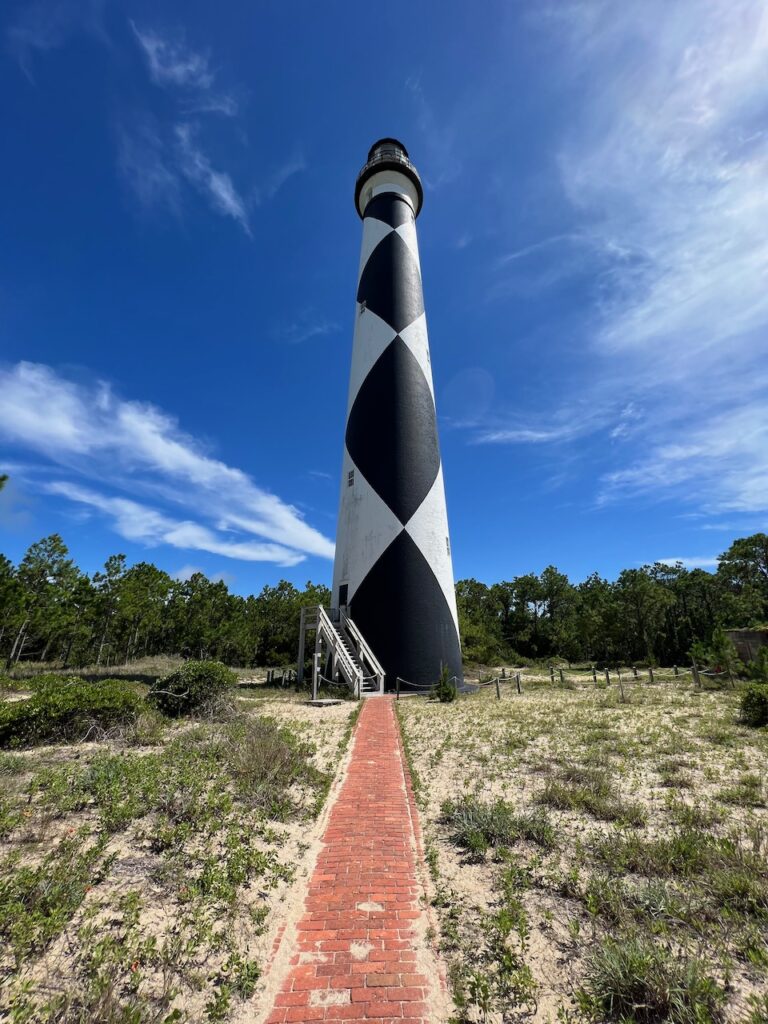
… the gracious architecture…

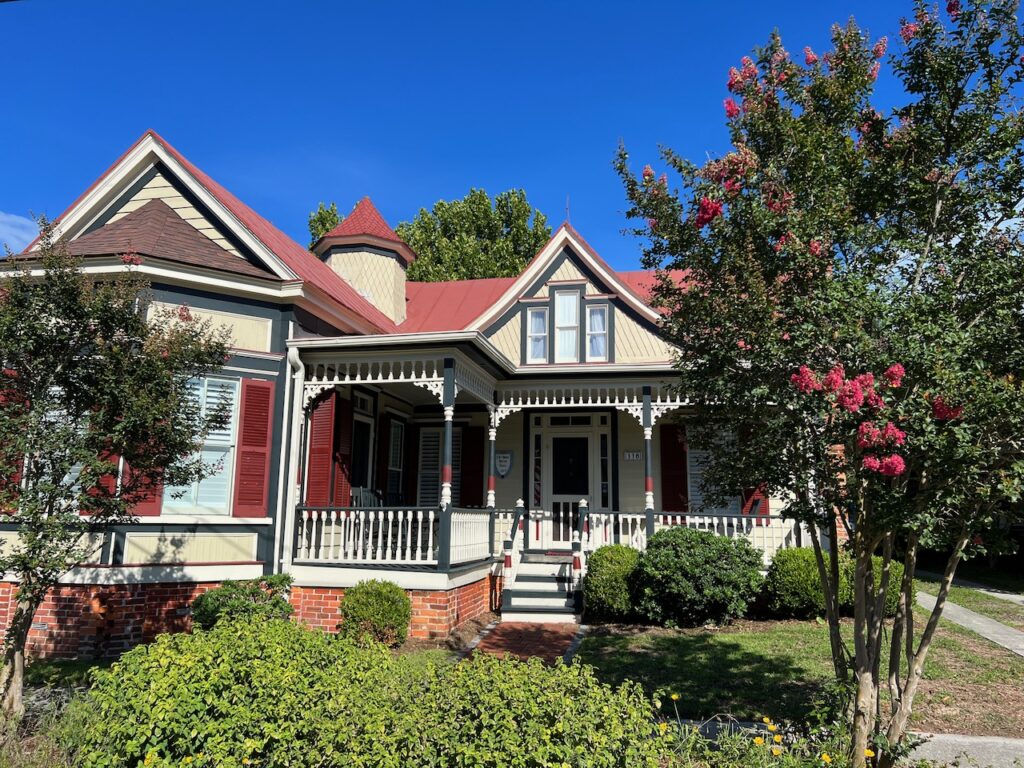
… the rivers…
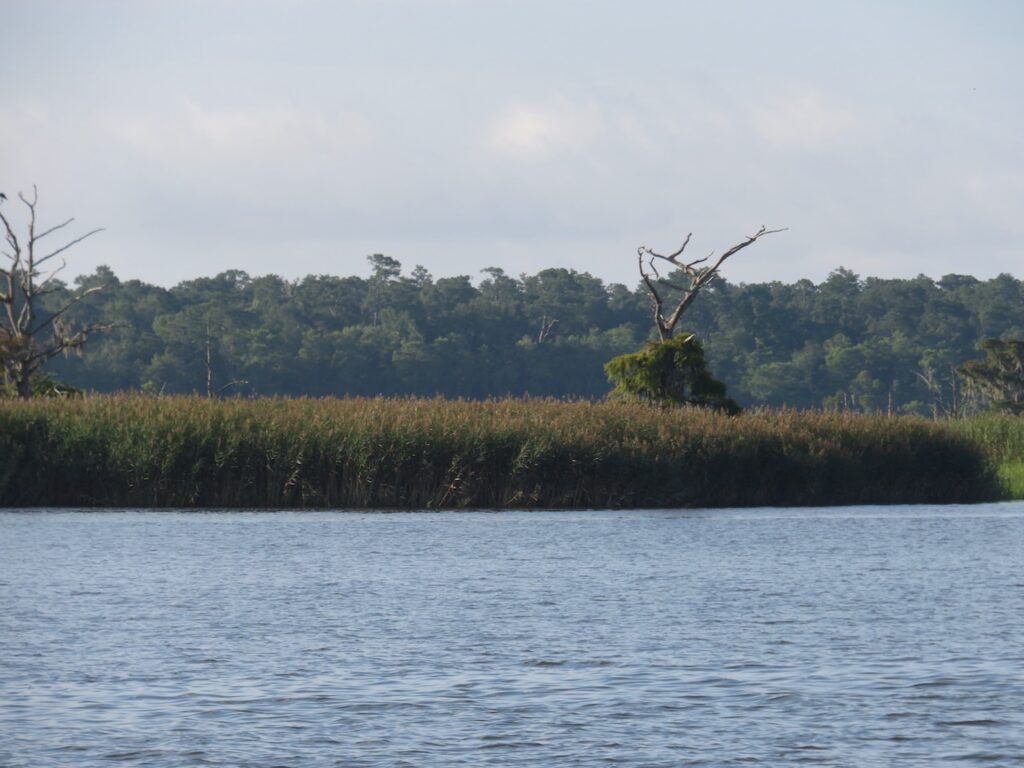
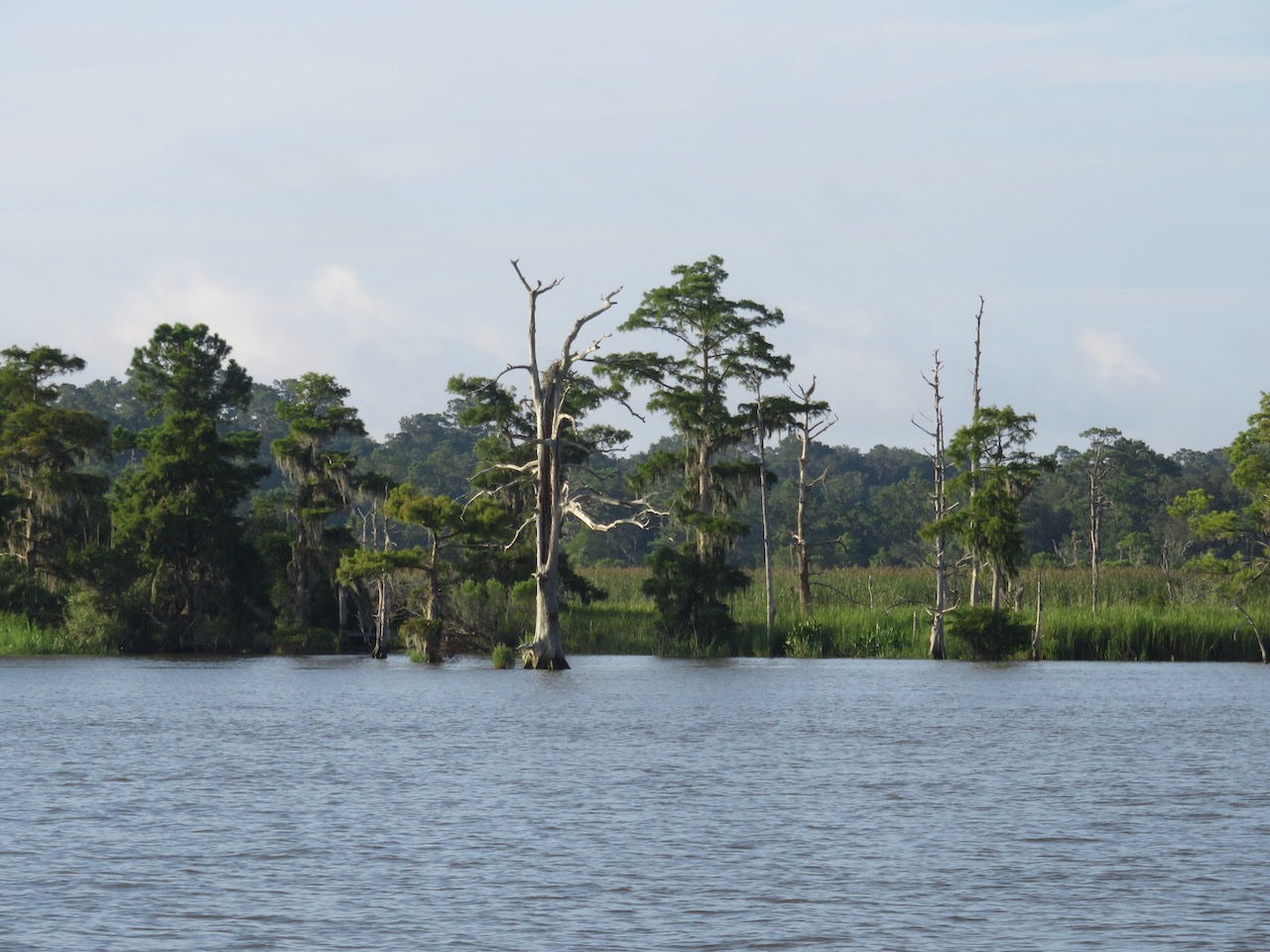
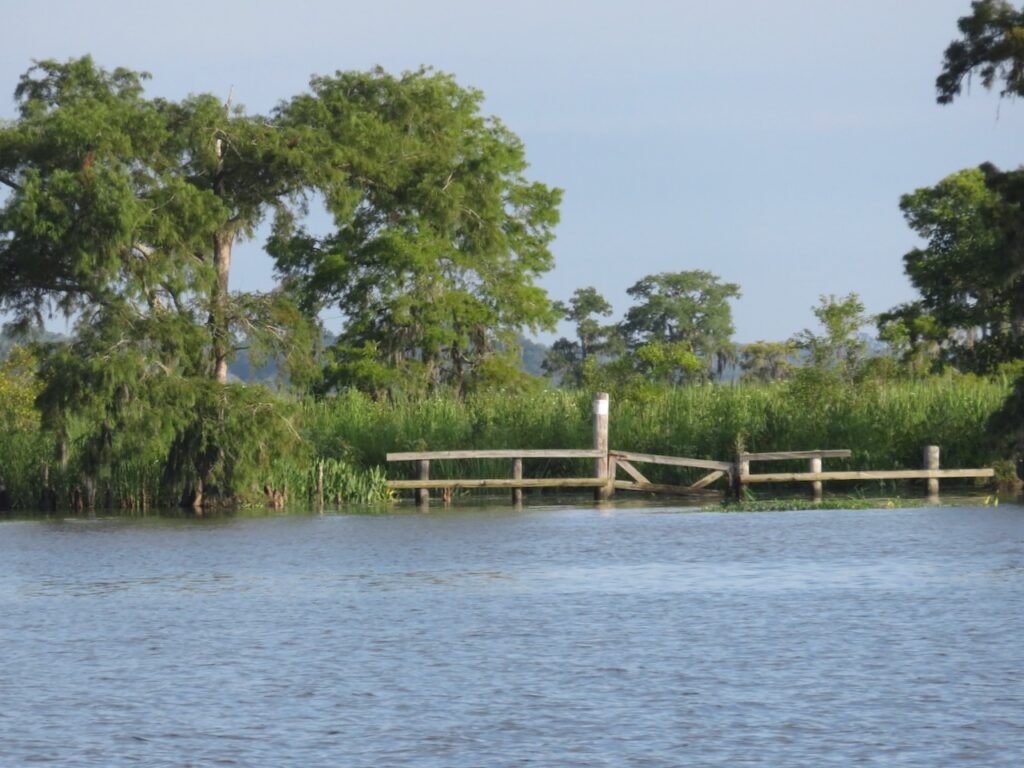
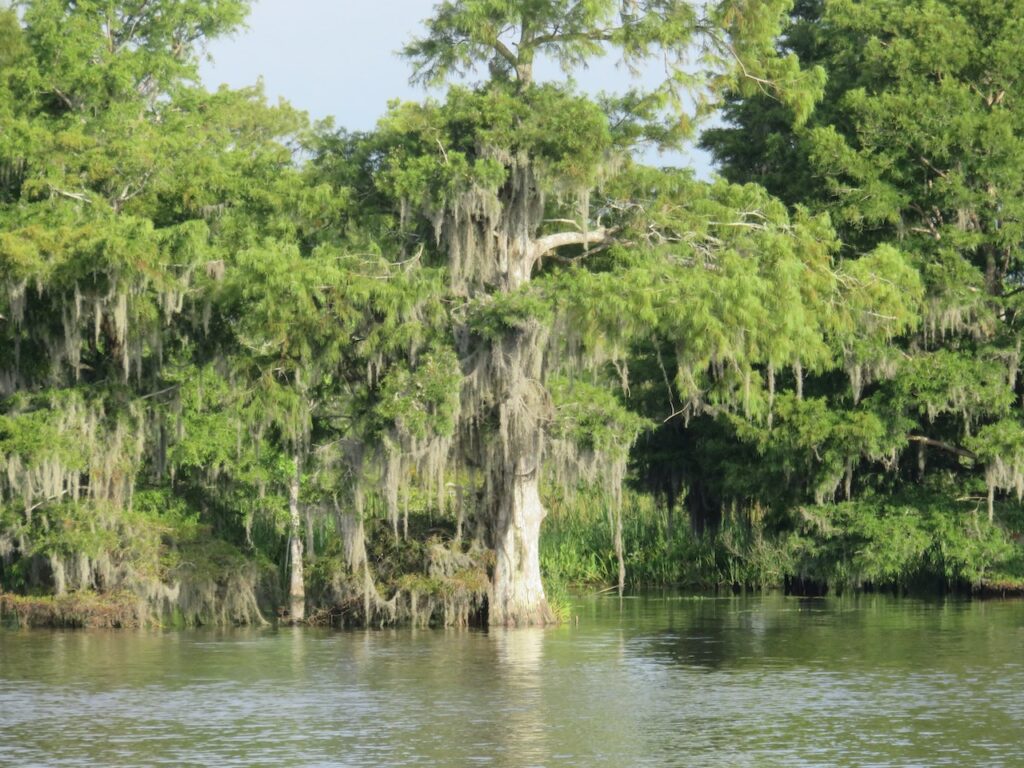
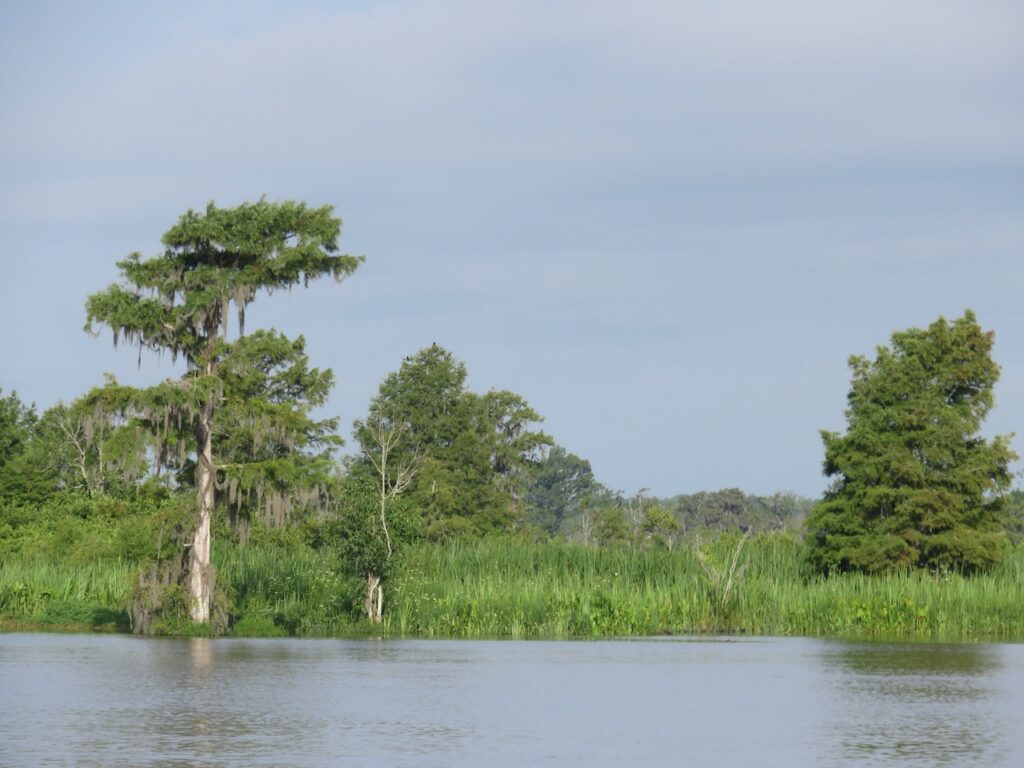
… the light…
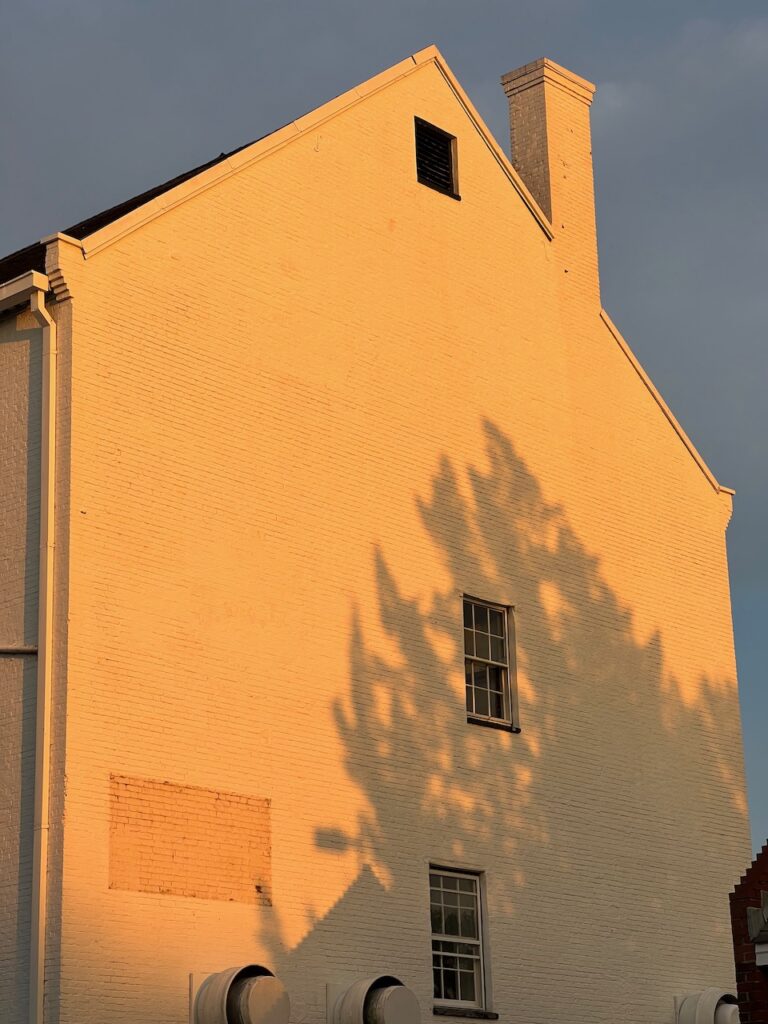
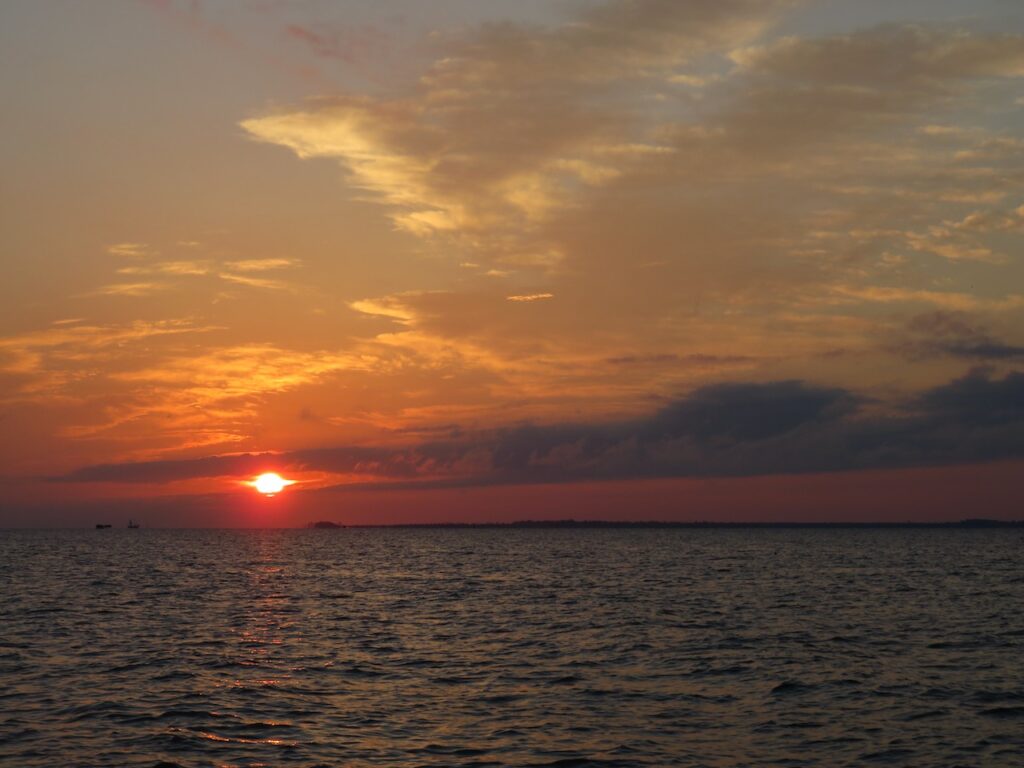
… so many things to see, we wore out our burgee.
